My most current blog entry:
Entries from July 1, 2018 - July 31, 2018
Schreiner's Iris Gardens
 Friday, July 6, 2018 at 11:43PM
Friday, July 6, 2018 at 11:43PM 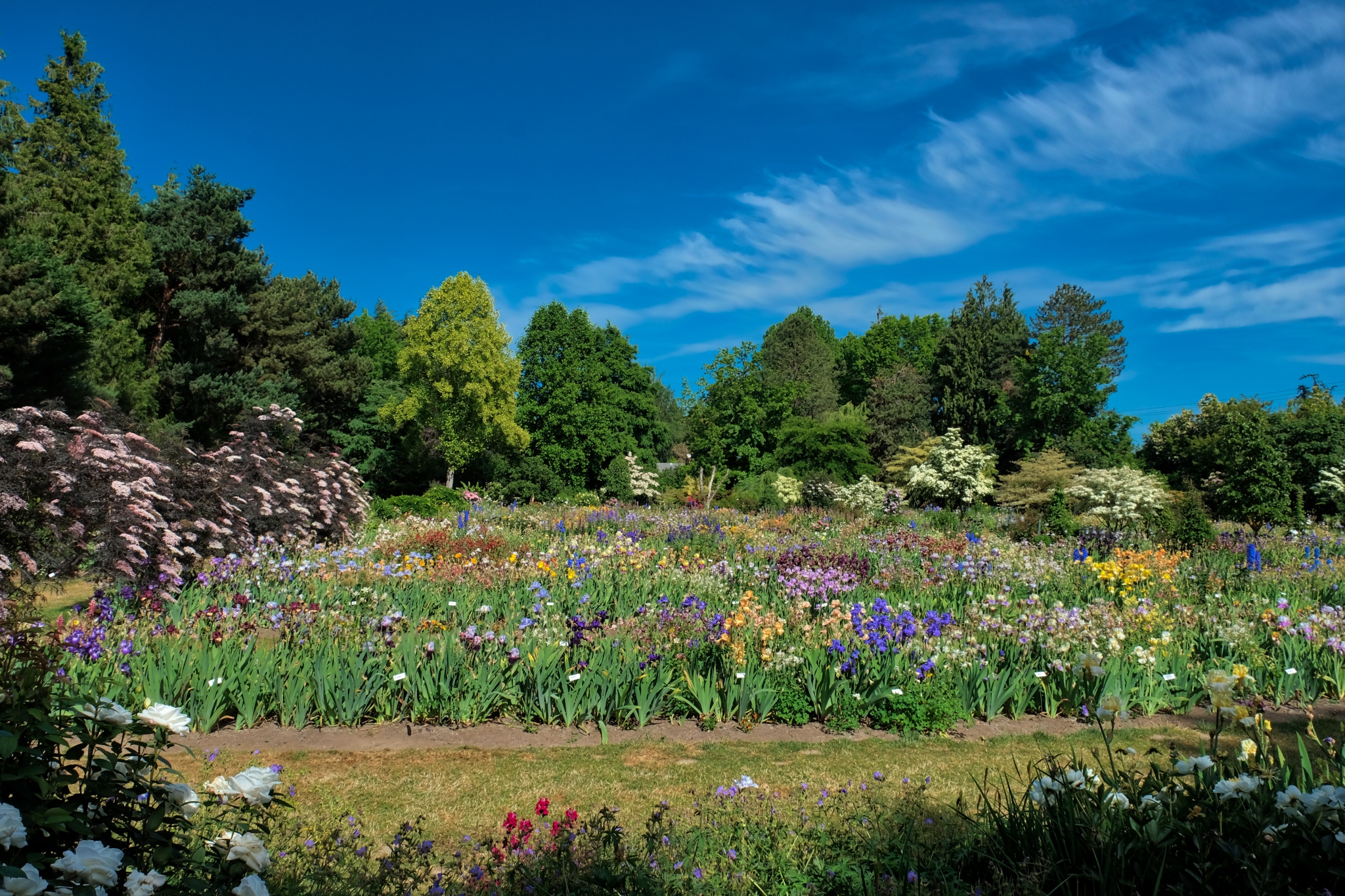 I spent a lovely day in early June at the amazing Schreiner's Iris Gardens outside of Keizer, in the beautiful Willamette Valley of Oregon.
I spent a lovely day in early June at the amazing Schreiner's Iris Gardens outside of Keizer, in the beautiful Willamette Valley of Oregon.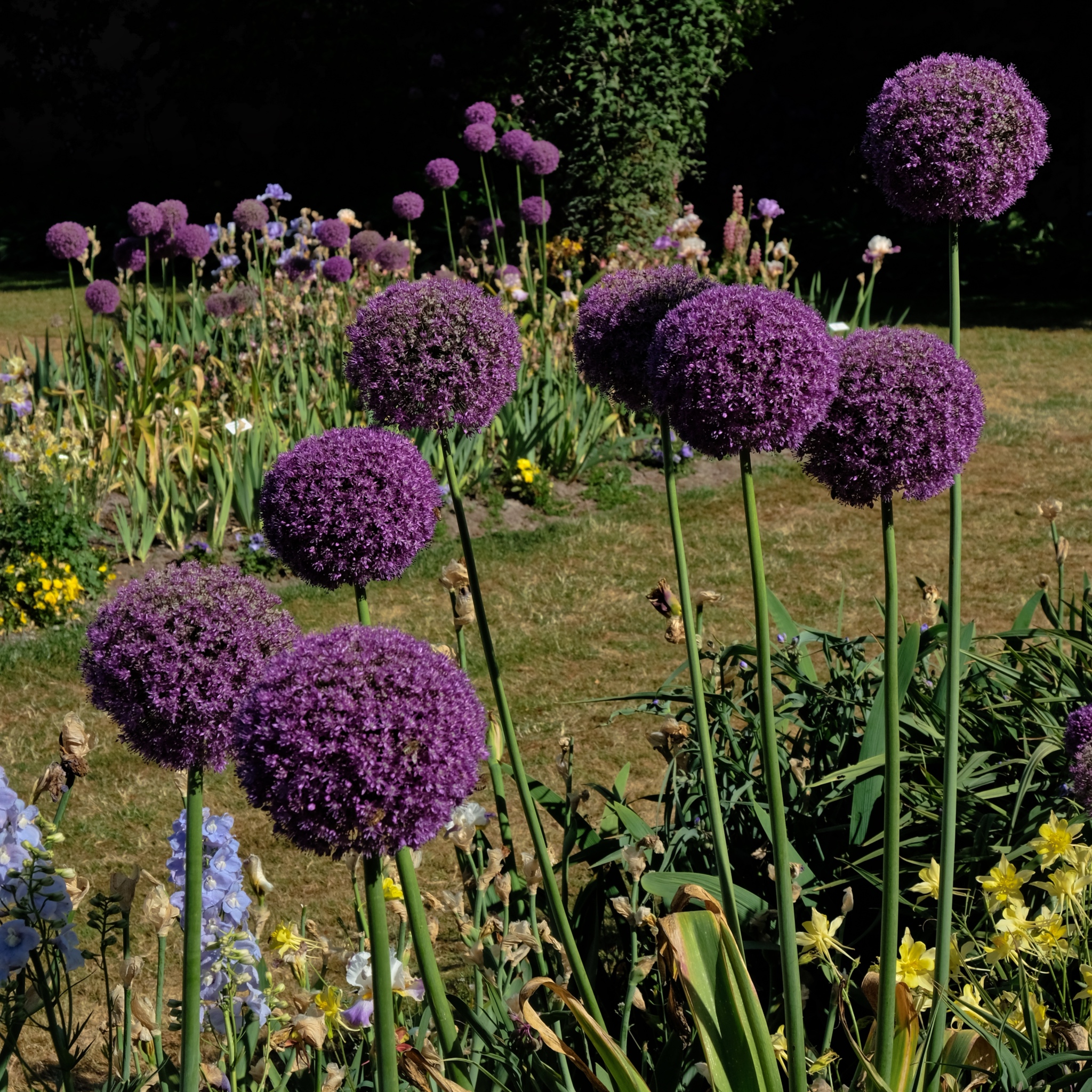 The garden holds flowers other than the iris . . . but first . . . the absolutely amazing iris:
The garden holds flowers other than the iris . . . but first . . . the absolutely amazing iris: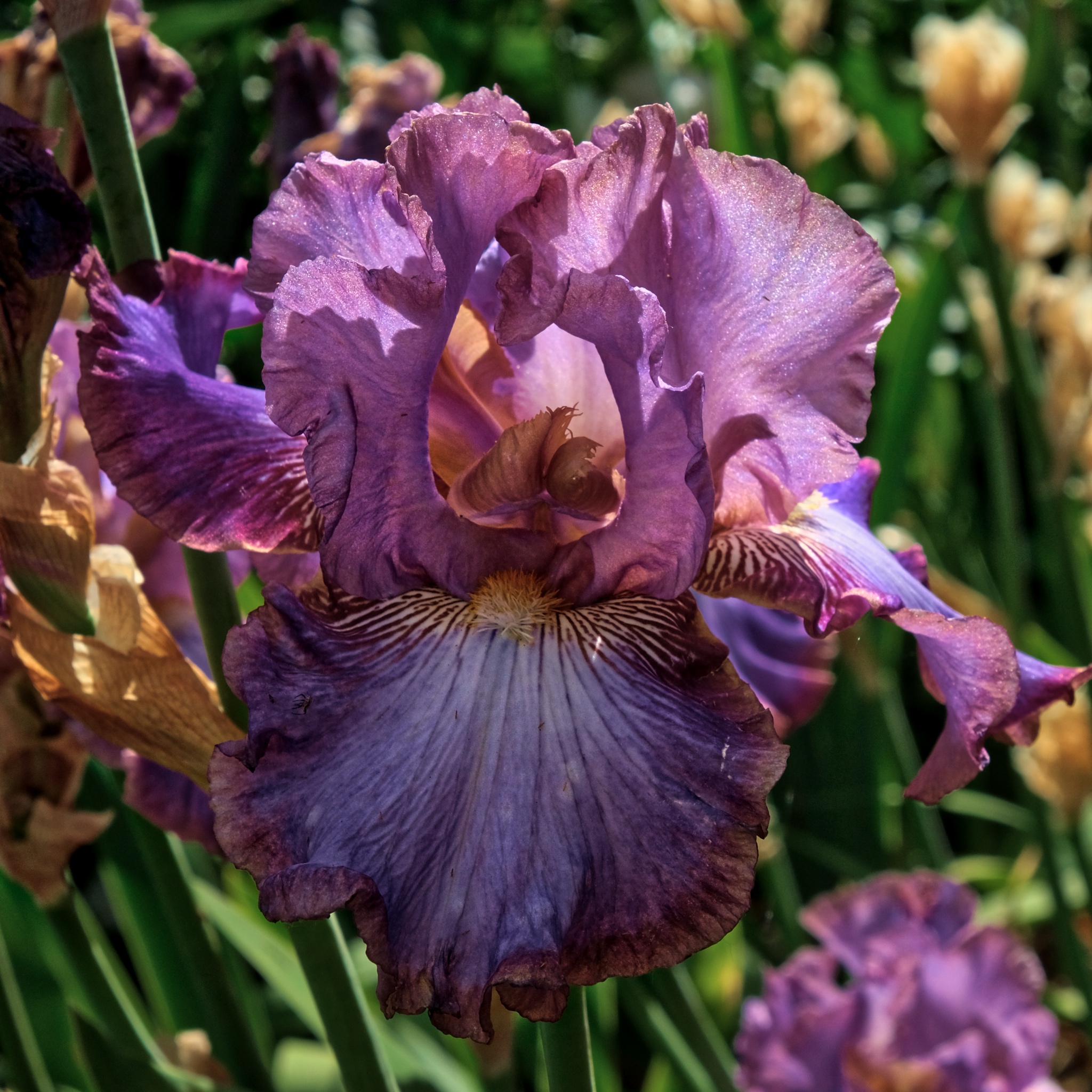 If you LOVE flowers as I do, and especially Irises (but not only), you will absolutely love this garden!!!
If you LOVE flowers as I do, and especially Irises (but not only), you will absolutely love this garden!!!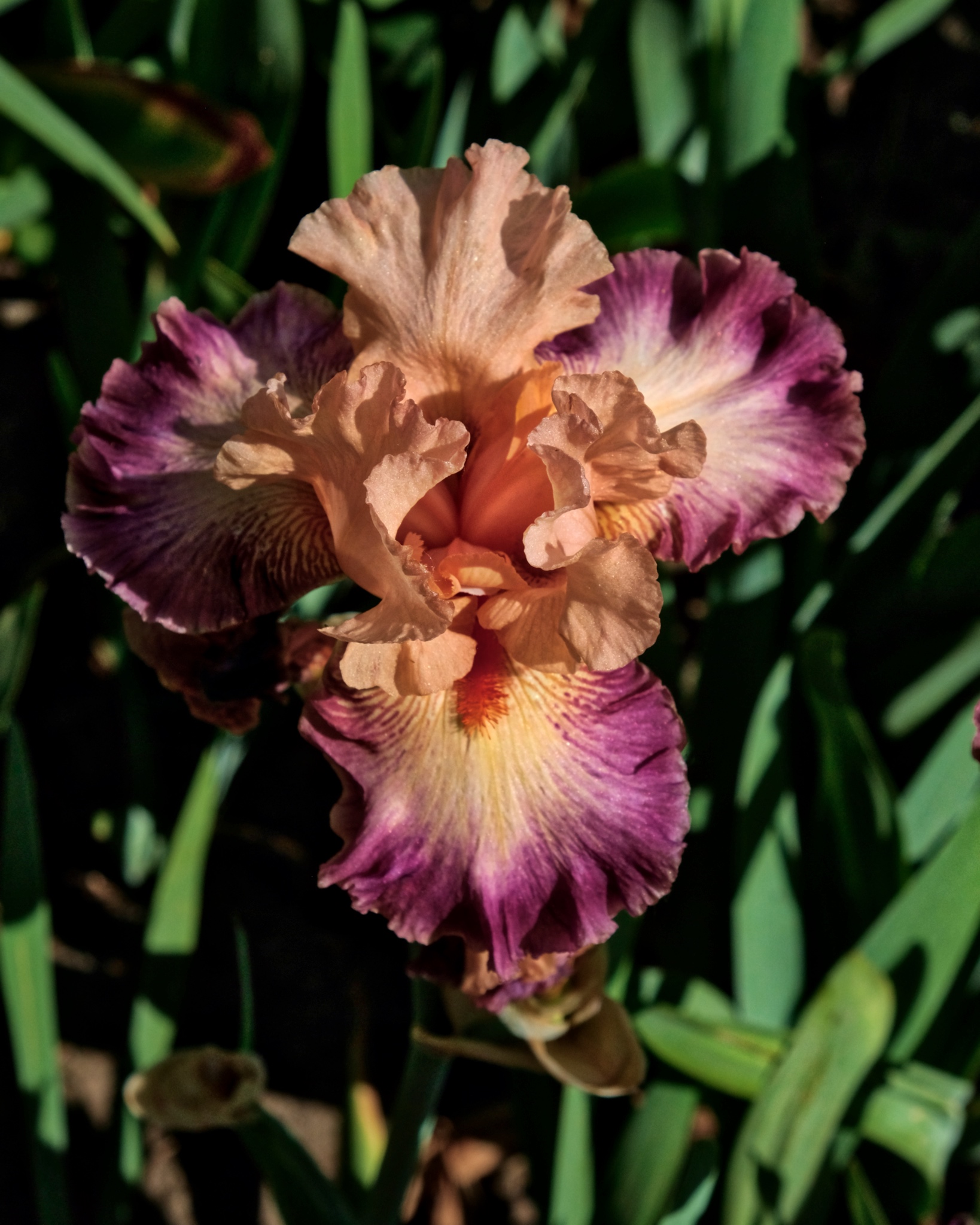 I did not know there were so many kinds of Irises!
I did not know there were so many kinds of Irises!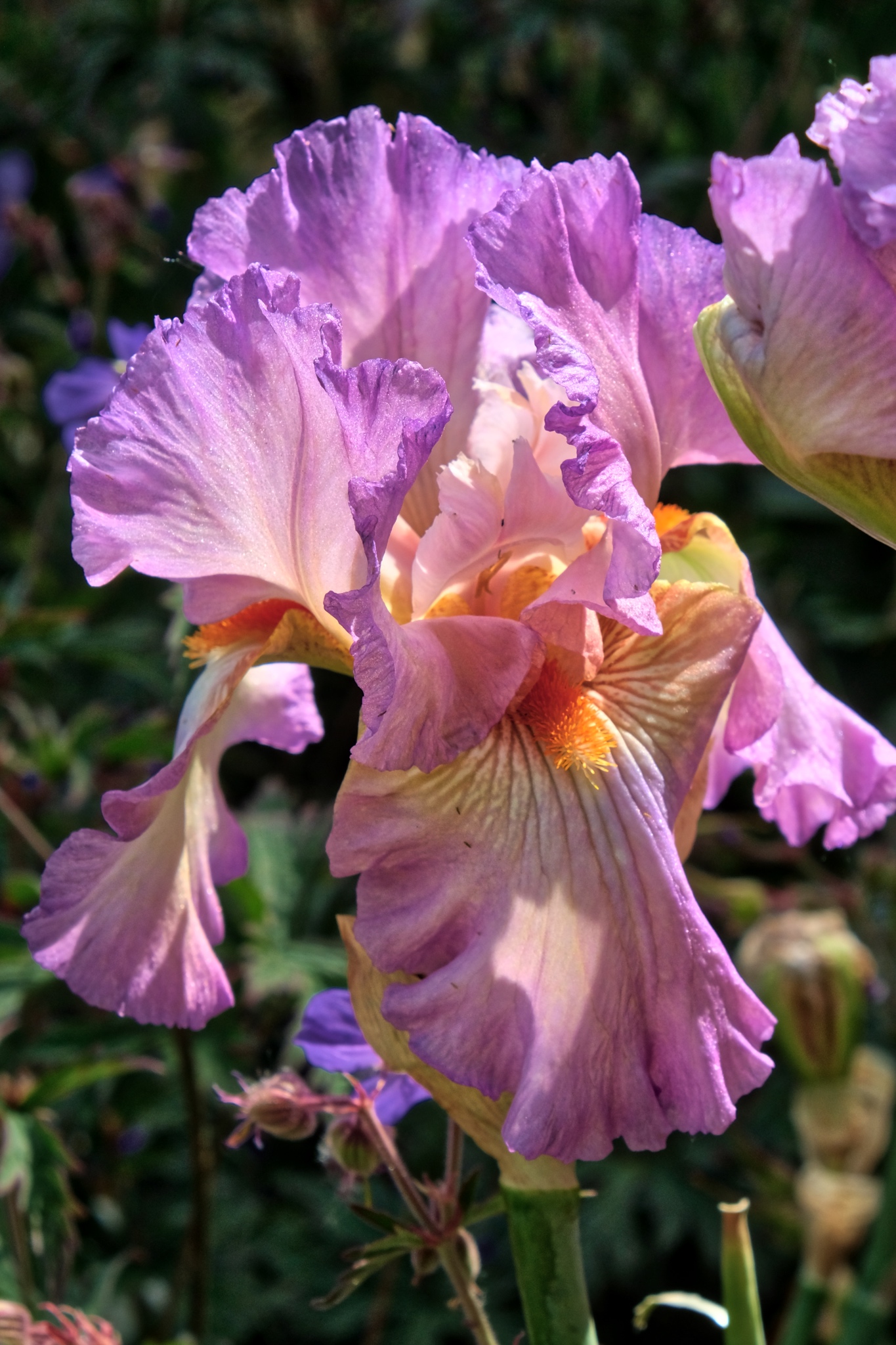 I rode my bike over to the gardens just kin time for the 'magic' evening light . . . and was rewarded!
I rode my bike over to the gardens just kin time for the 'magic' evening light . . . and was rewarded!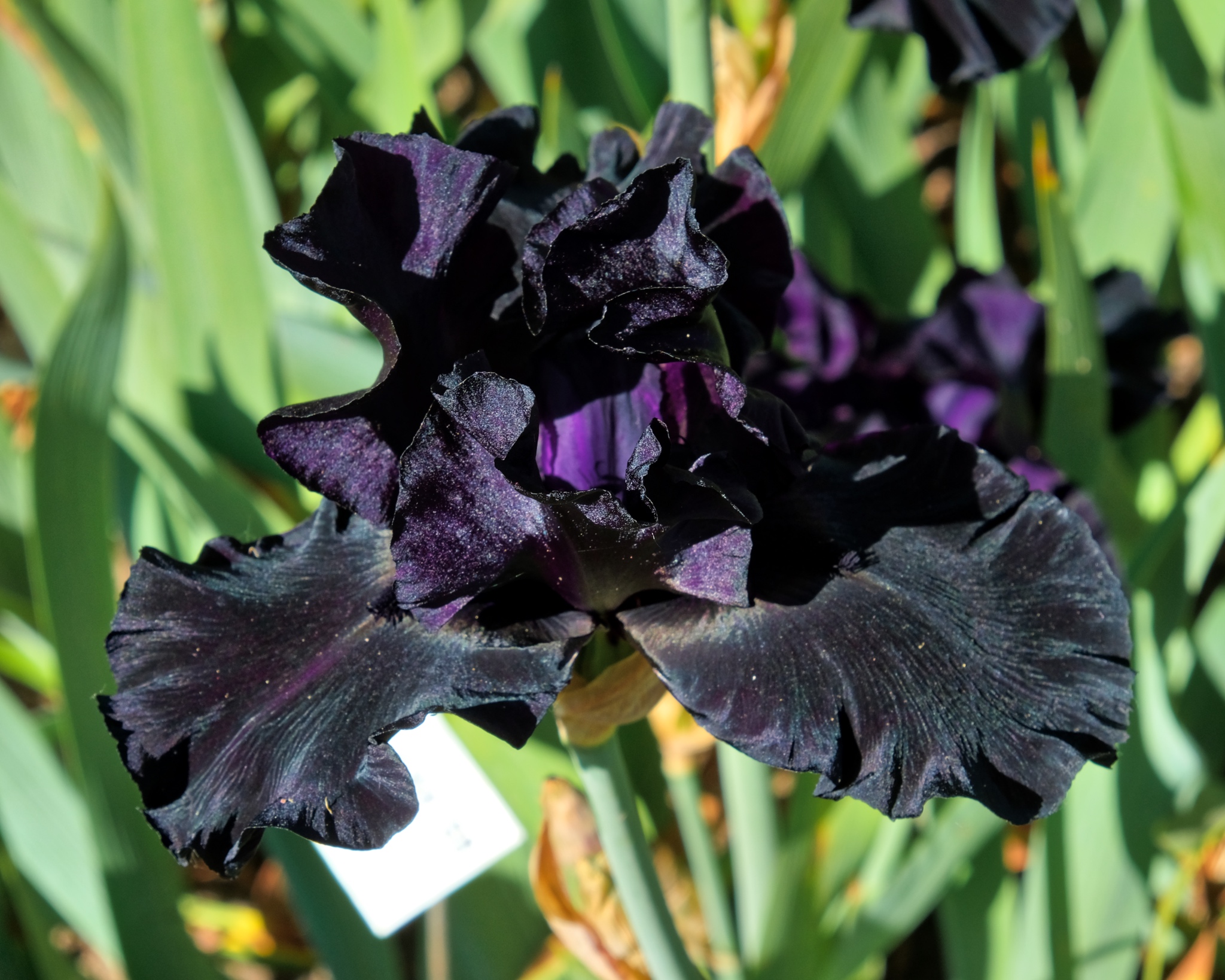 Yes, there are even BLACK irises!
Yes, there are even BLACK irises!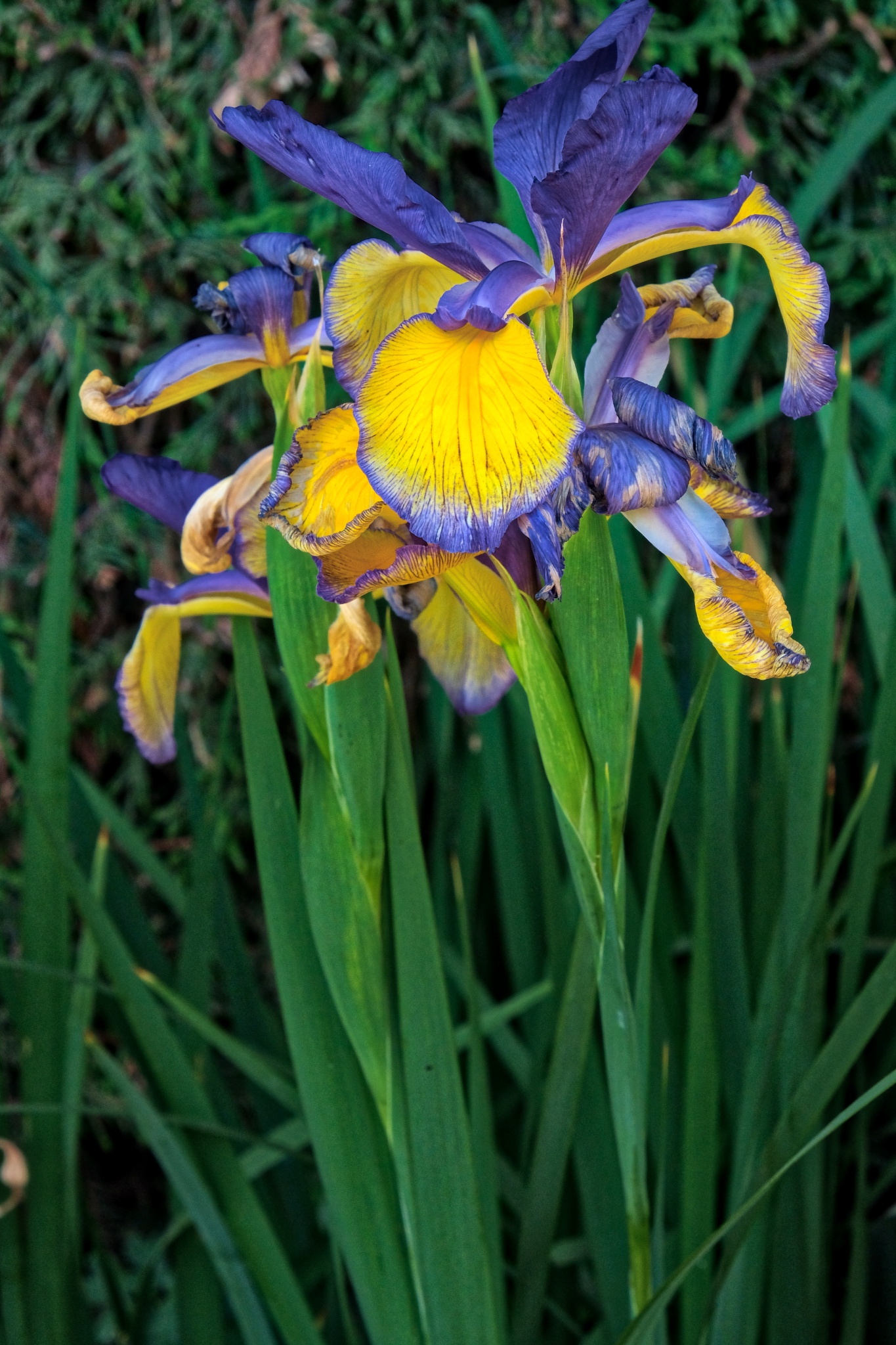 When I think of Irises these are what I usually picture . . .
When I think of Irises these are what I usually picture . . .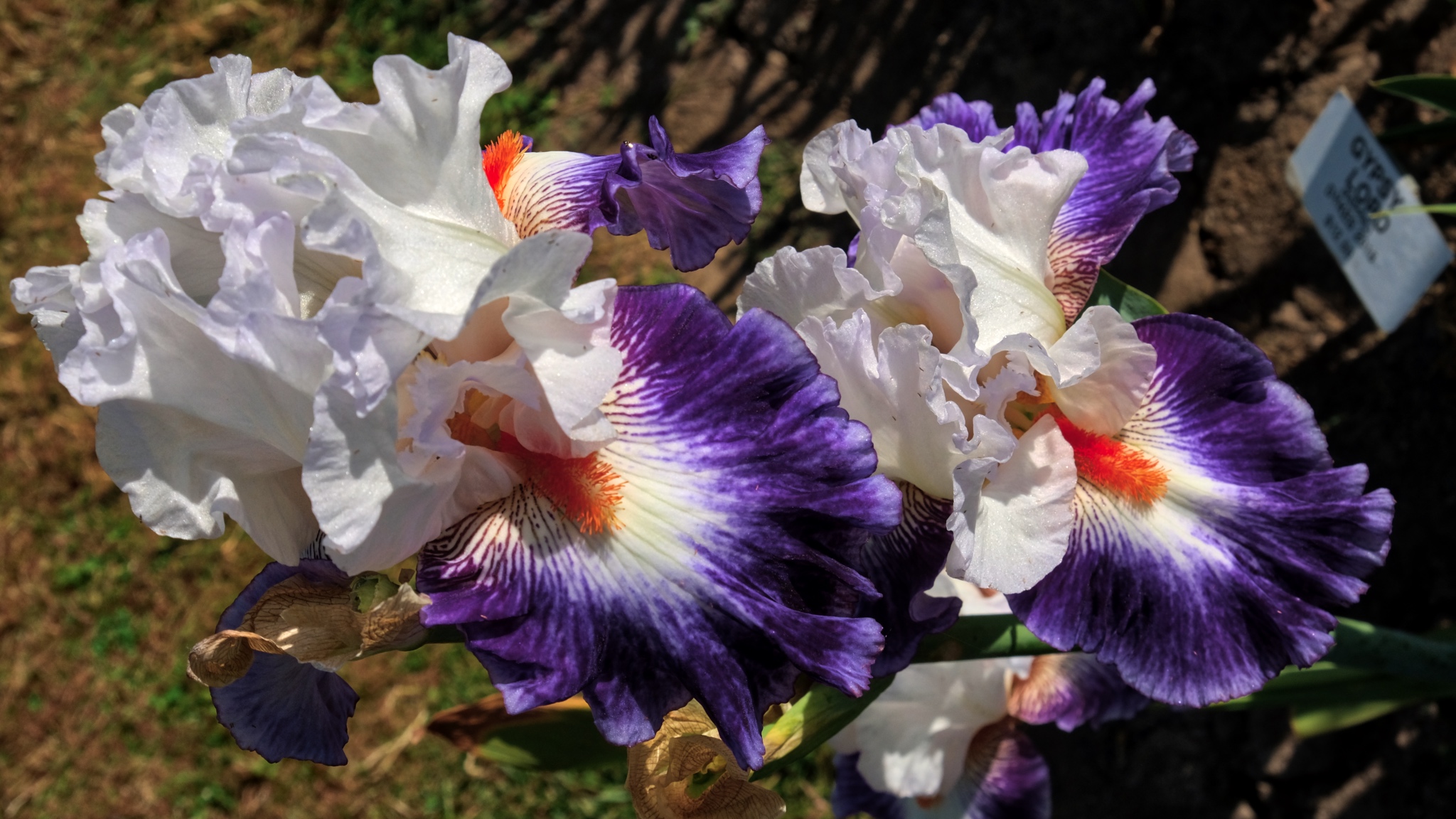 . . . I DO NOT usually think of these . . . Gypsy Lobo Iris. WOW!
. . . I DO NOT usually think of these . . . Gypsy Lobo Iris. WOW!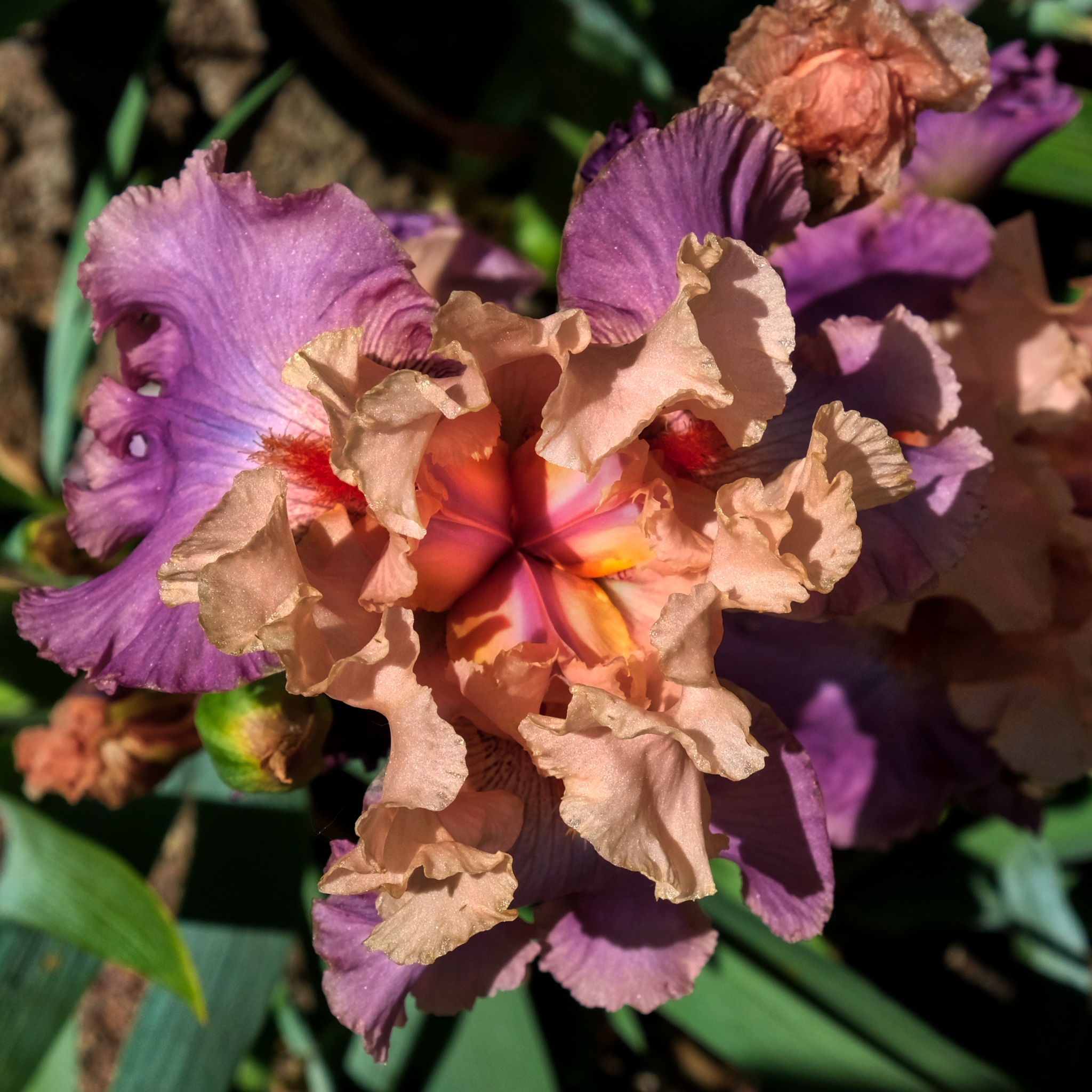 The heart of an amazing iris!
The heart of an amazing iris!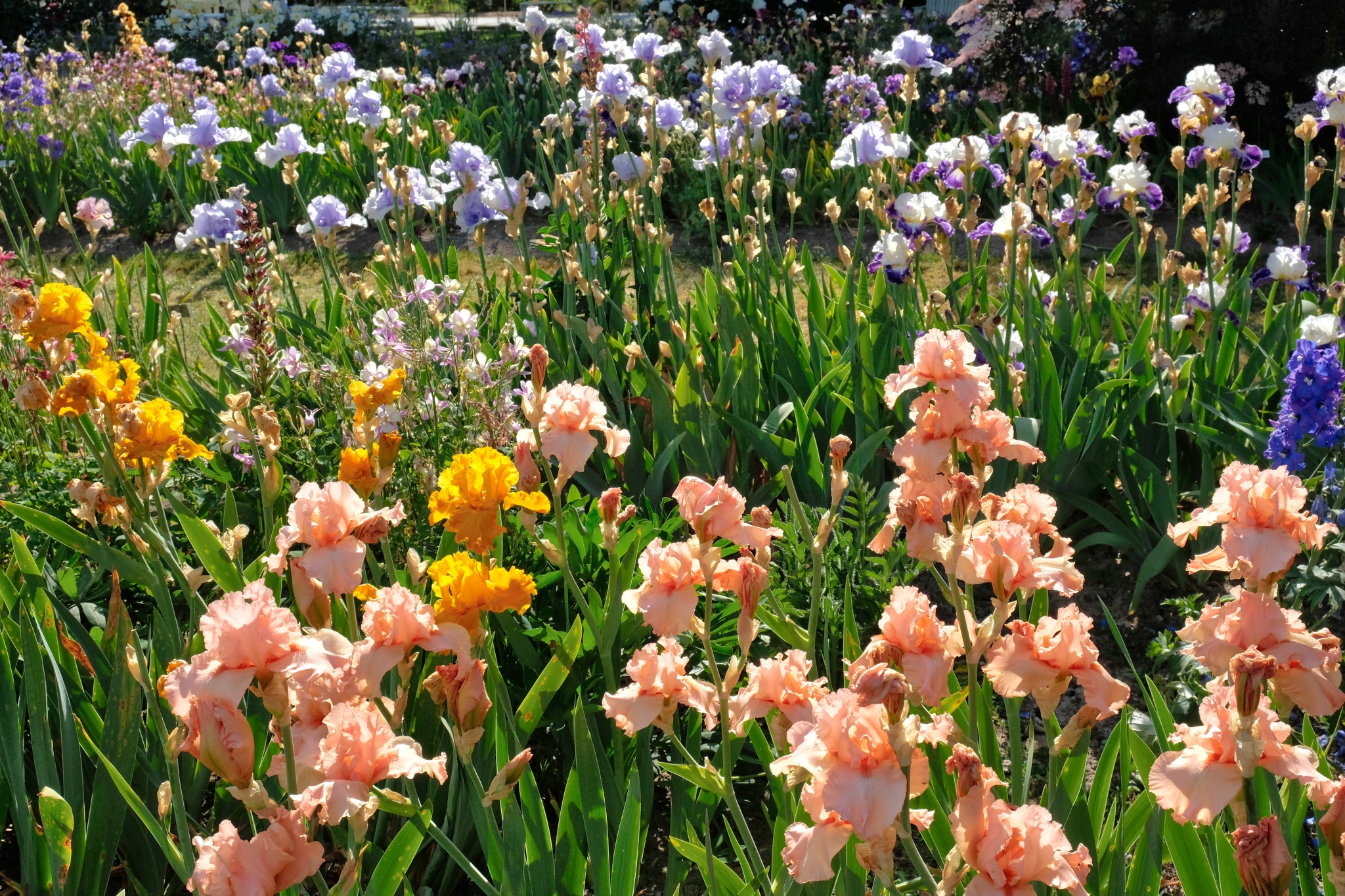 There were so many flowers to study . . .
There were so many flowers to study . . .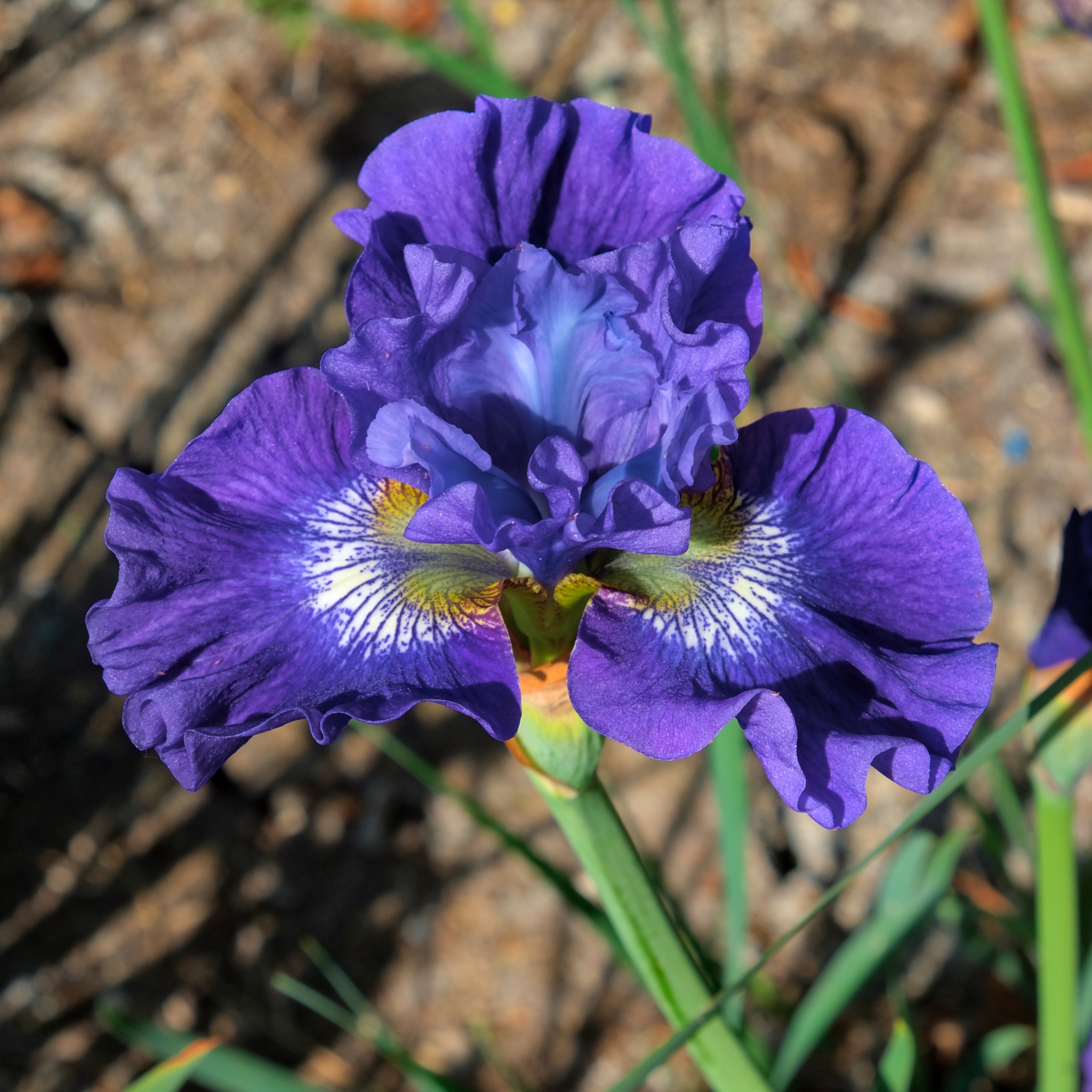 A purple/blue iris.
A purple/blue iris.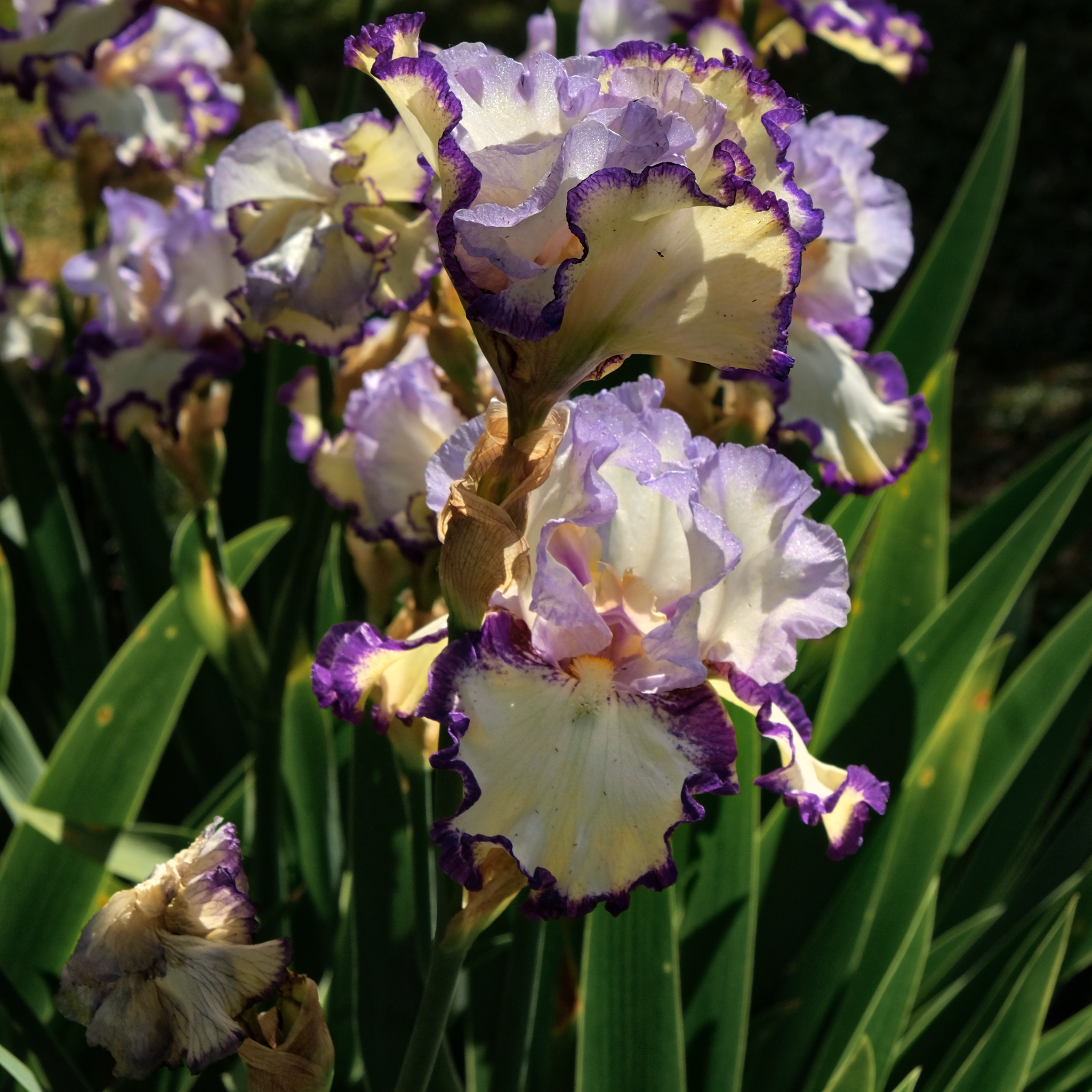 A jumble of white and purple irises.
A jumble of white and purple irises. The combination of colors seemed endless.
The combination of colors seemed endless.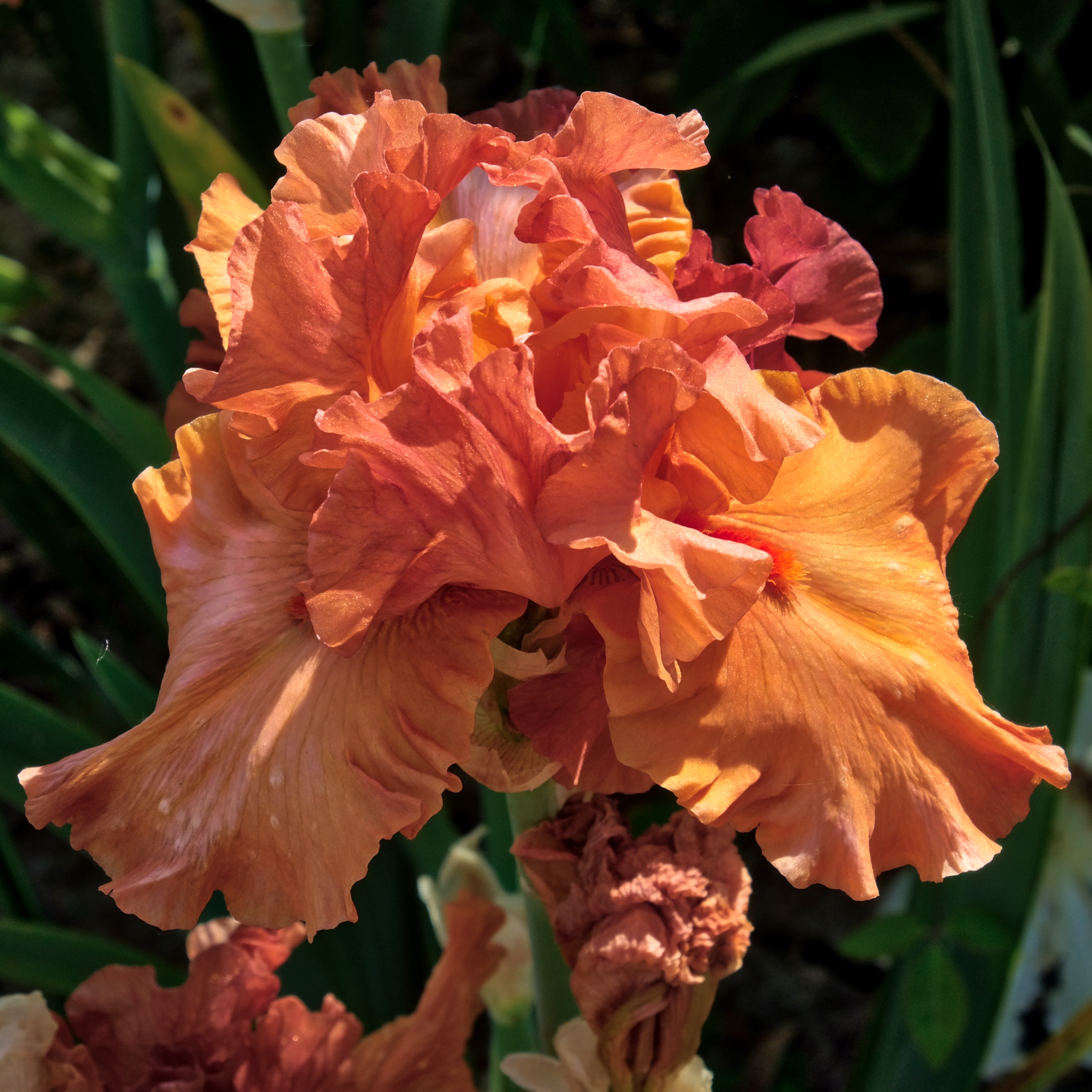 An orange iris.
An orange iris.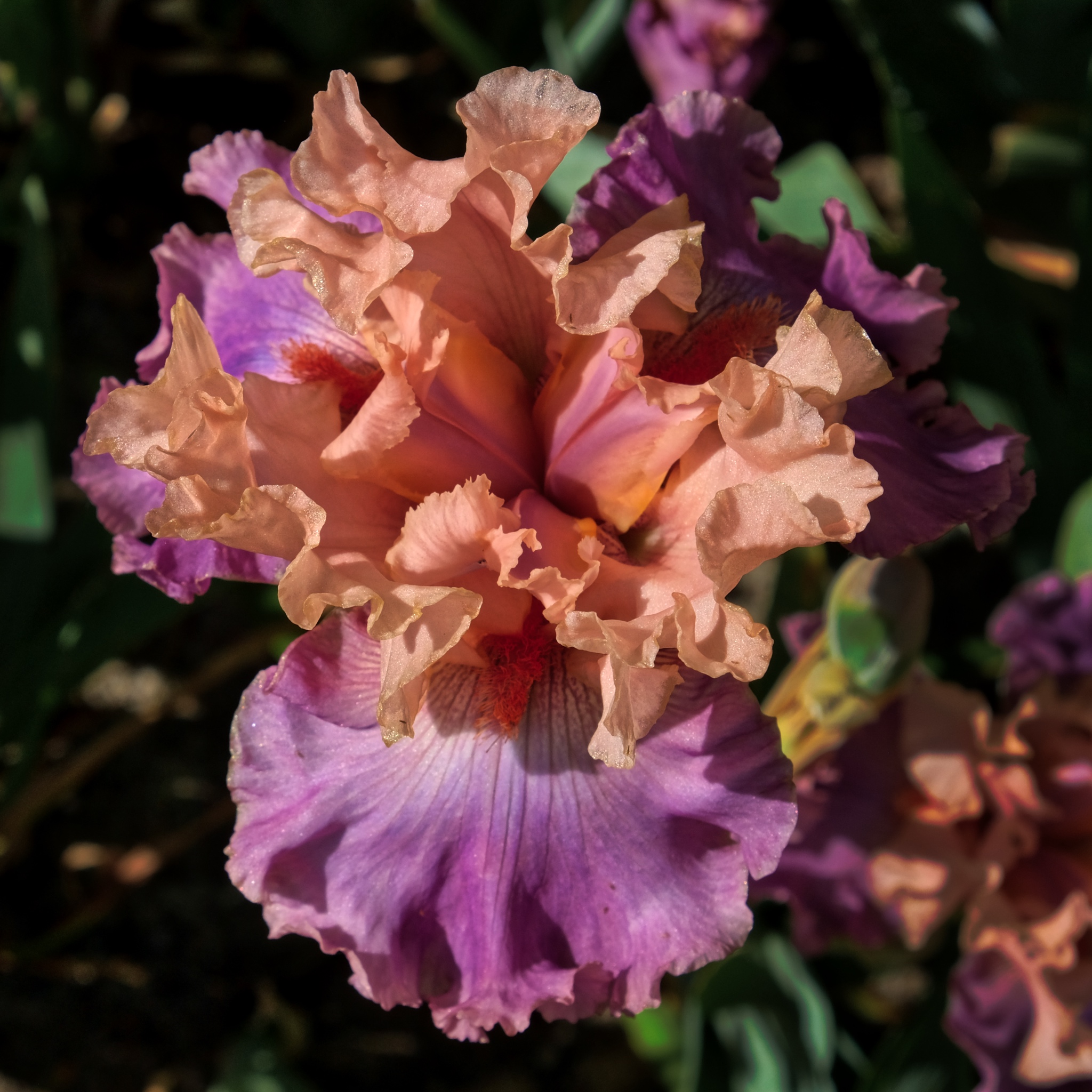 An orange and purple iris.
An orange and purple iris.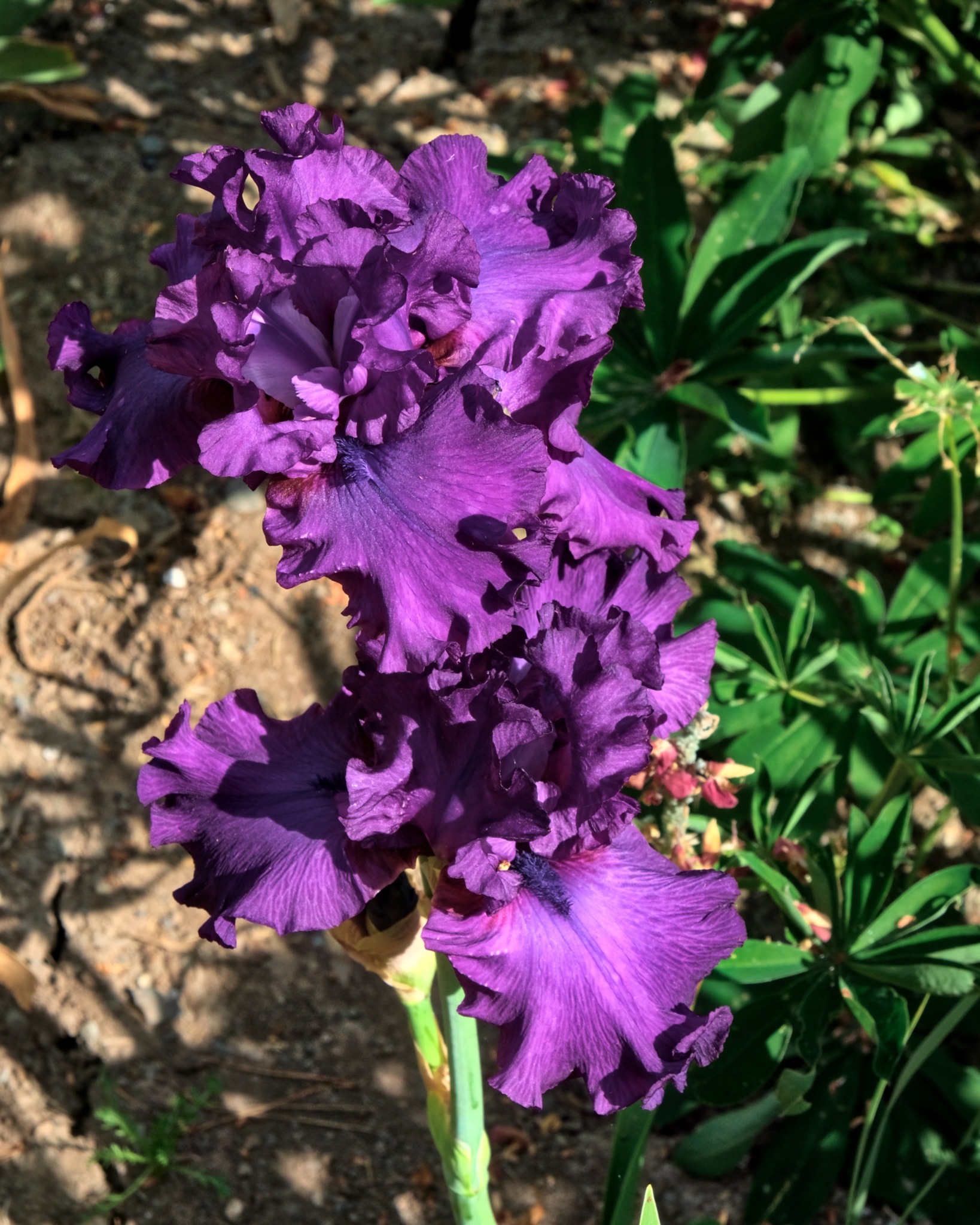 A purple iris . . .
A purple iris . . .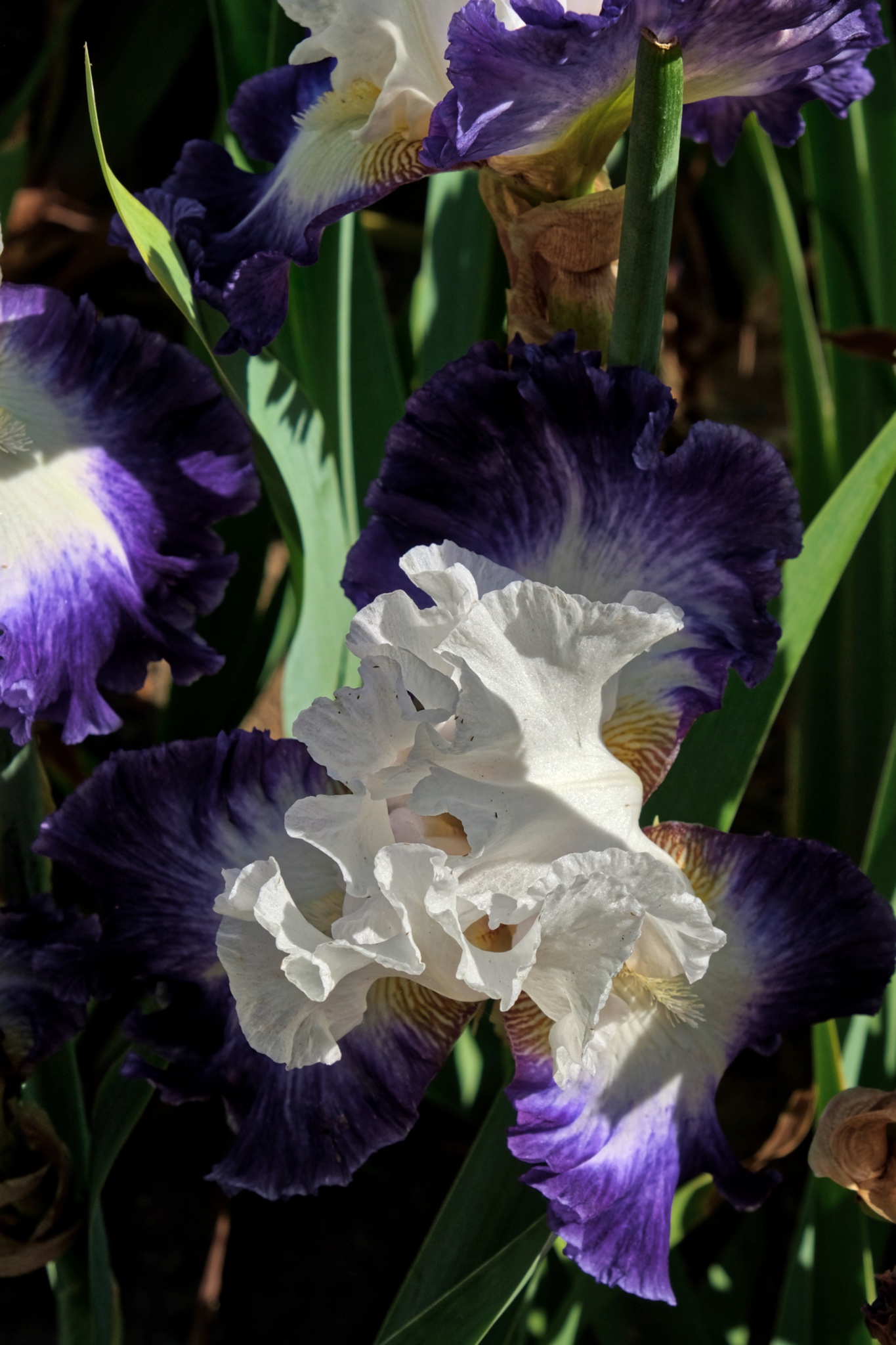 Purple and white . . .
Purple and white . . .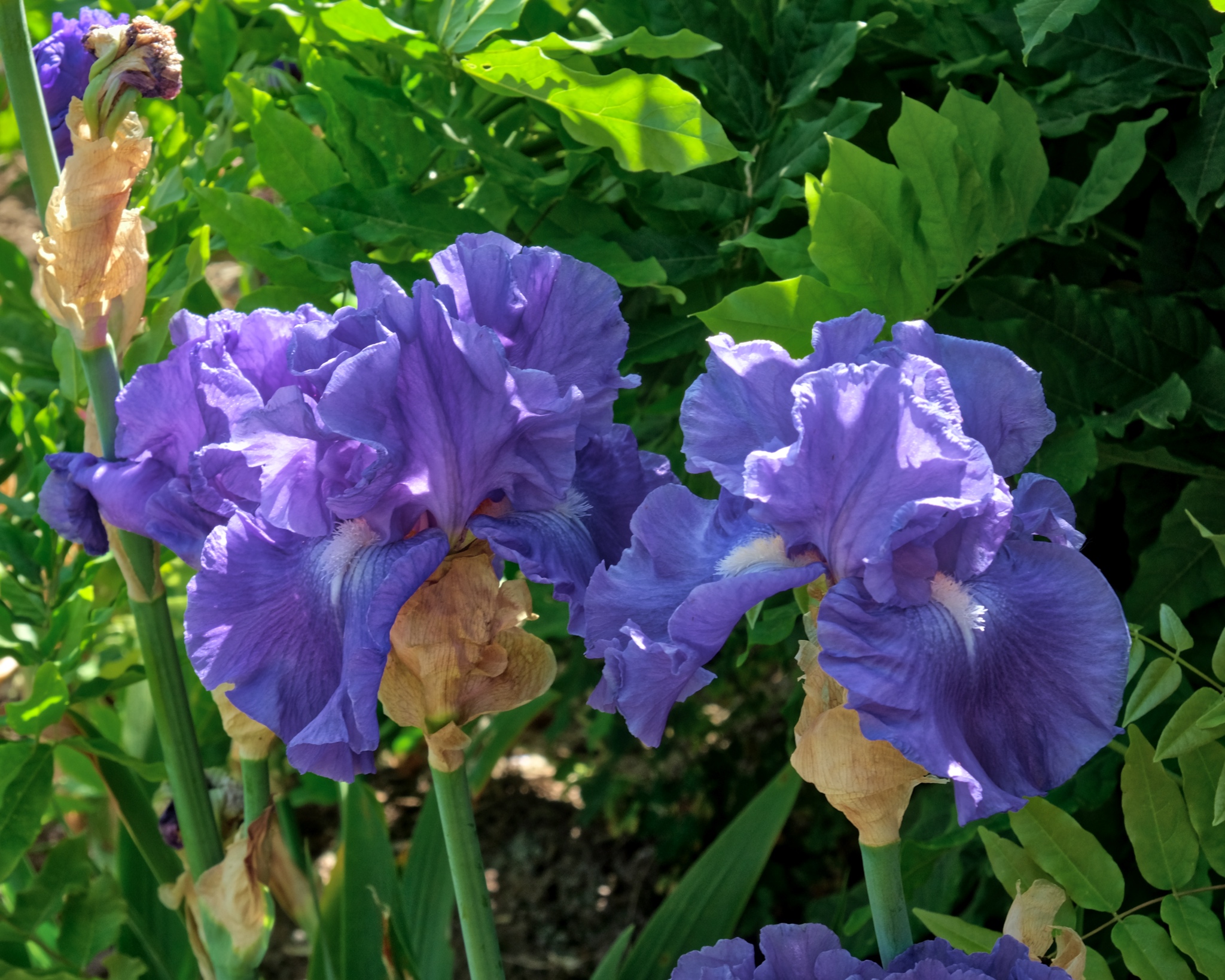 Many shades of color . . .
Many shades of color . . .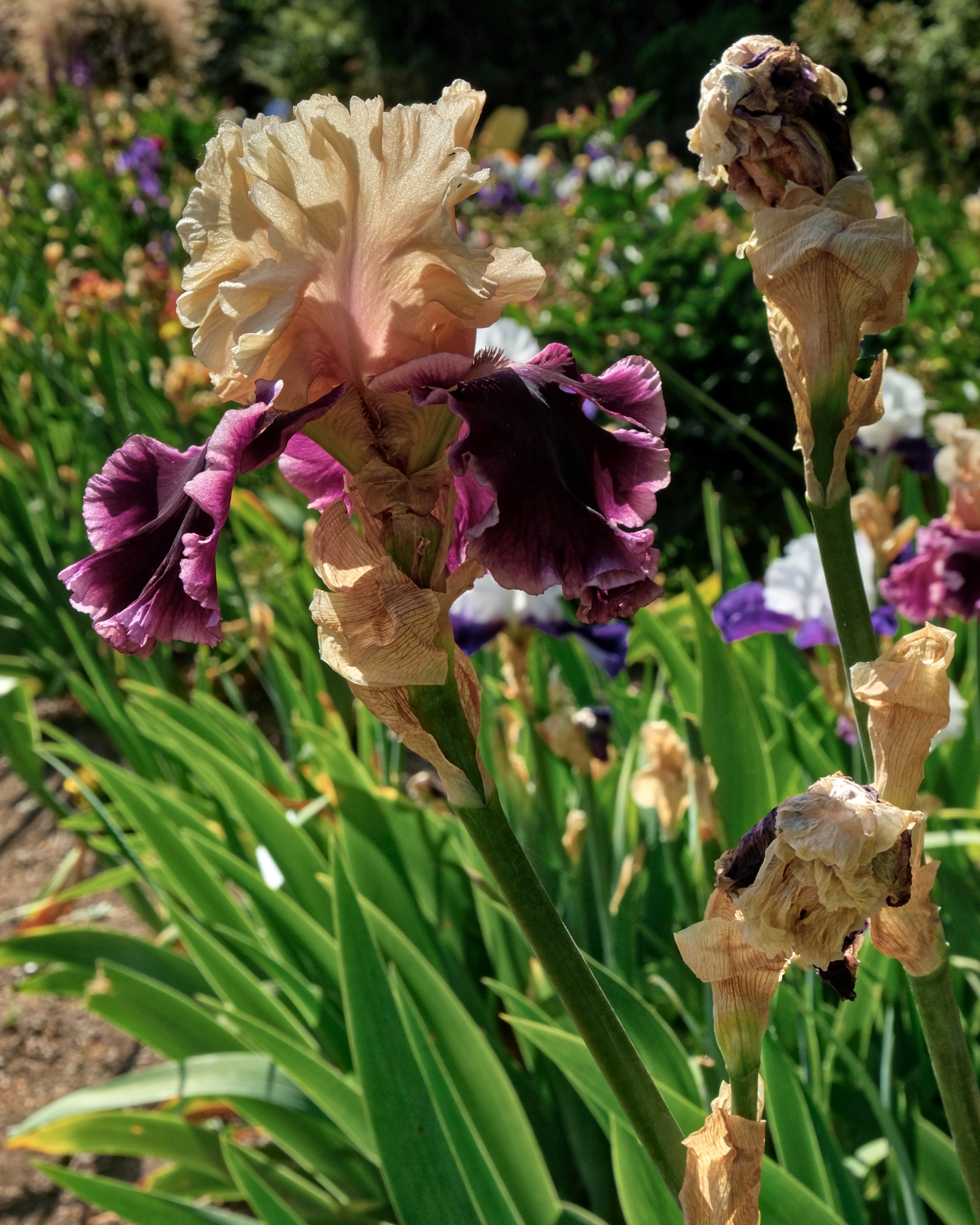 The marvelous iris!
The marvelous iris!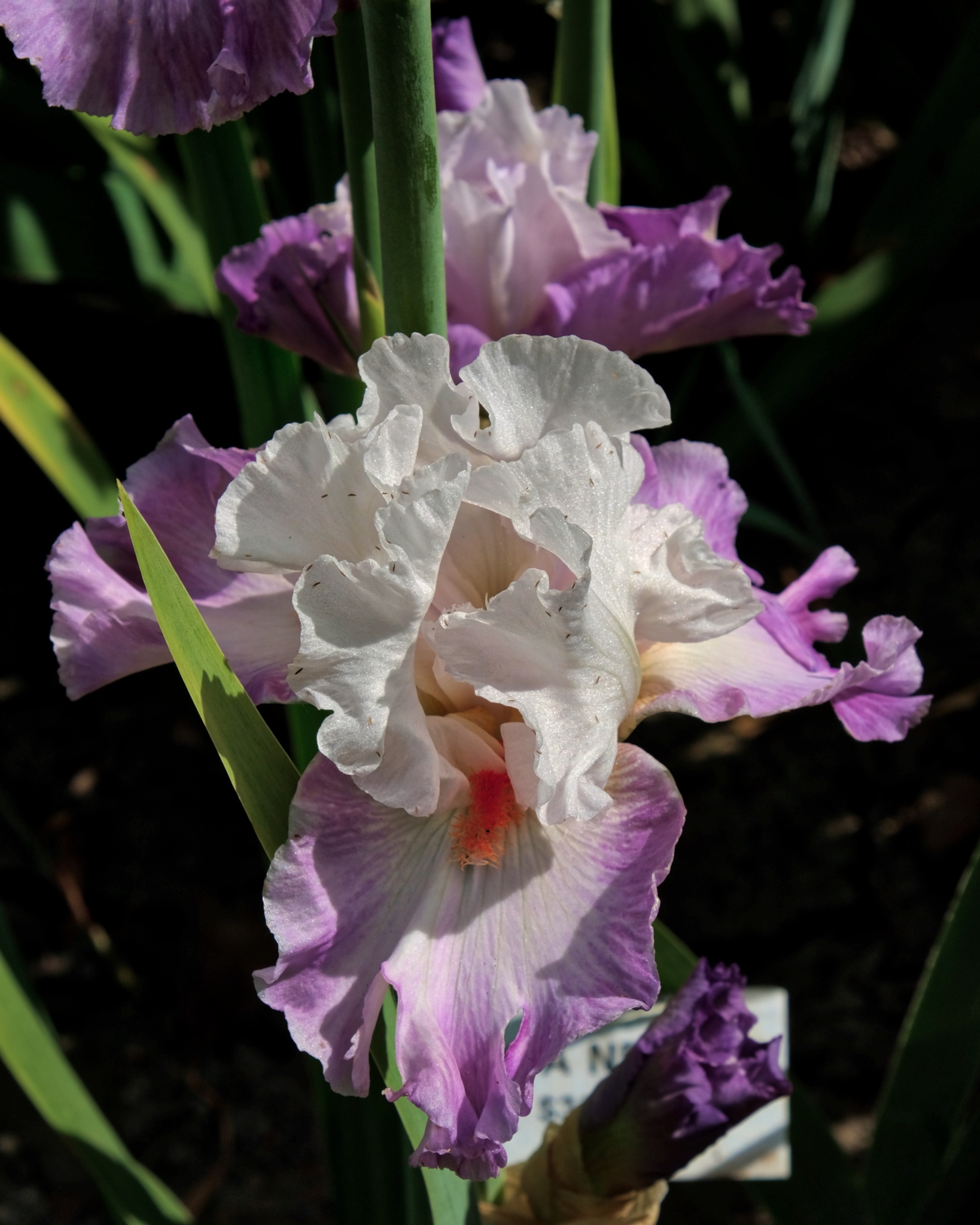 The whites were so pure against the purple . . .
The whites were so pure against the purple . . .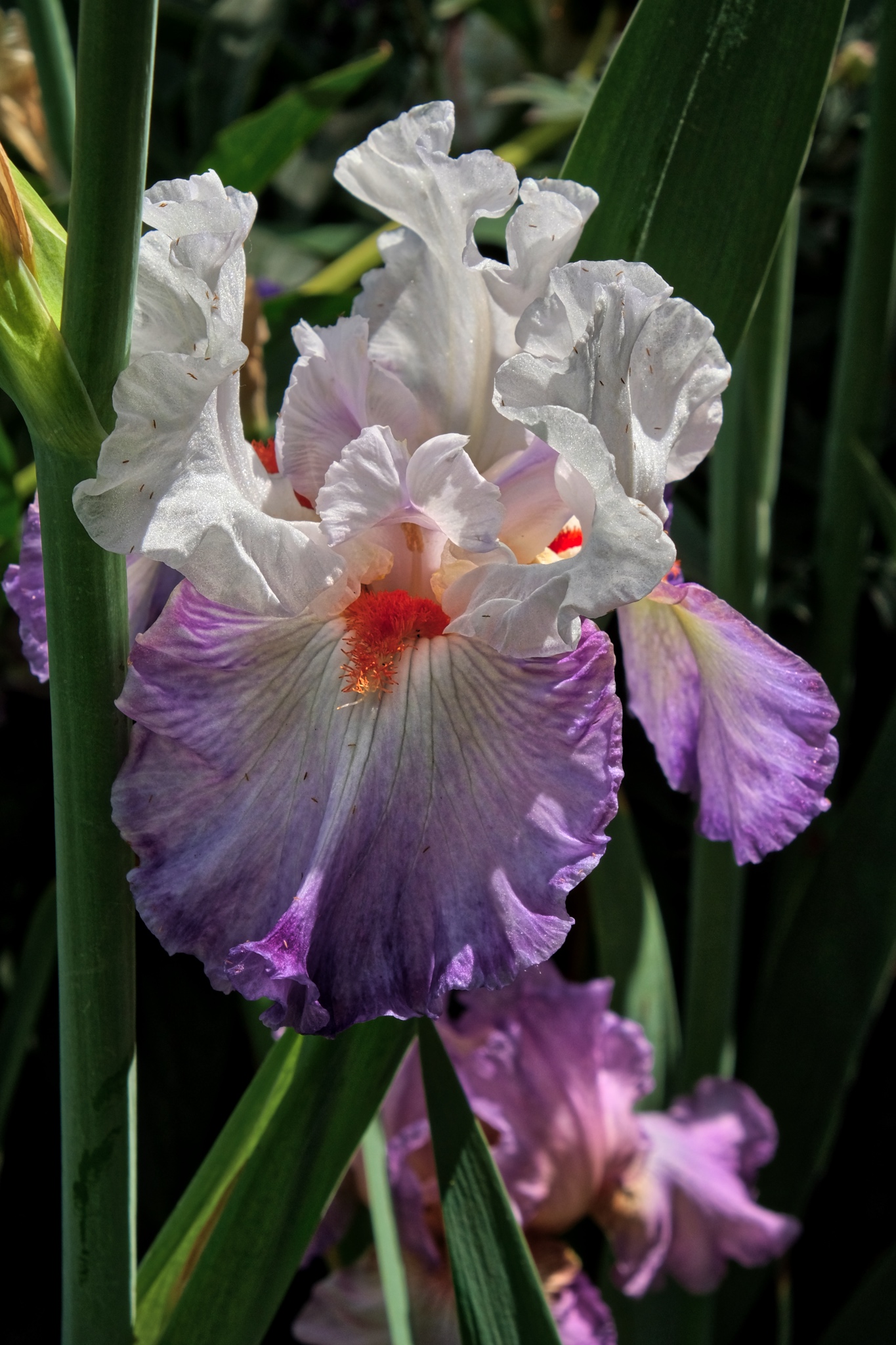 A splash of orange at the center . . .
A splash of orange at the center . . .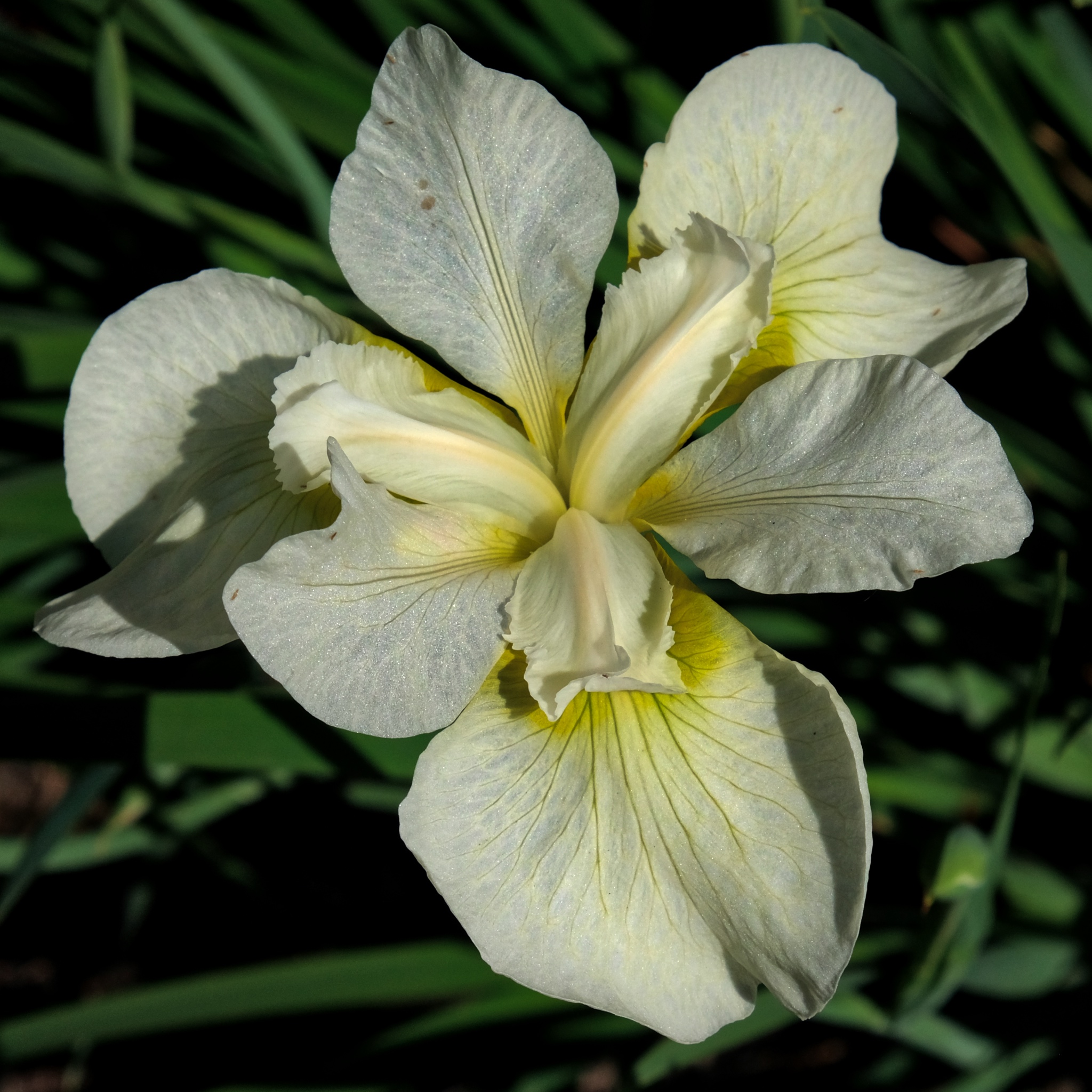 An otherworldly iris!!!
An otherworldly iris!!!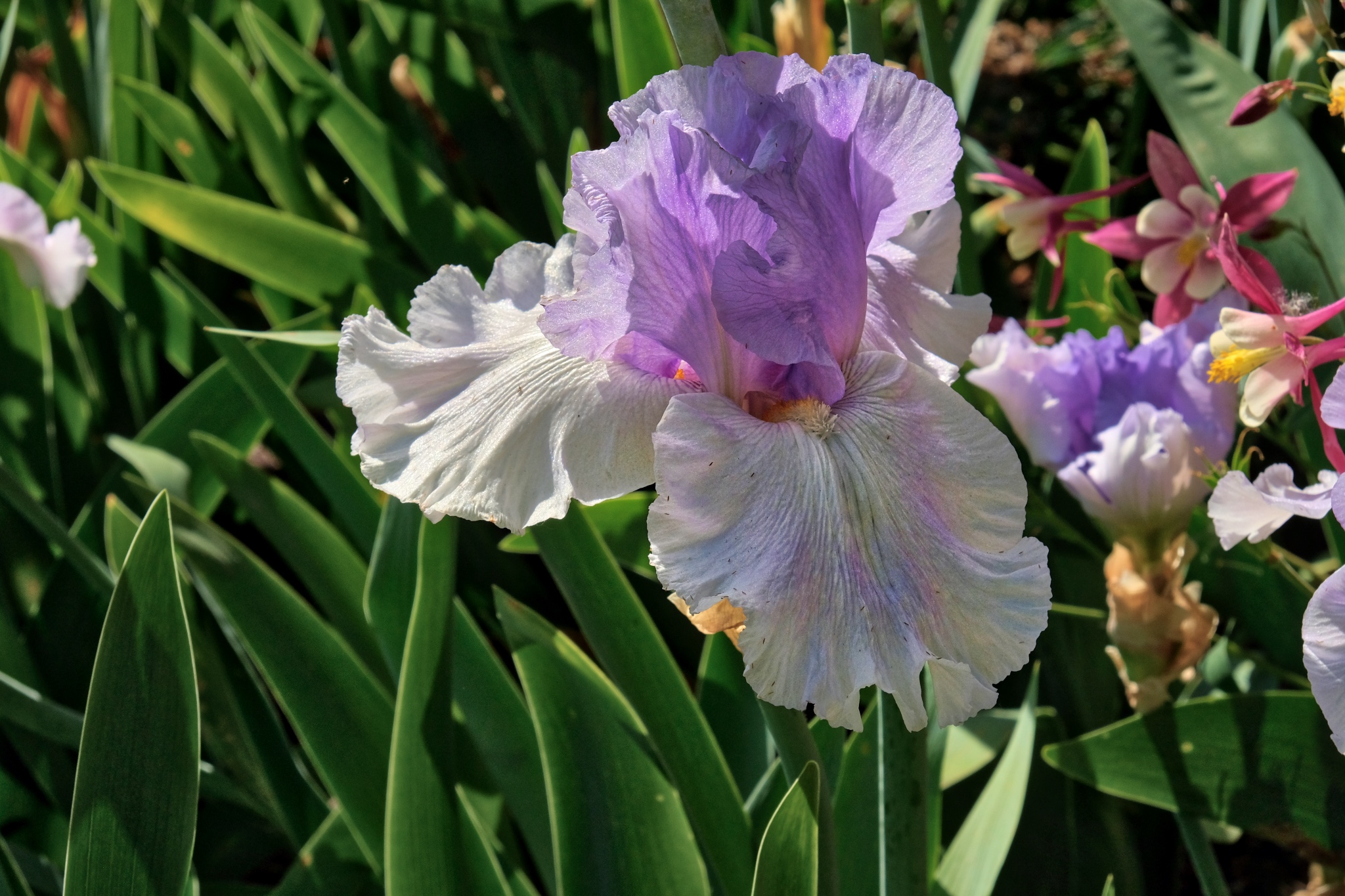 Such a beautiful array of irises.
Such a beautiful array of irises.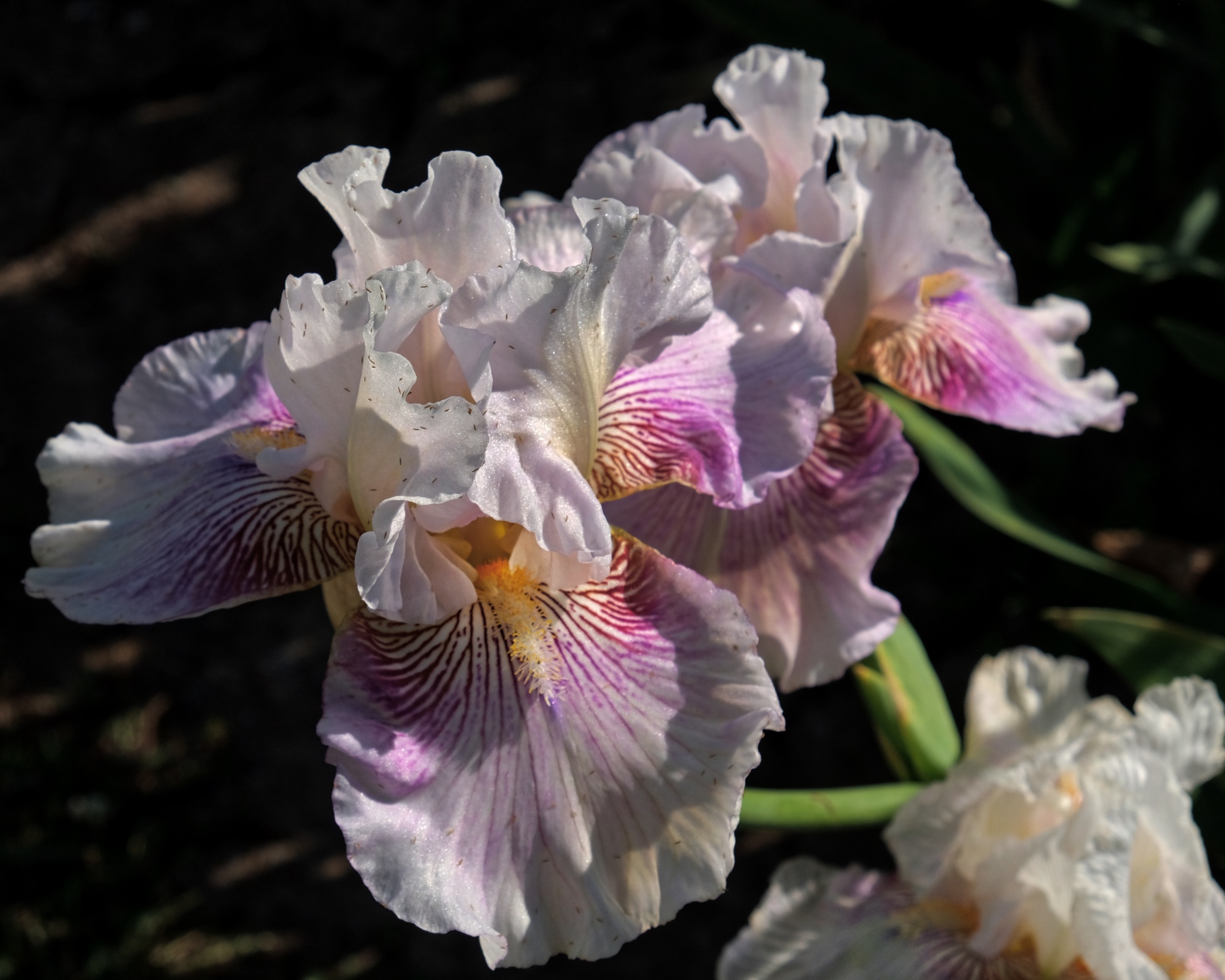 White, yellow, magenta, and purple . . .wow!
White, yellow, magenta, and purple . . .wow!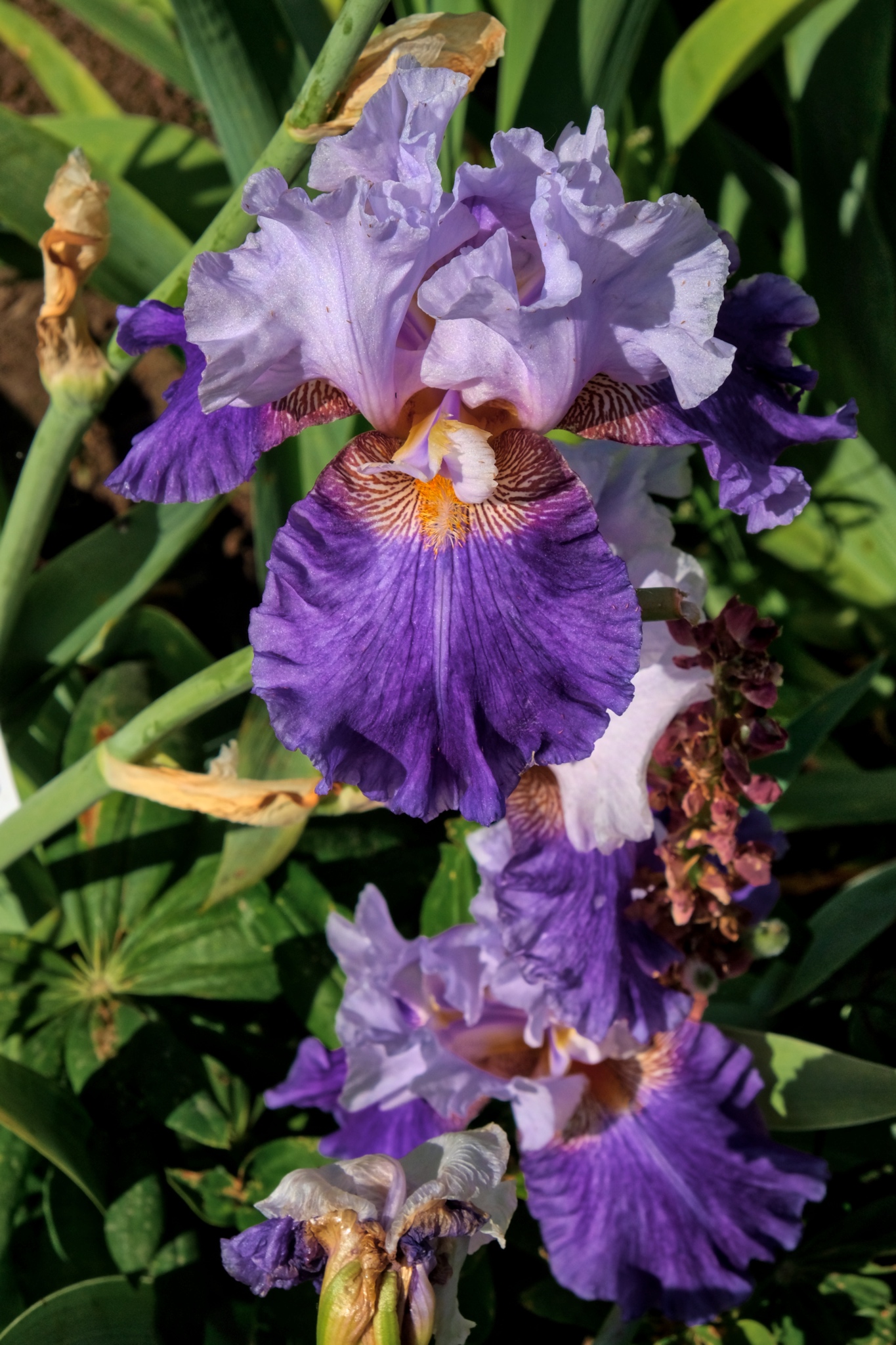 Pattern, color, shape . . .
Pattern, color, shape . . .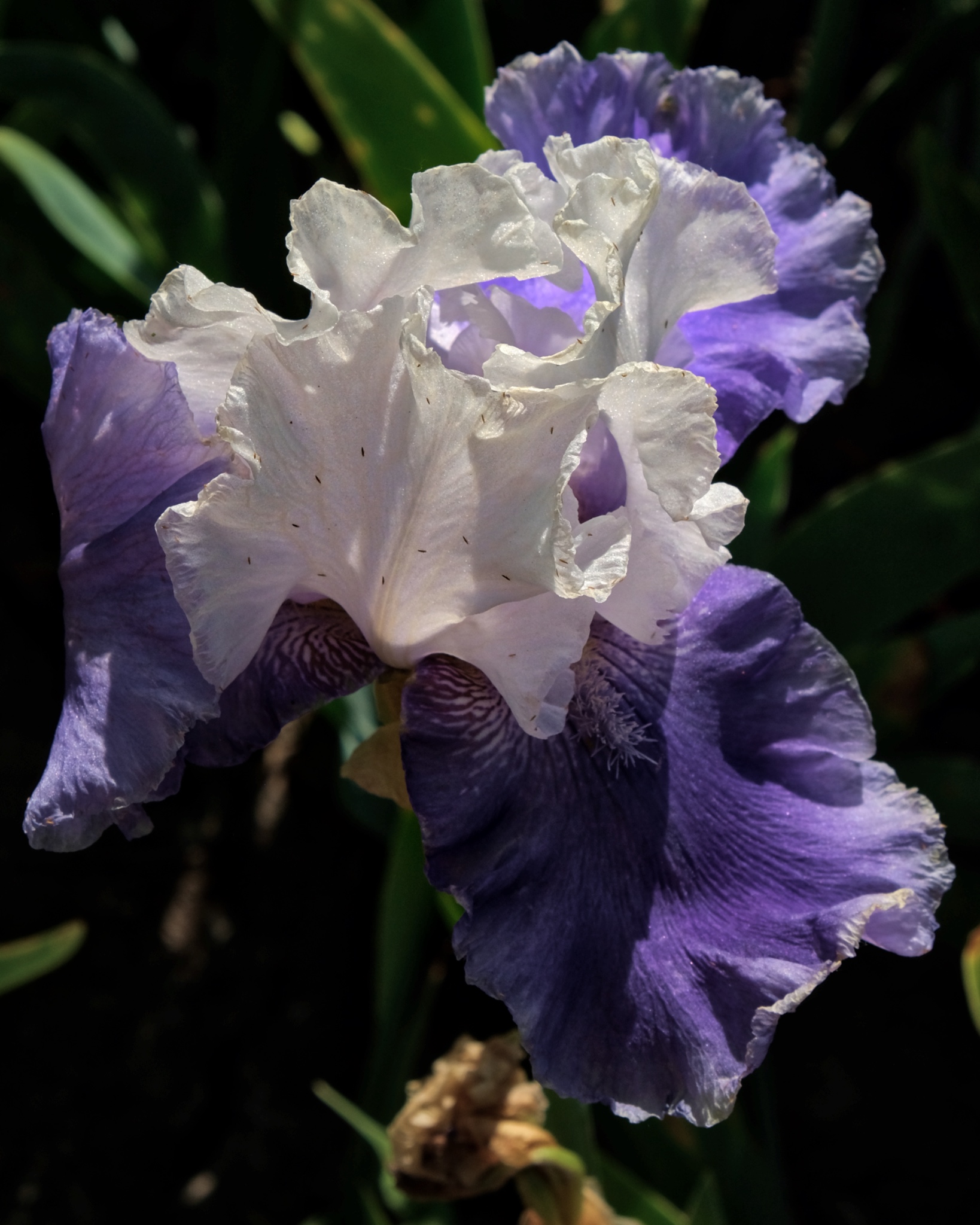 Delicate and fine . . .
Delicate and fine . . .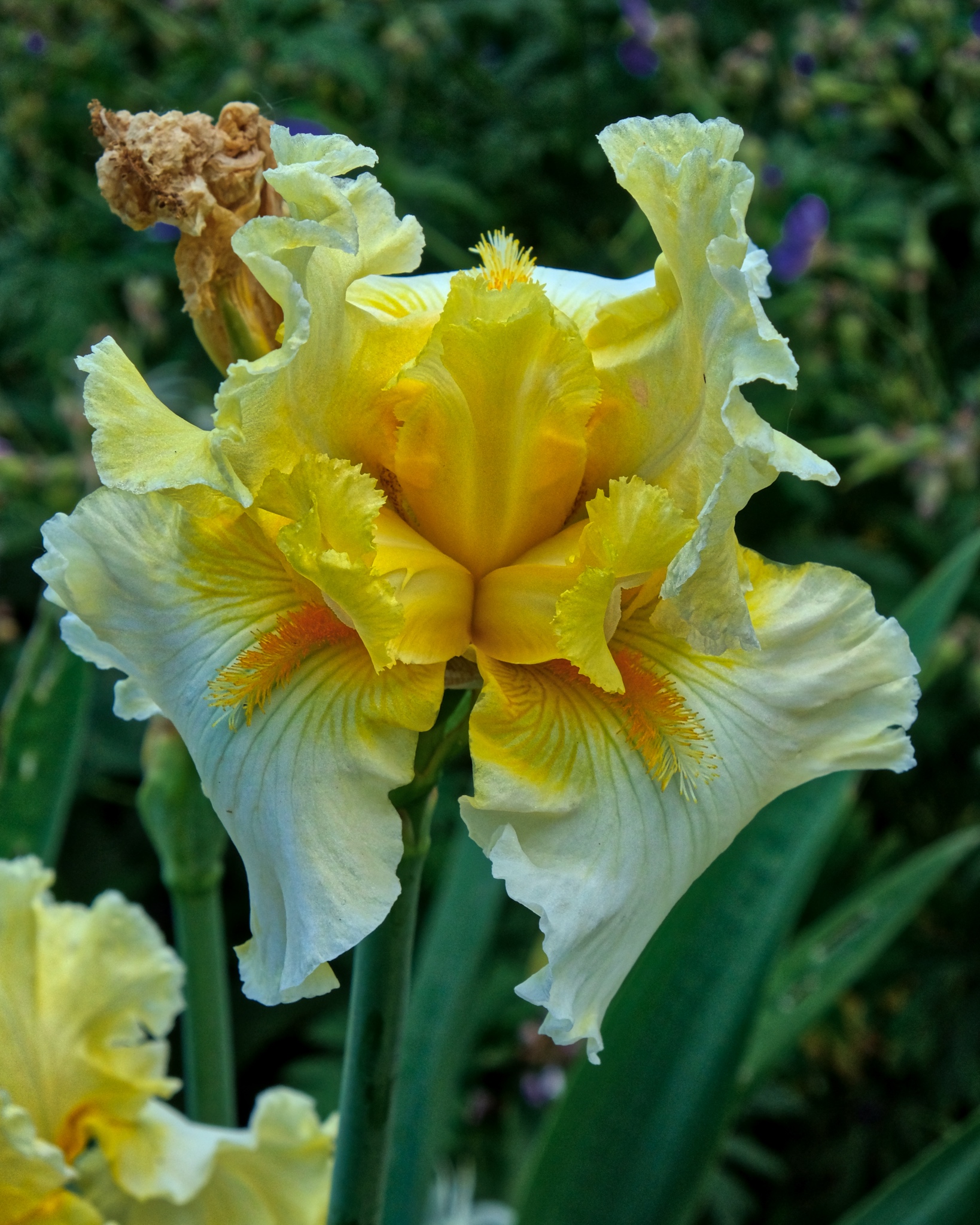 Strong yellow . . .
Strong yellow . . .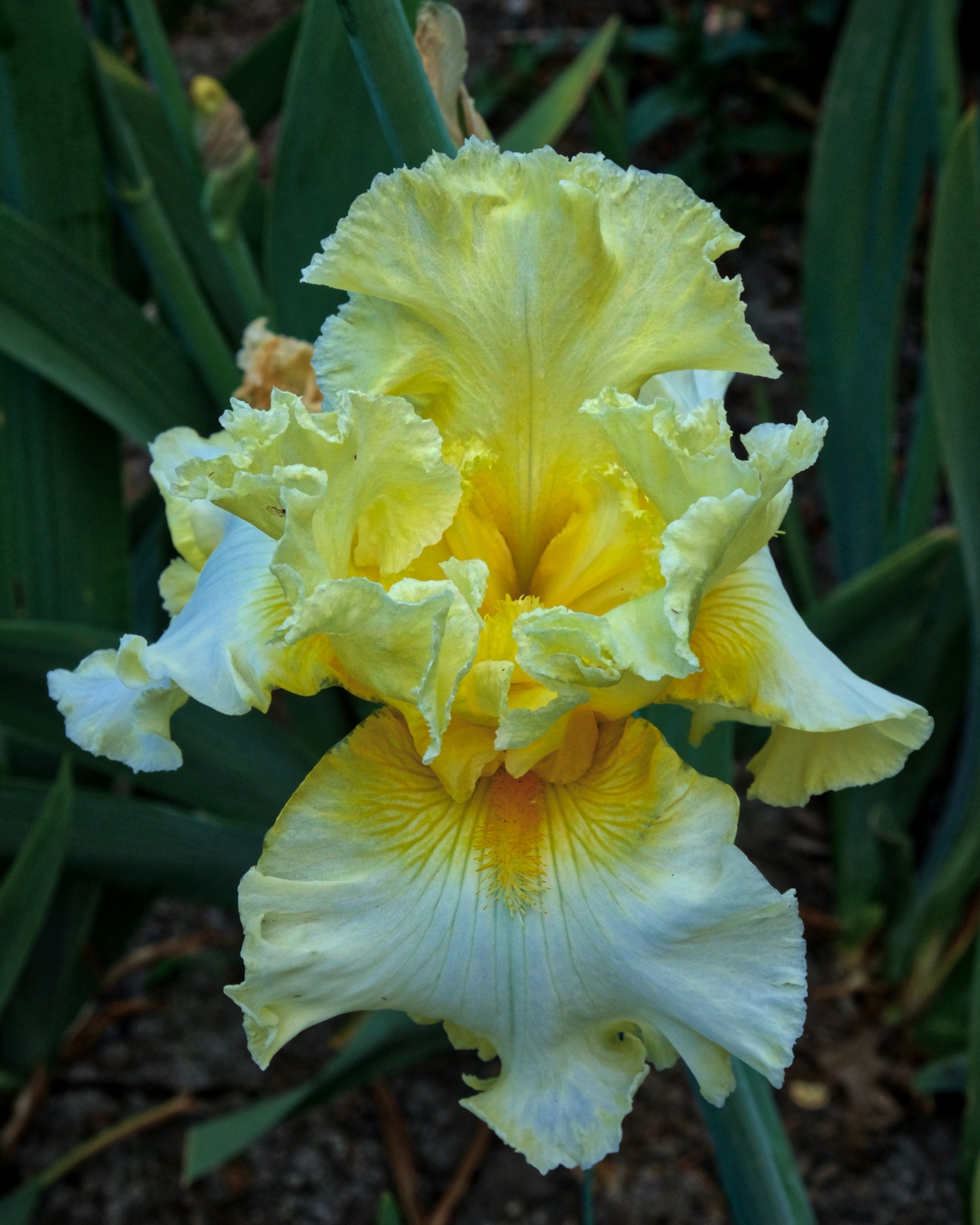 Pastel yellow and white . . .
Pastel yellow and white . . .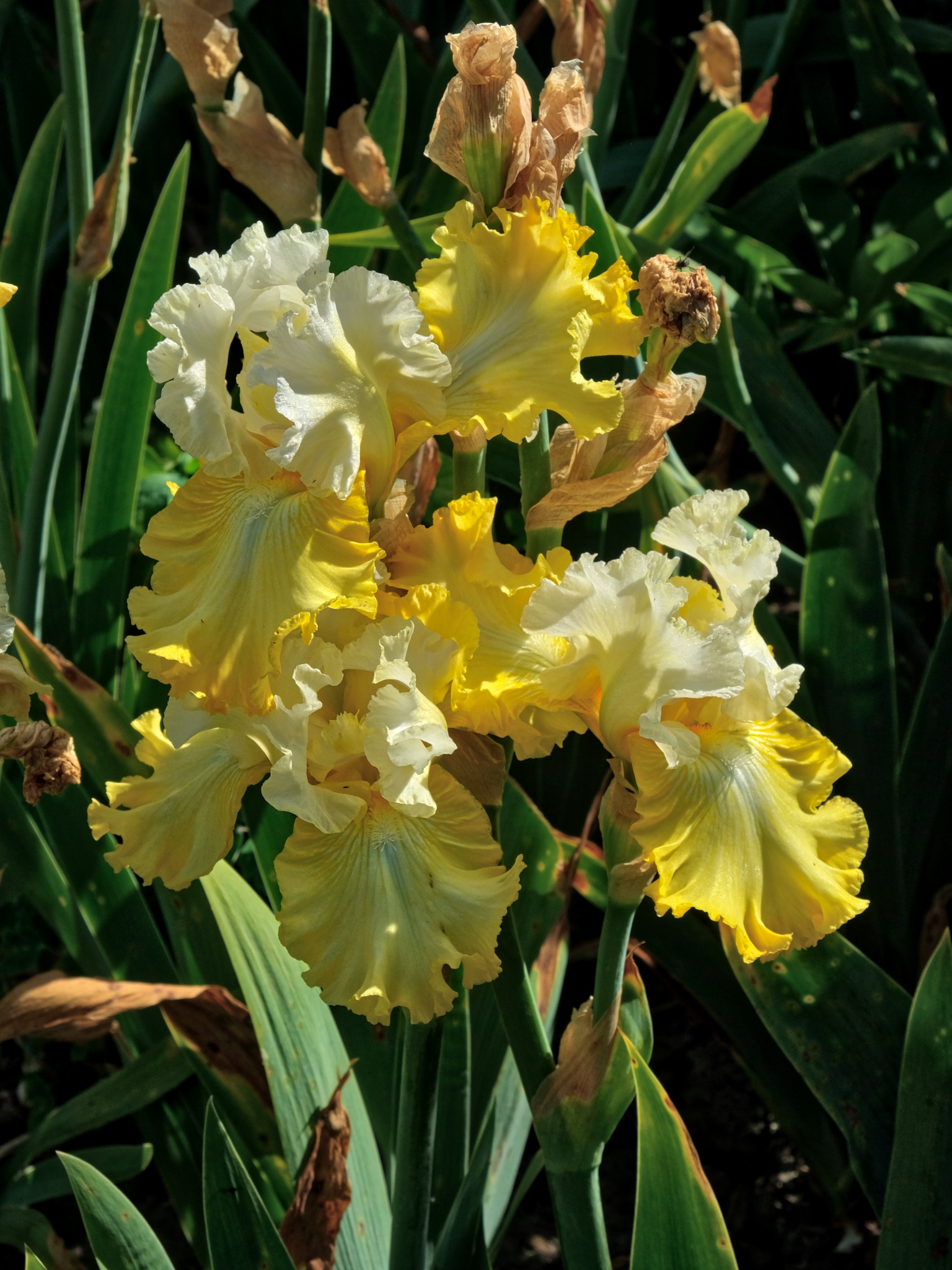 Pale yellow, white, green . . .
Pale yellow, white, green . . .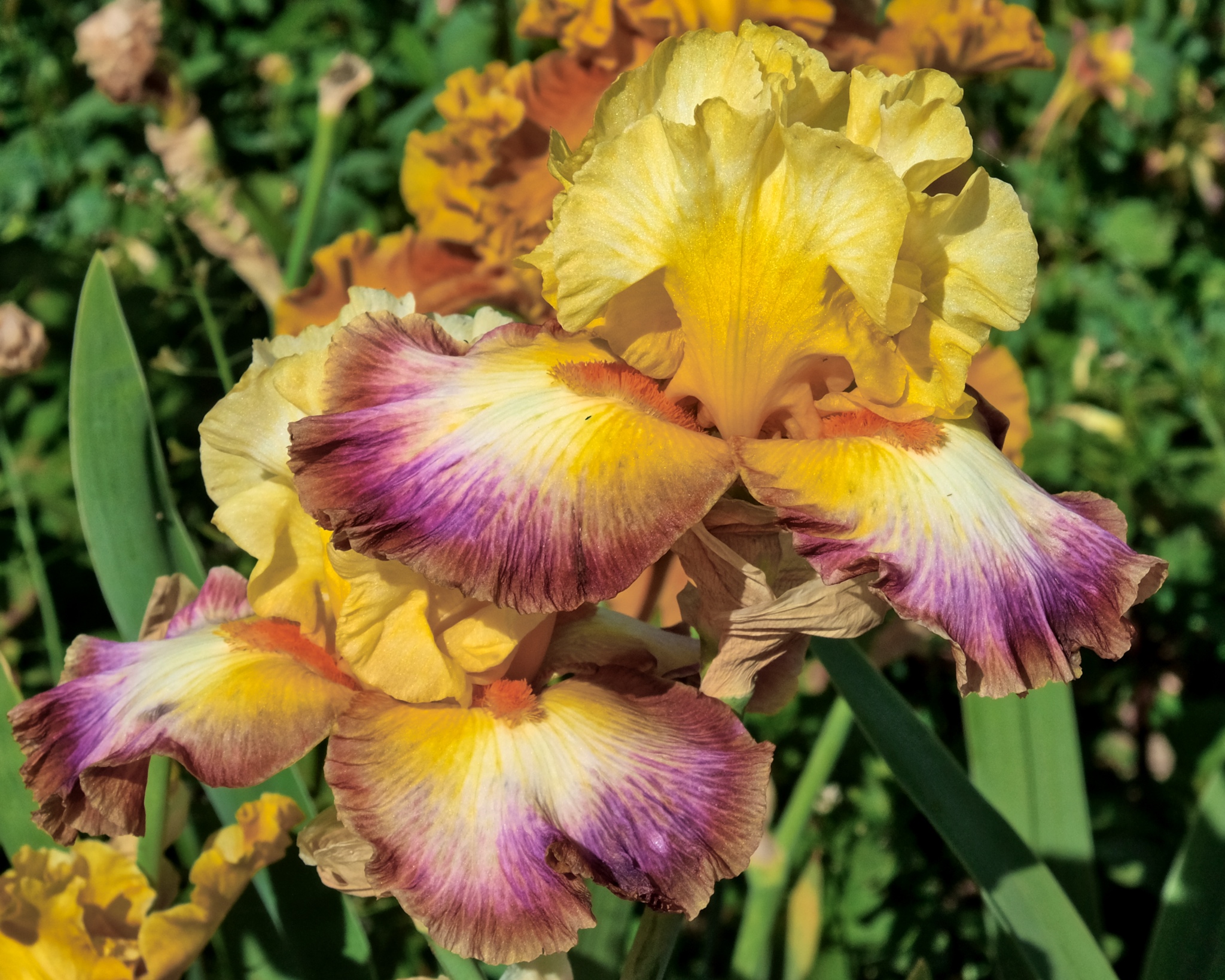 A garish yellow and magenta iris . . .
A garish yellow and magenta iris . . .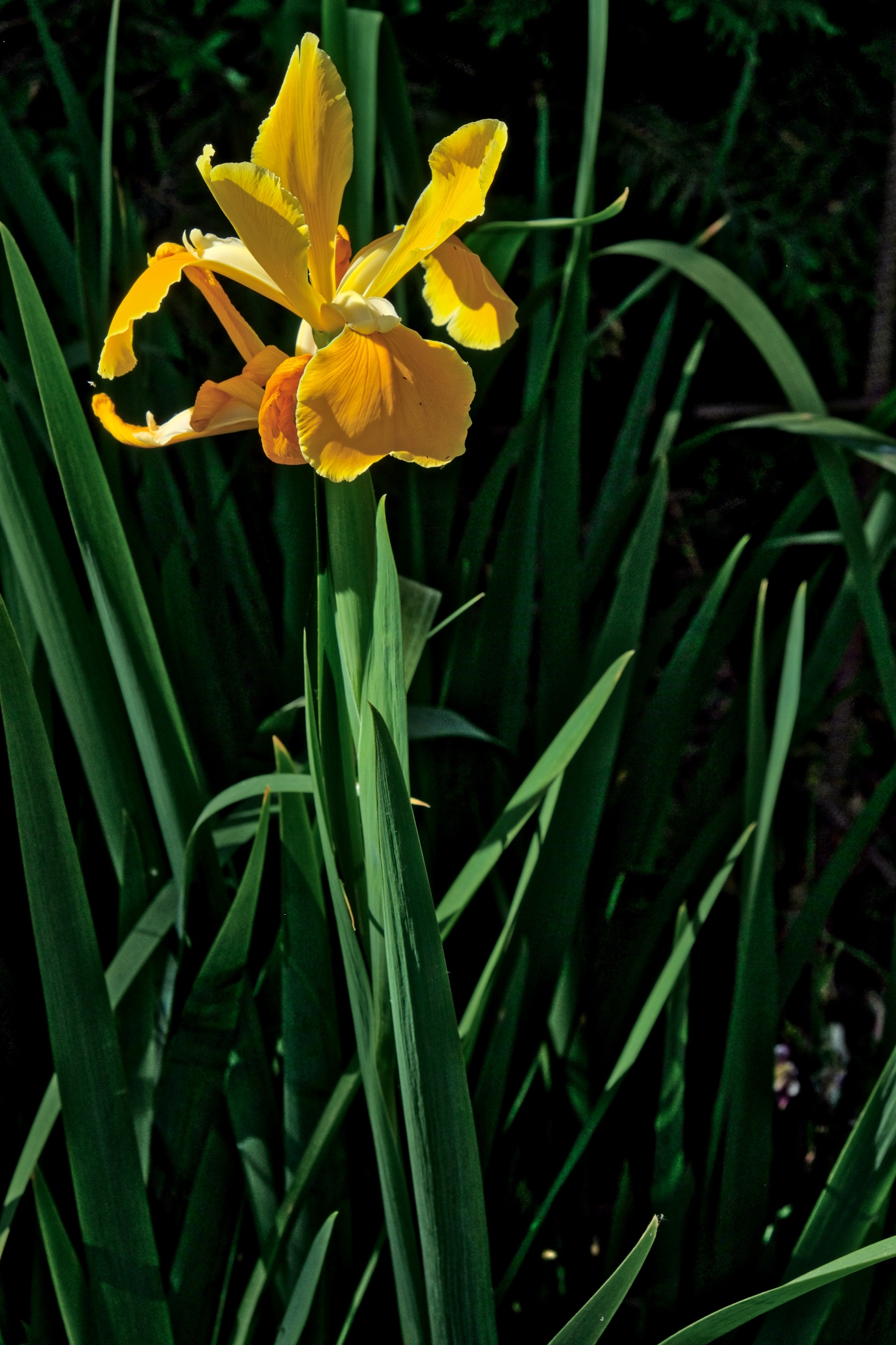 Iris and stem . . . so pretty.
Iris and stem . . . so pretty.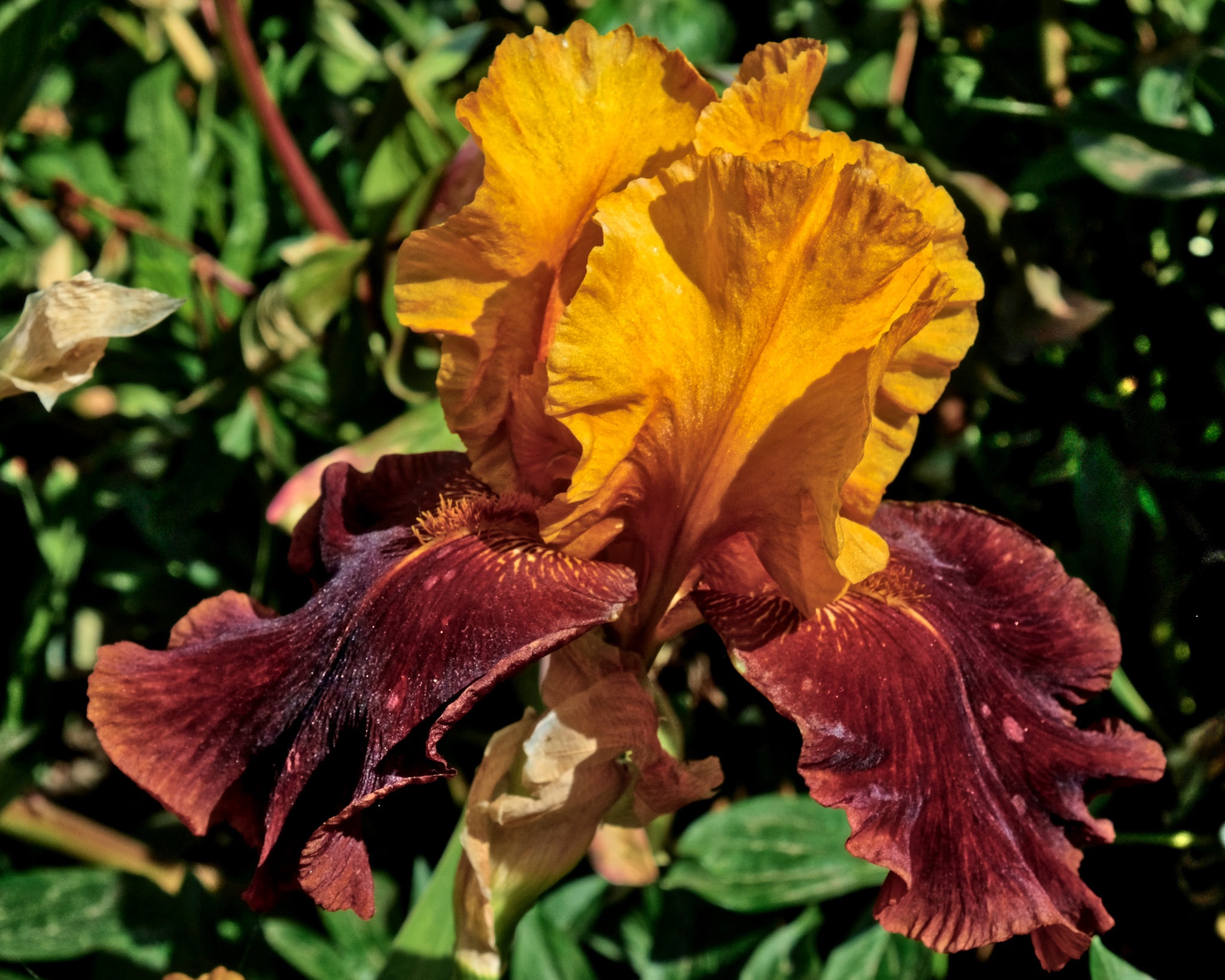 Bold color combinations too . . .
Bold color combinations too . . .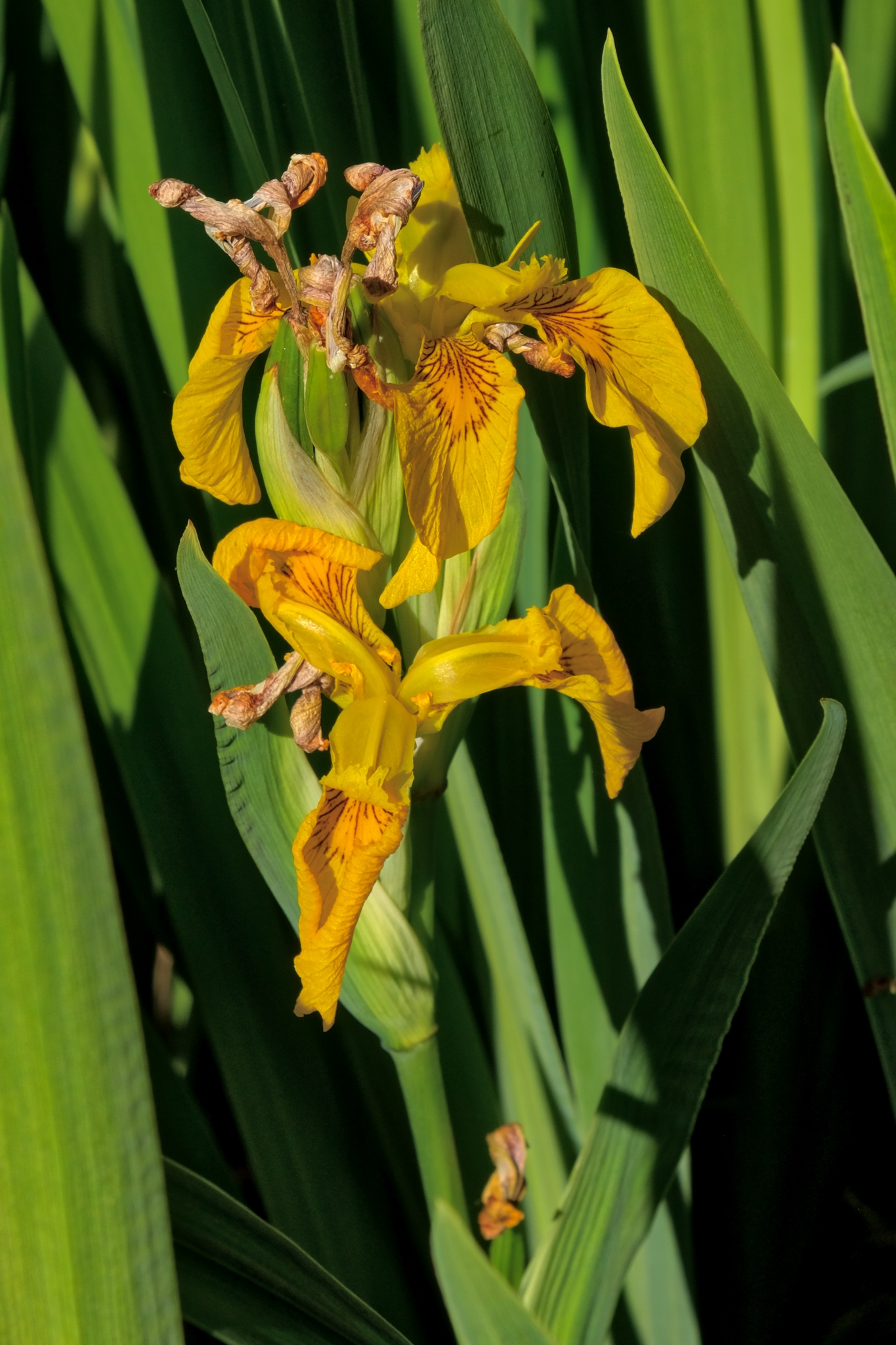 Subtle and gentle irises too.
Subtle and gentle irises too.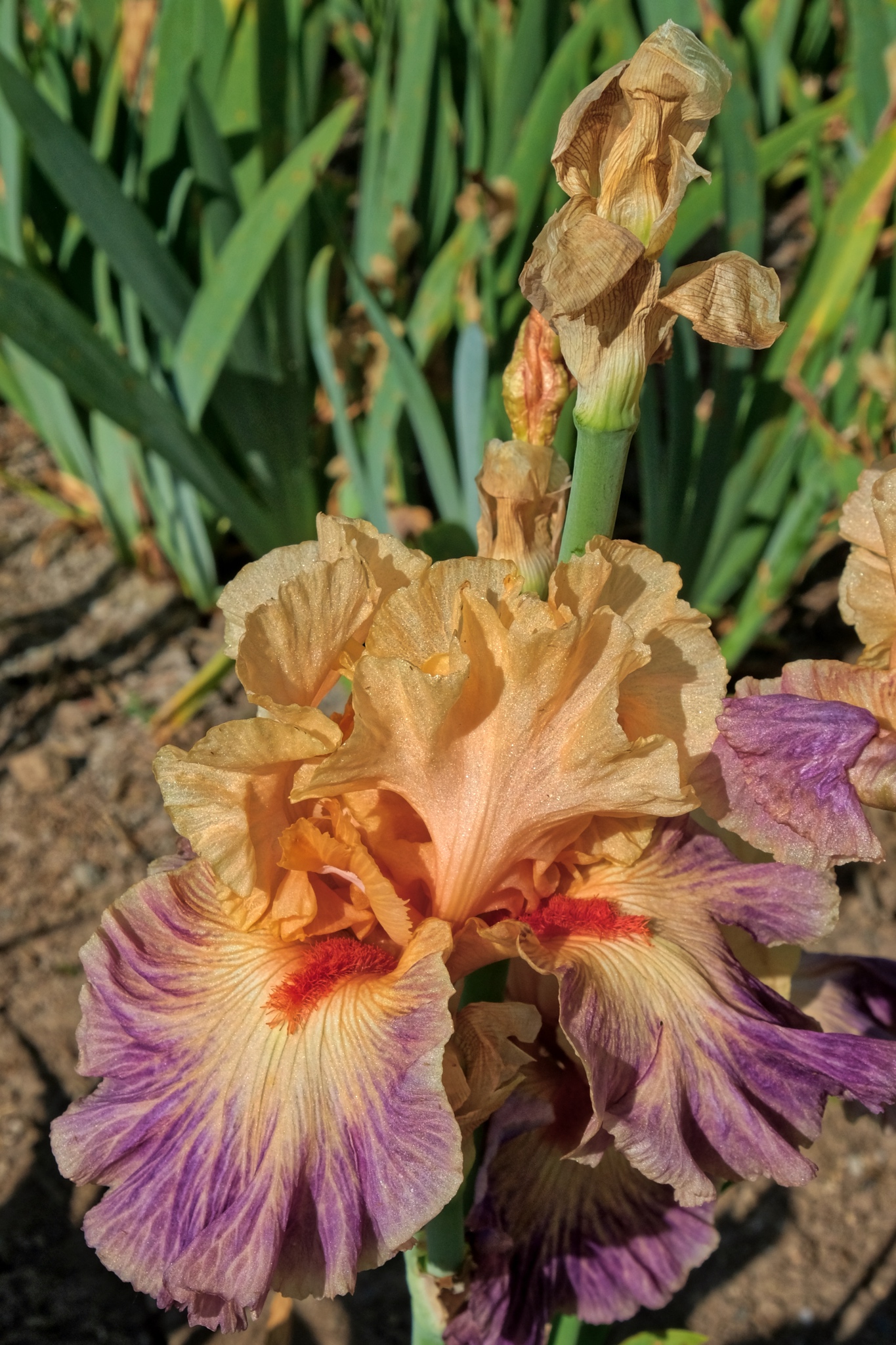 A strange world . . .
A strange world . . .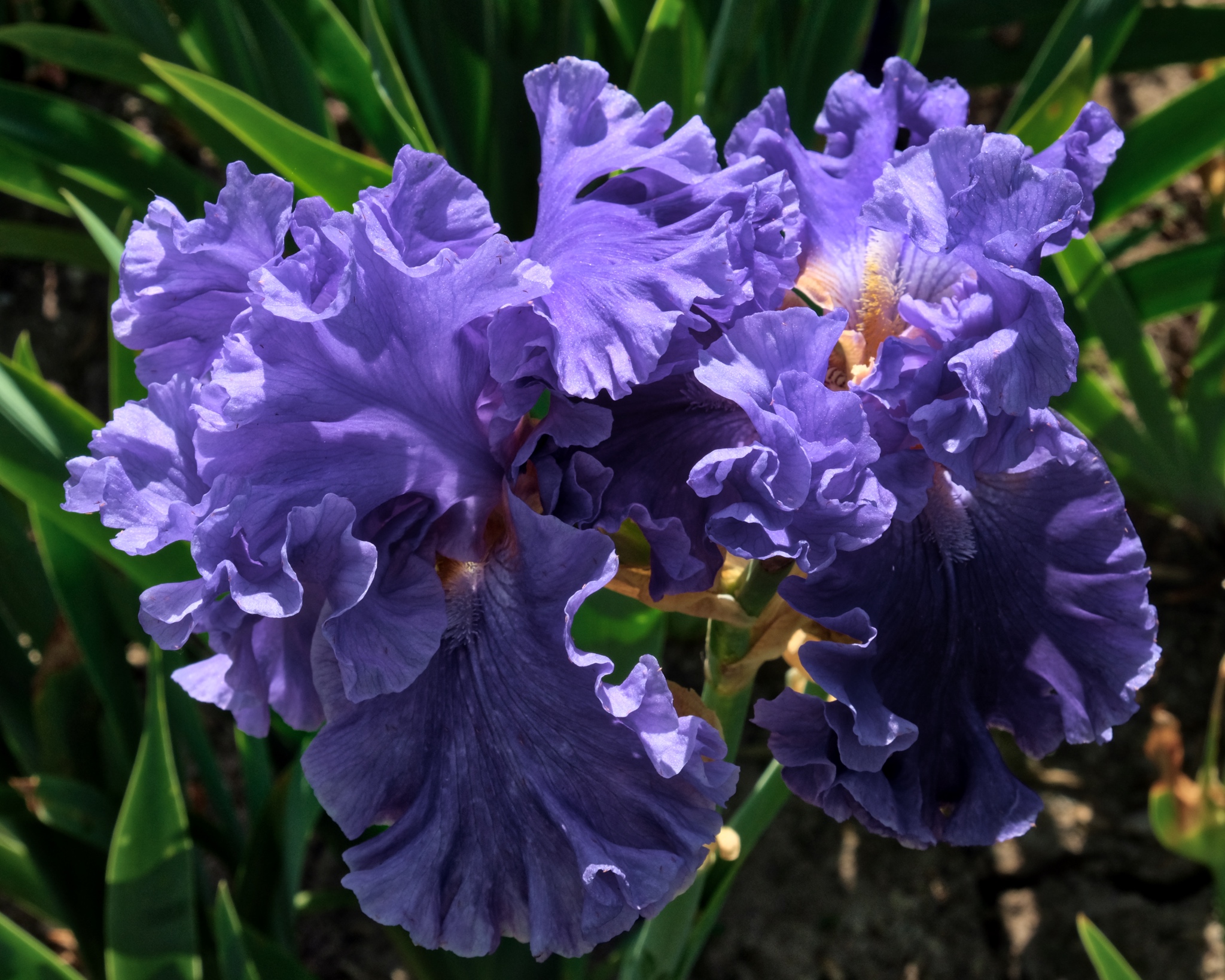 I will never tire of photographing the iris flower . . . simply fascinating!
I will never tire of photographing the iris flower . . . simply fascinating!NOT ONLY THE IRIS!
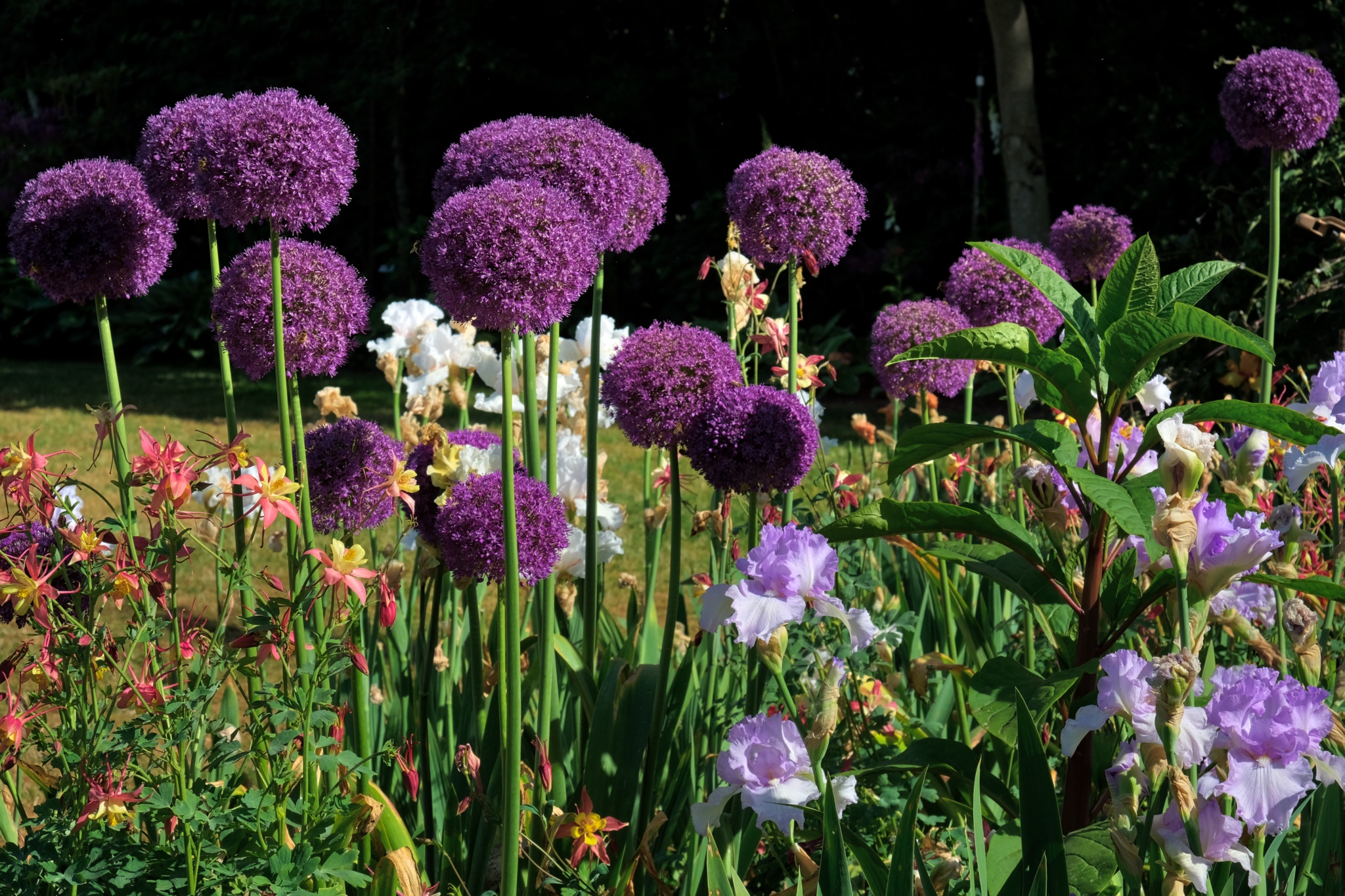 There were many other kinds of flowers at Schreiner's Iris Gardens . . . .
There were many other kinds of flowers at Schreiner's Iris Gardens . . . .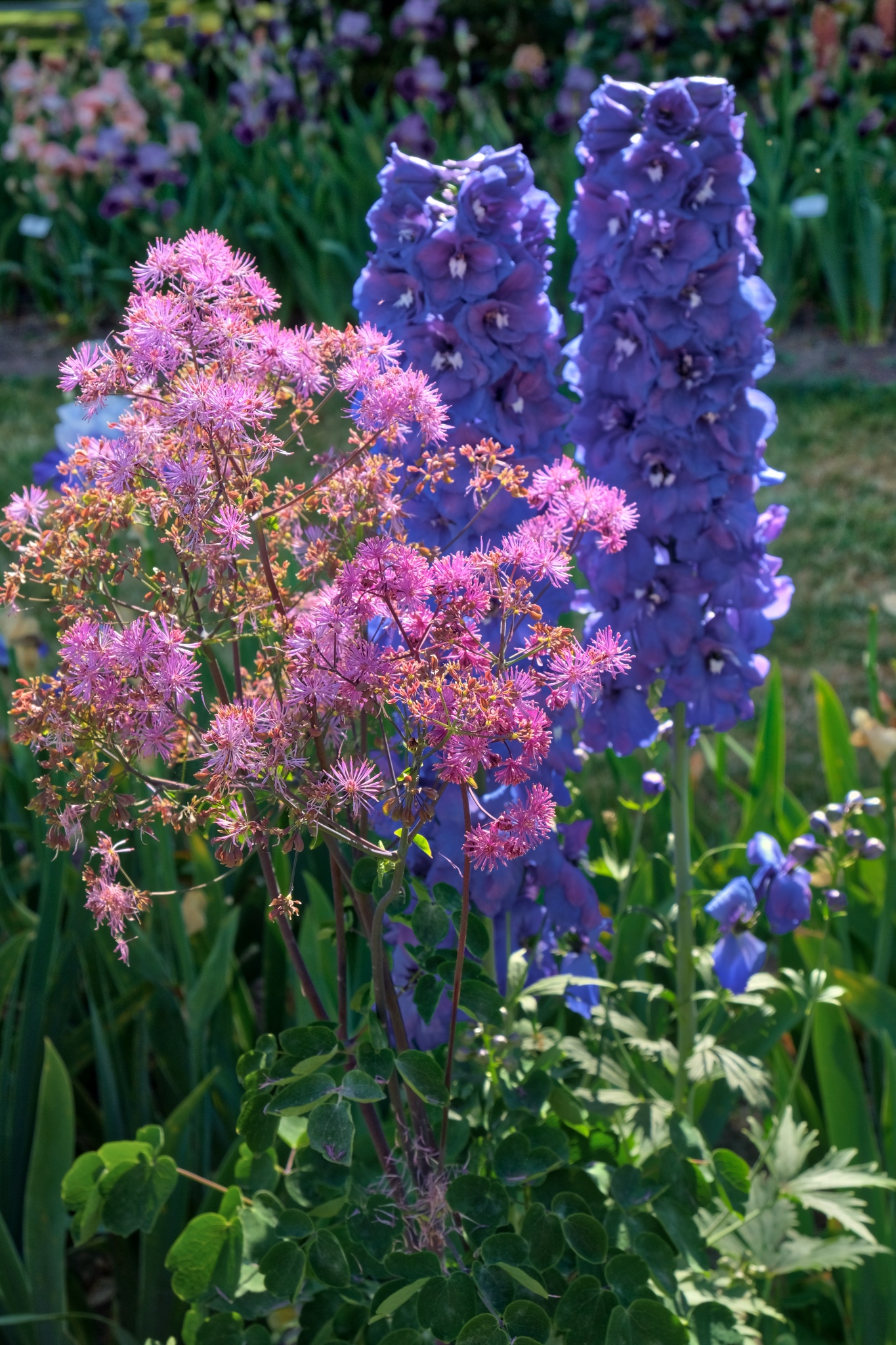 Many, many other kinds of flowers and trees . . . many of which I had never seen before.
Many, many other kinds of flowers and trees . . . many of which I had never seen before.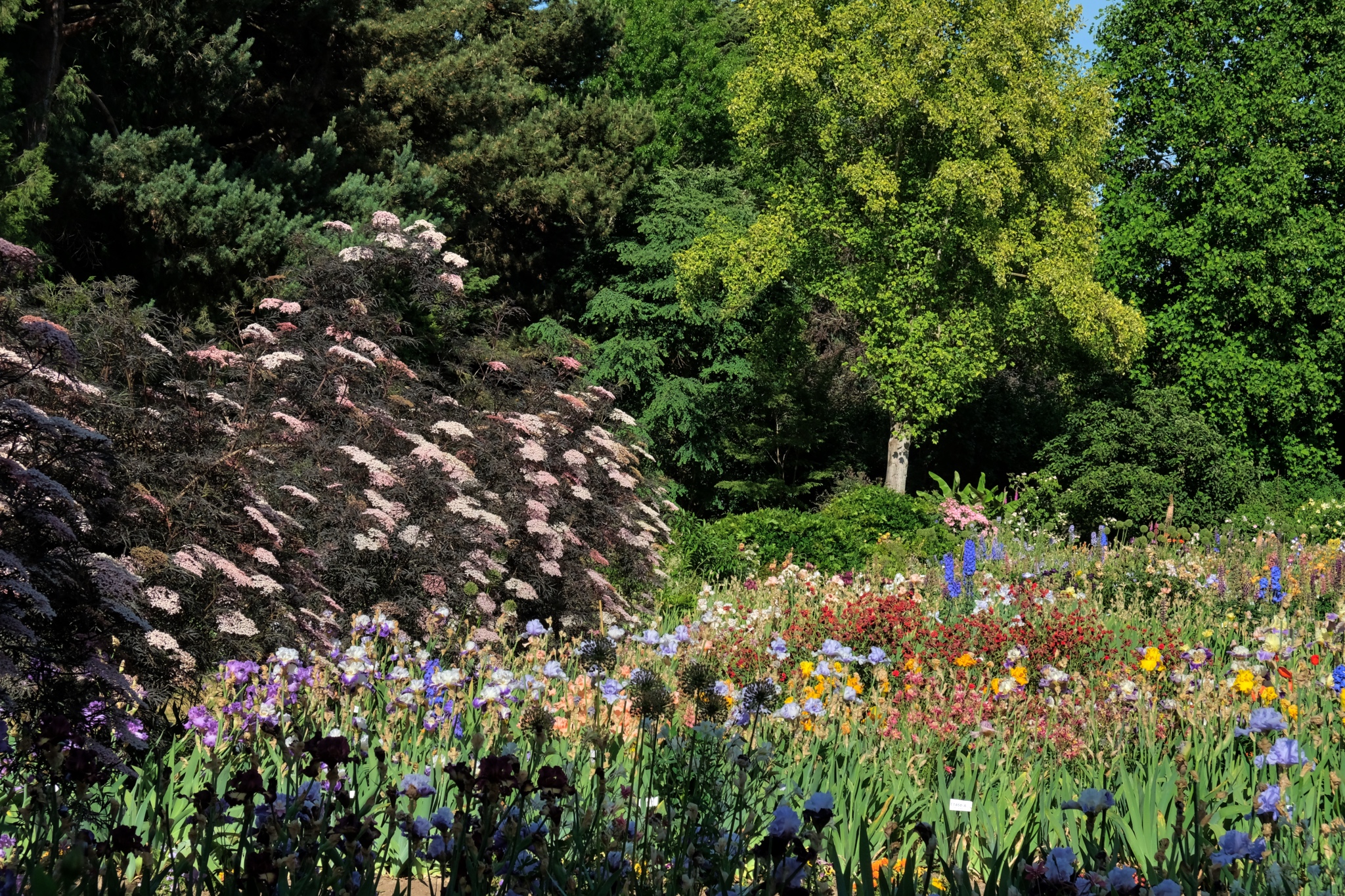 Such a nicely laid out garden too.
Such a nicely laid out garden too.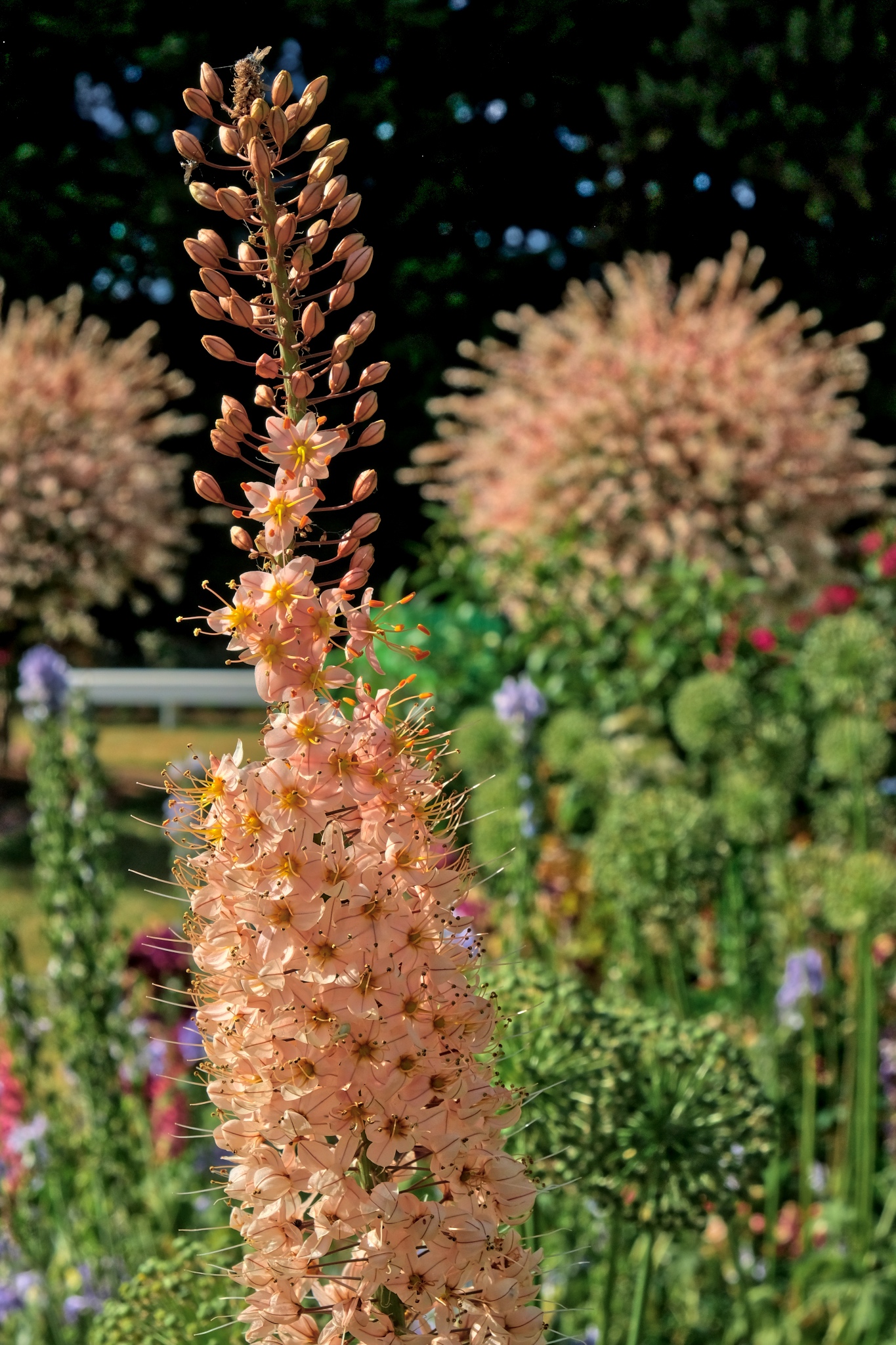 Almost everything in the garden was in bloom all at once!
Almost everything in the garden was in bloom all at once!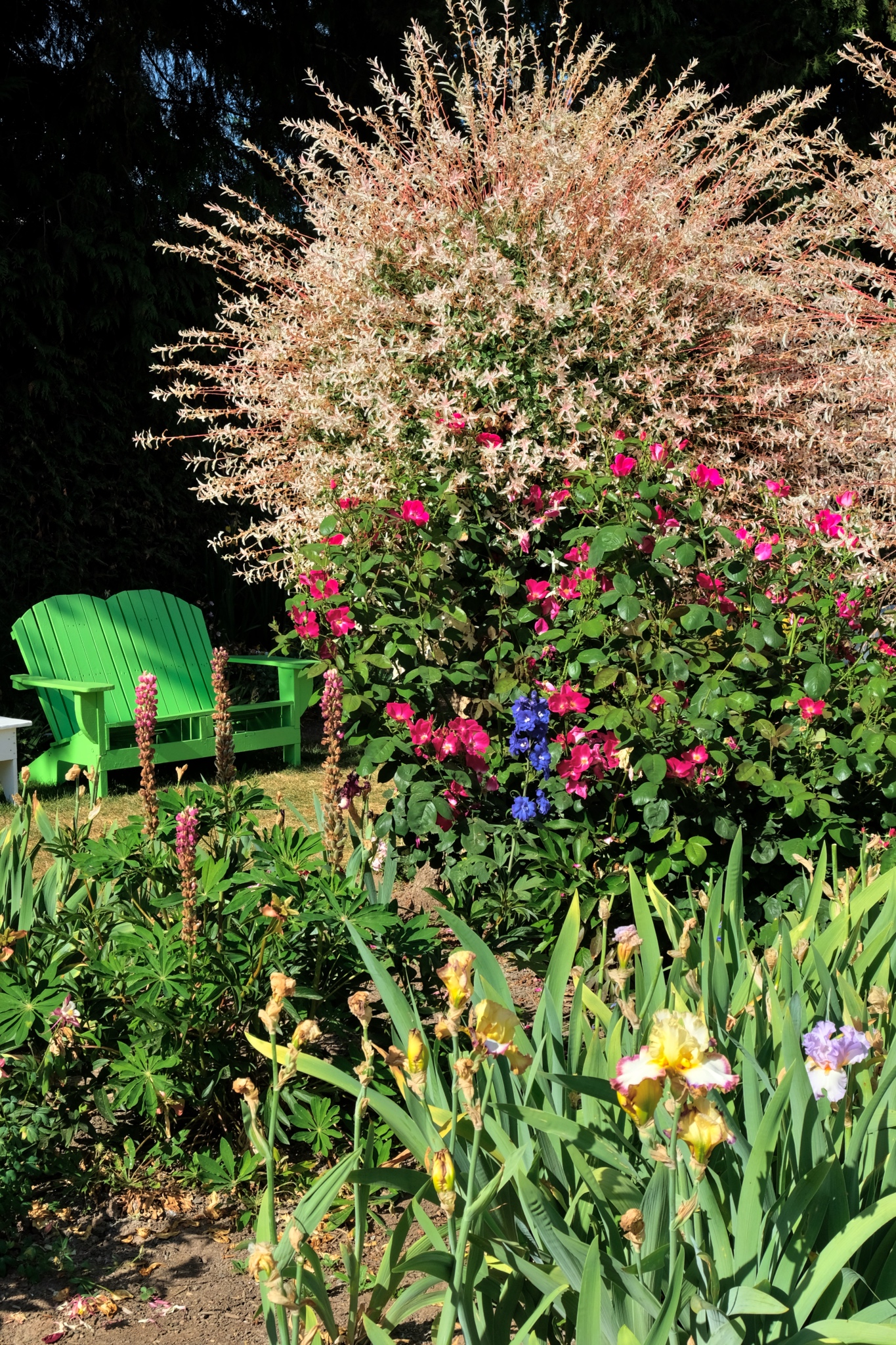 I rested here for a while . . . very pleasant.
I rested here for a while . . . very pleasant.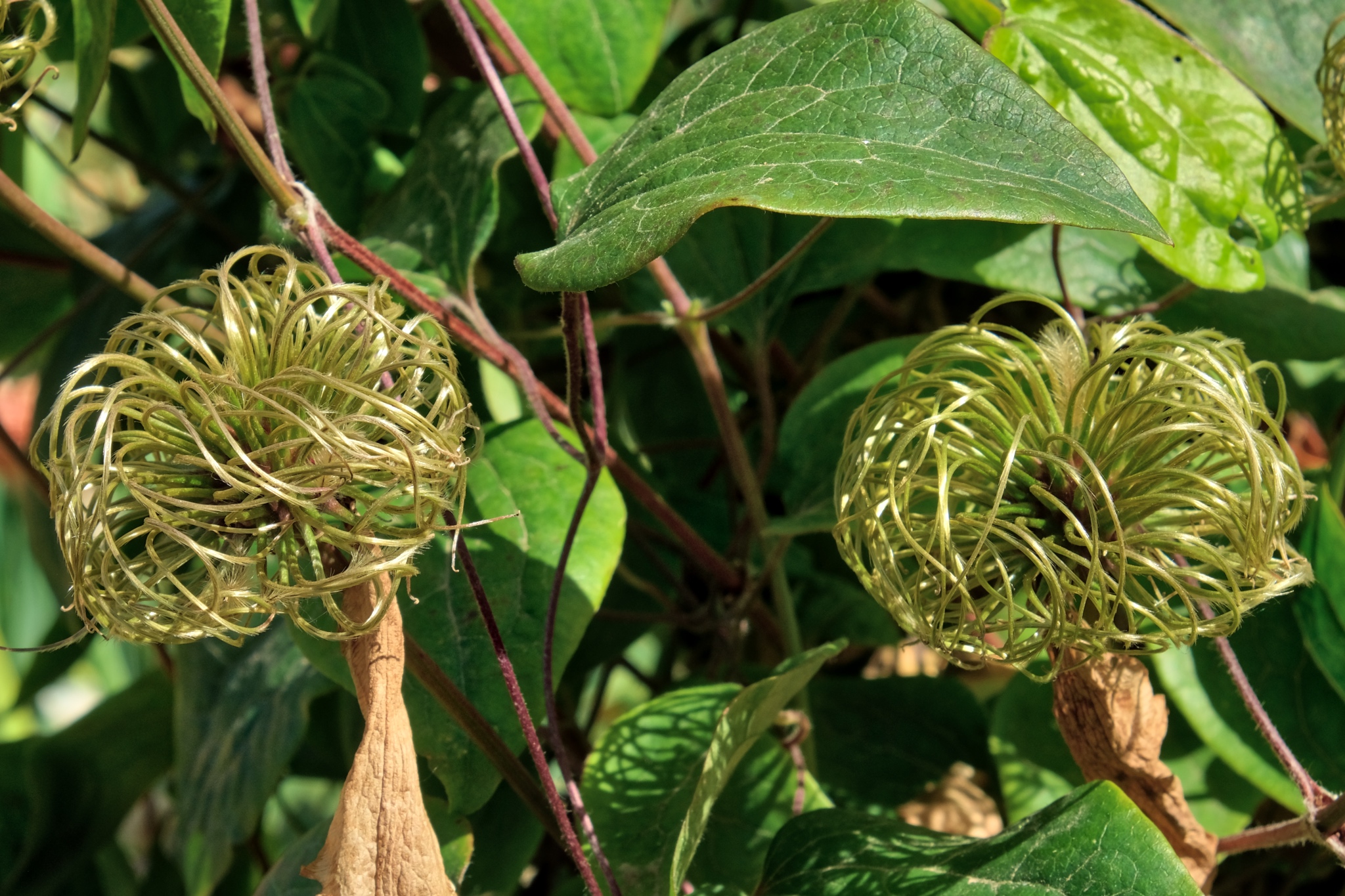 Wherever my gaze would light there would be something fascinating!
Wherever my gaze would light there would be something fascinating!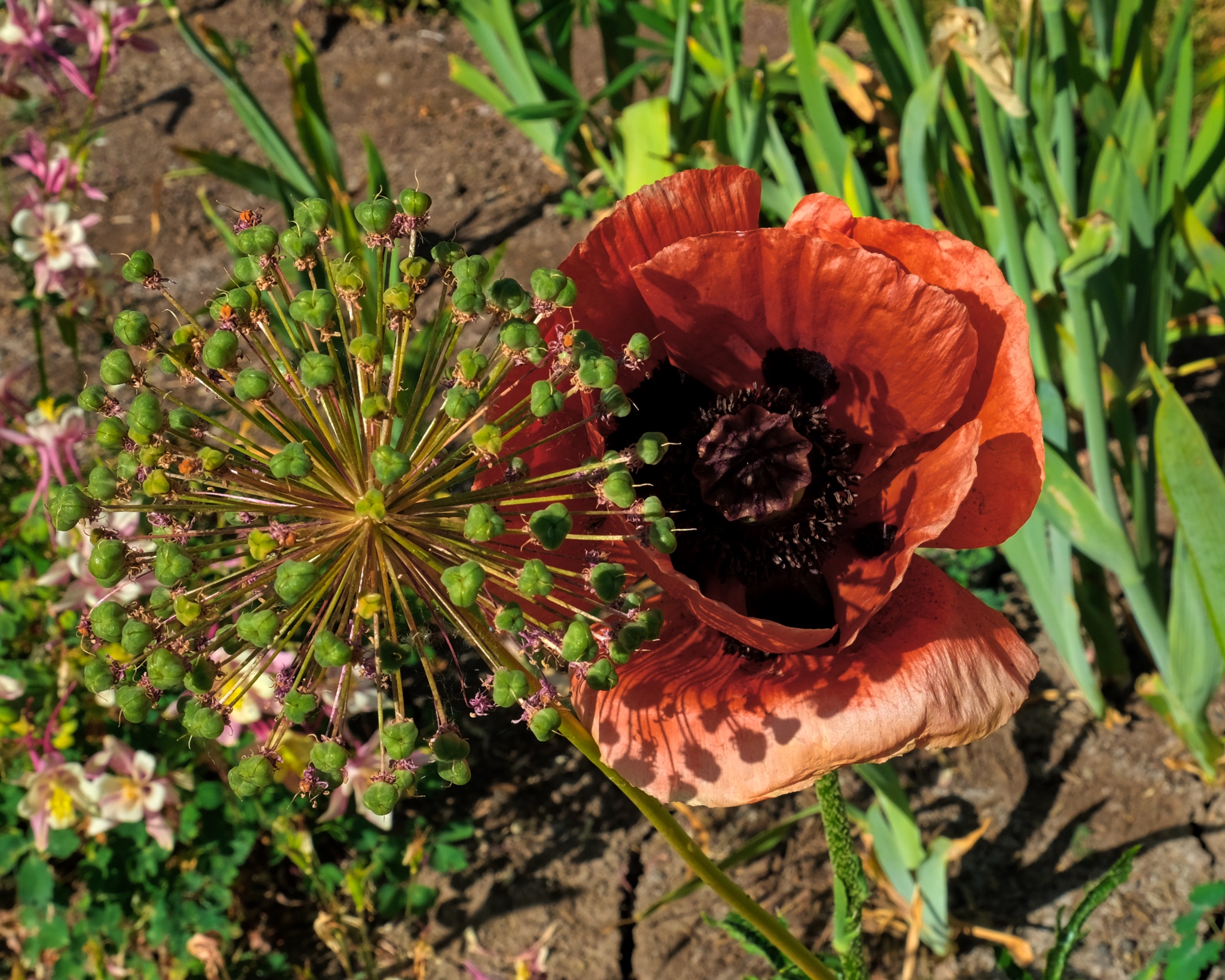 A red poppy and exploding pod ball!
A red poppy and exploding pod ball!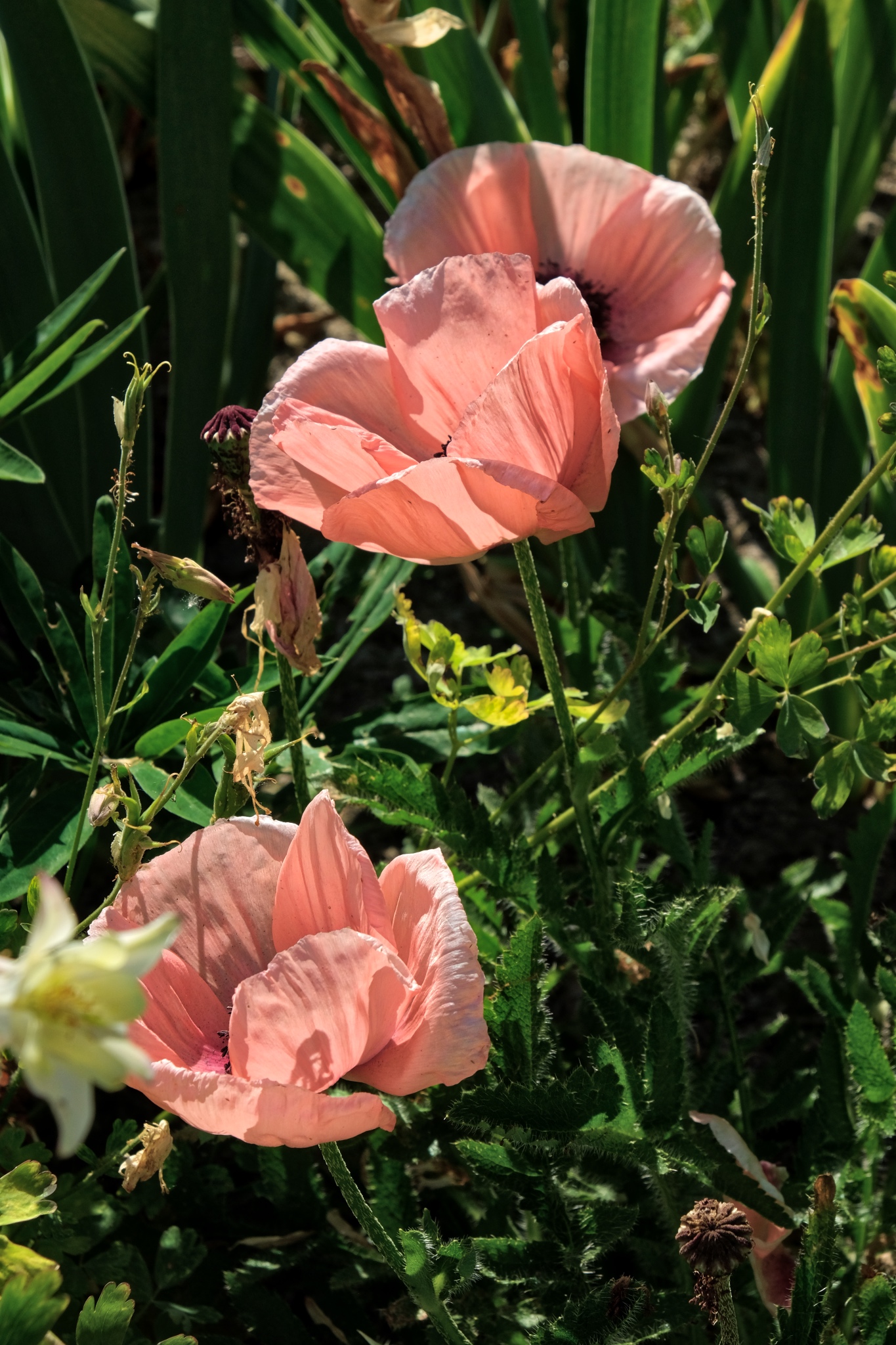 Pink Poppies.
Pink Poppies.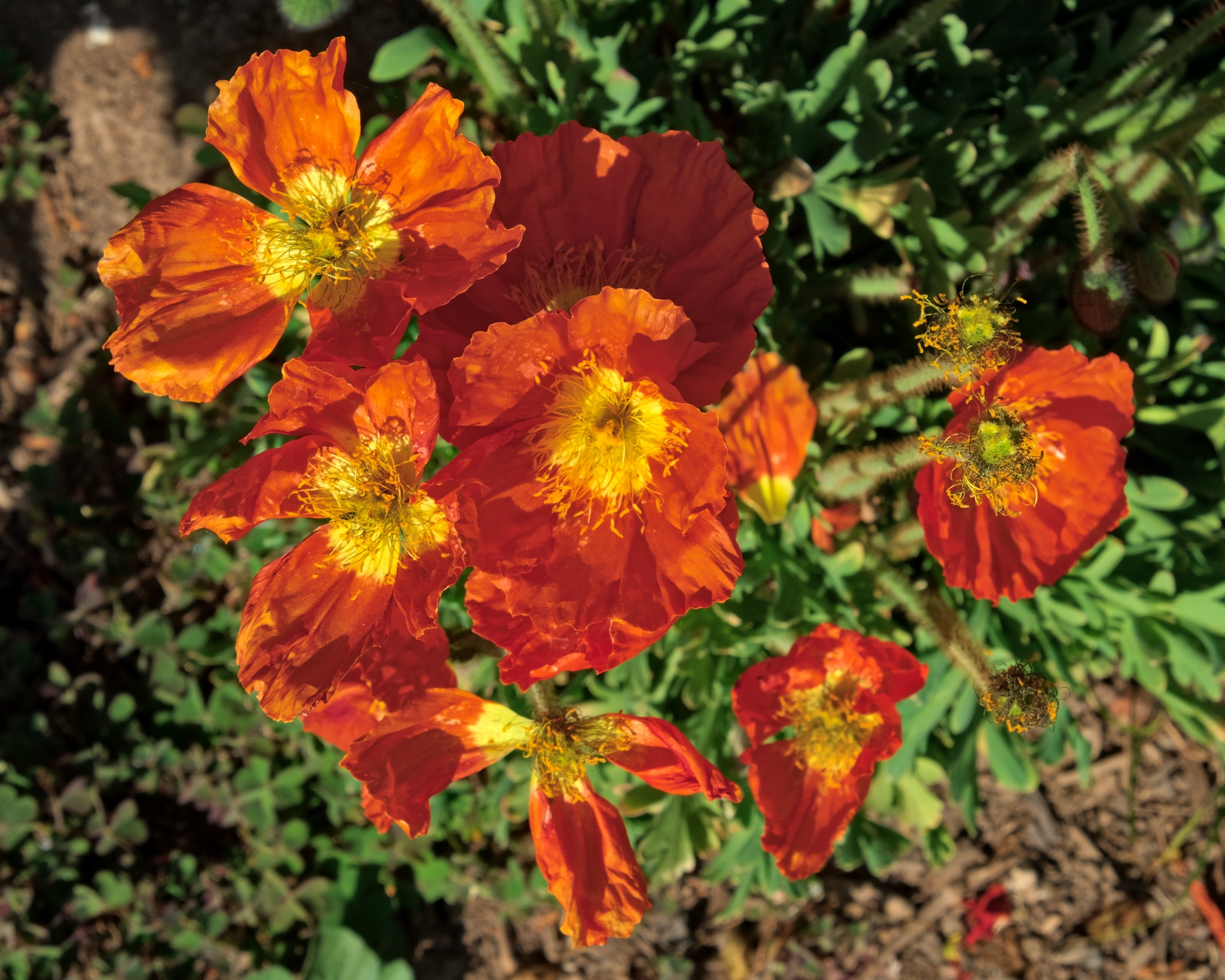 Bright orange poppies . . . so cheerful!
Bright orange poppies . . . so cheerful!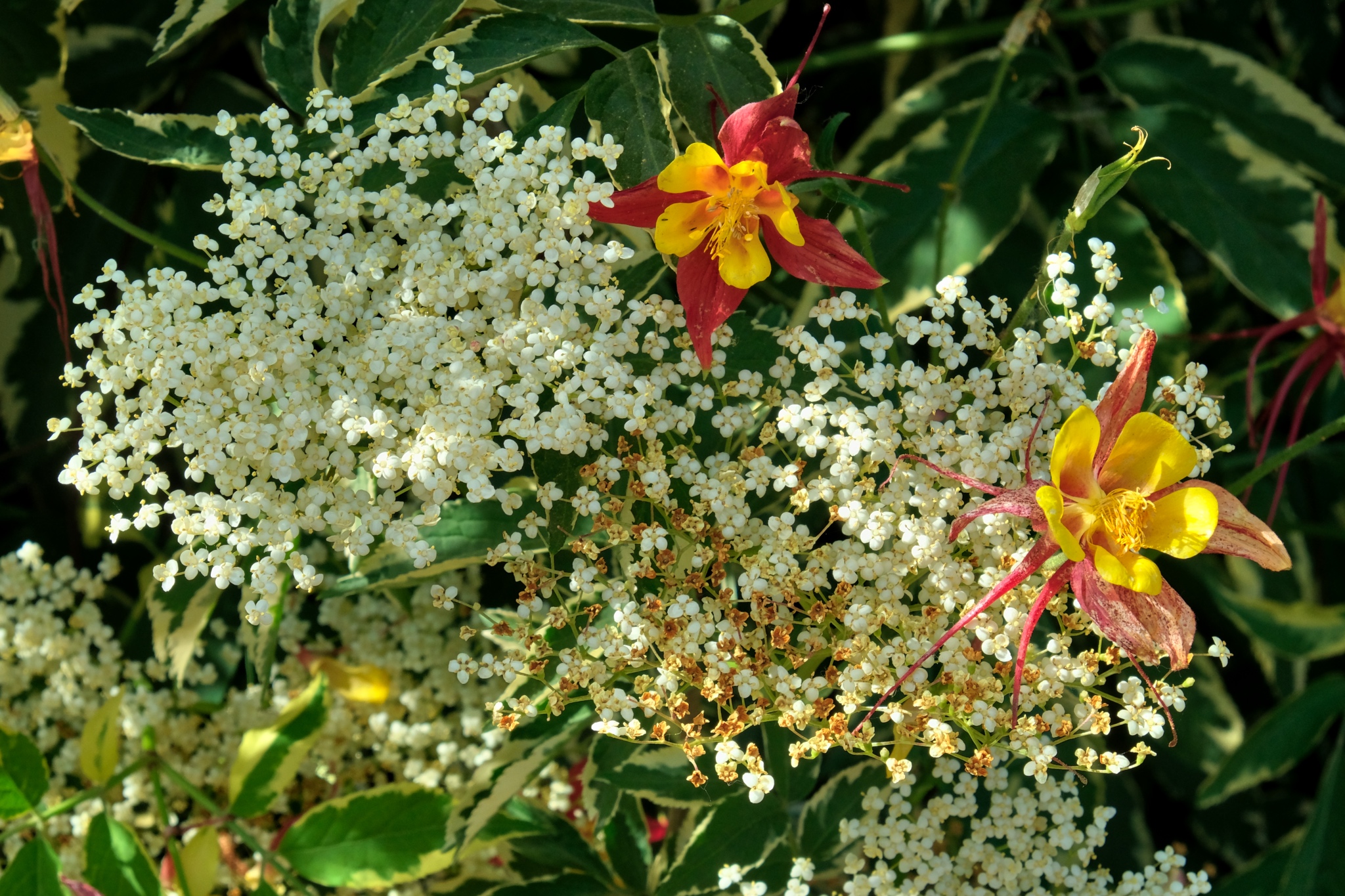 A happy arrangement . . .
A happy arrangement . . .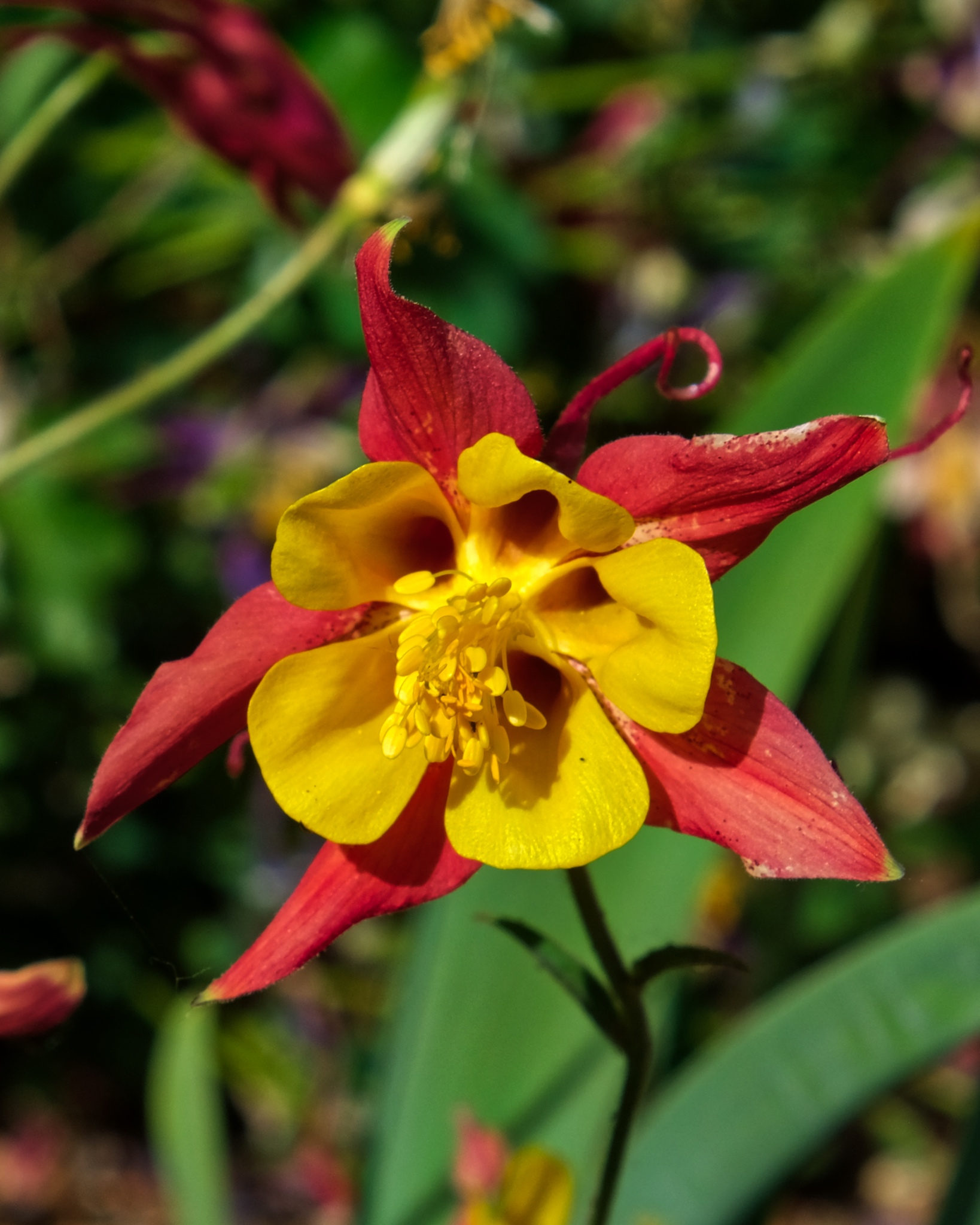 A cheerful little flower dancing on the wind.
A cheerful little flower dancing on the wind.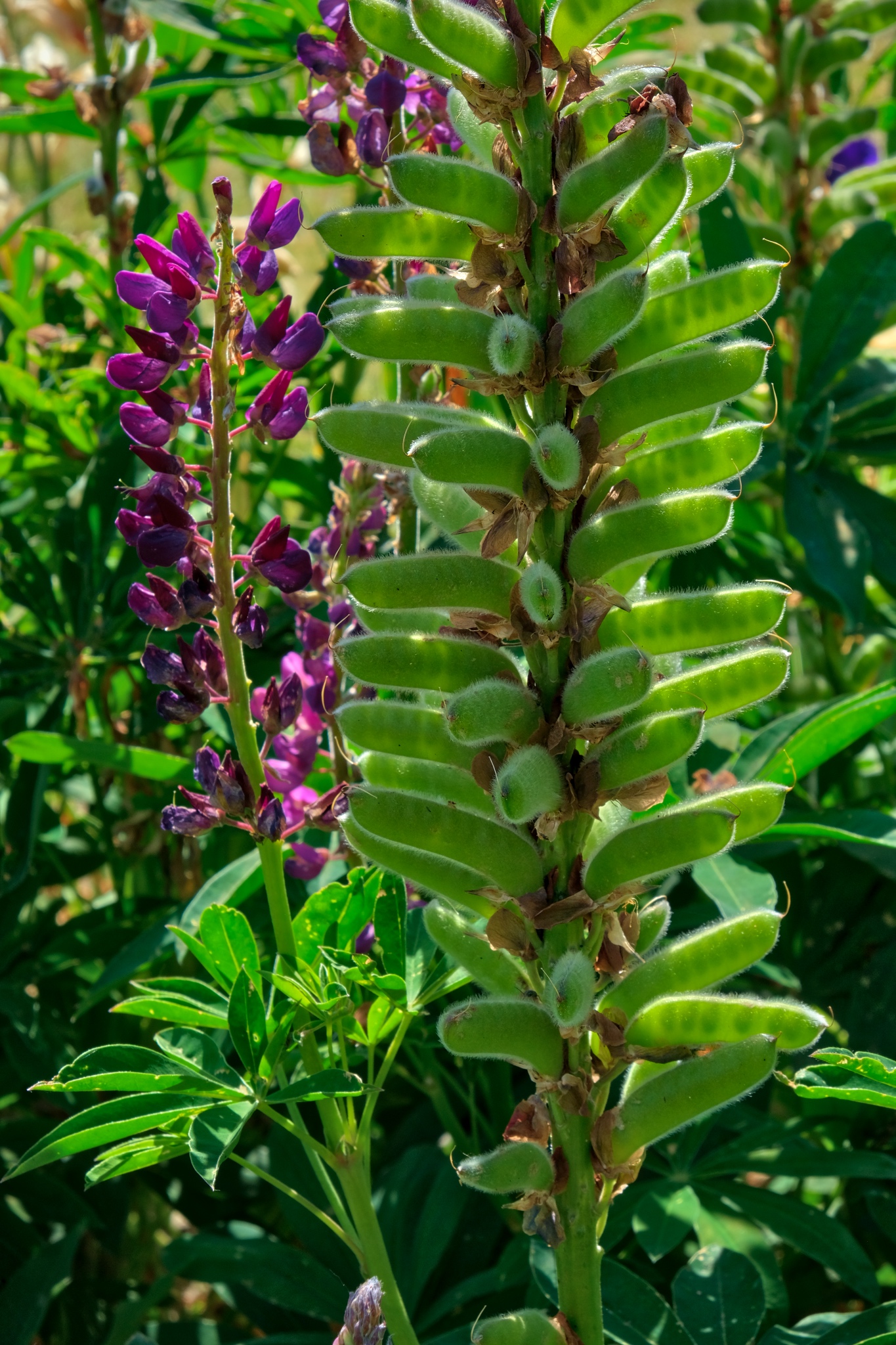 All sorts of flowering and bud configurations here and there.
All sorts of flowering and bud configurations here and there.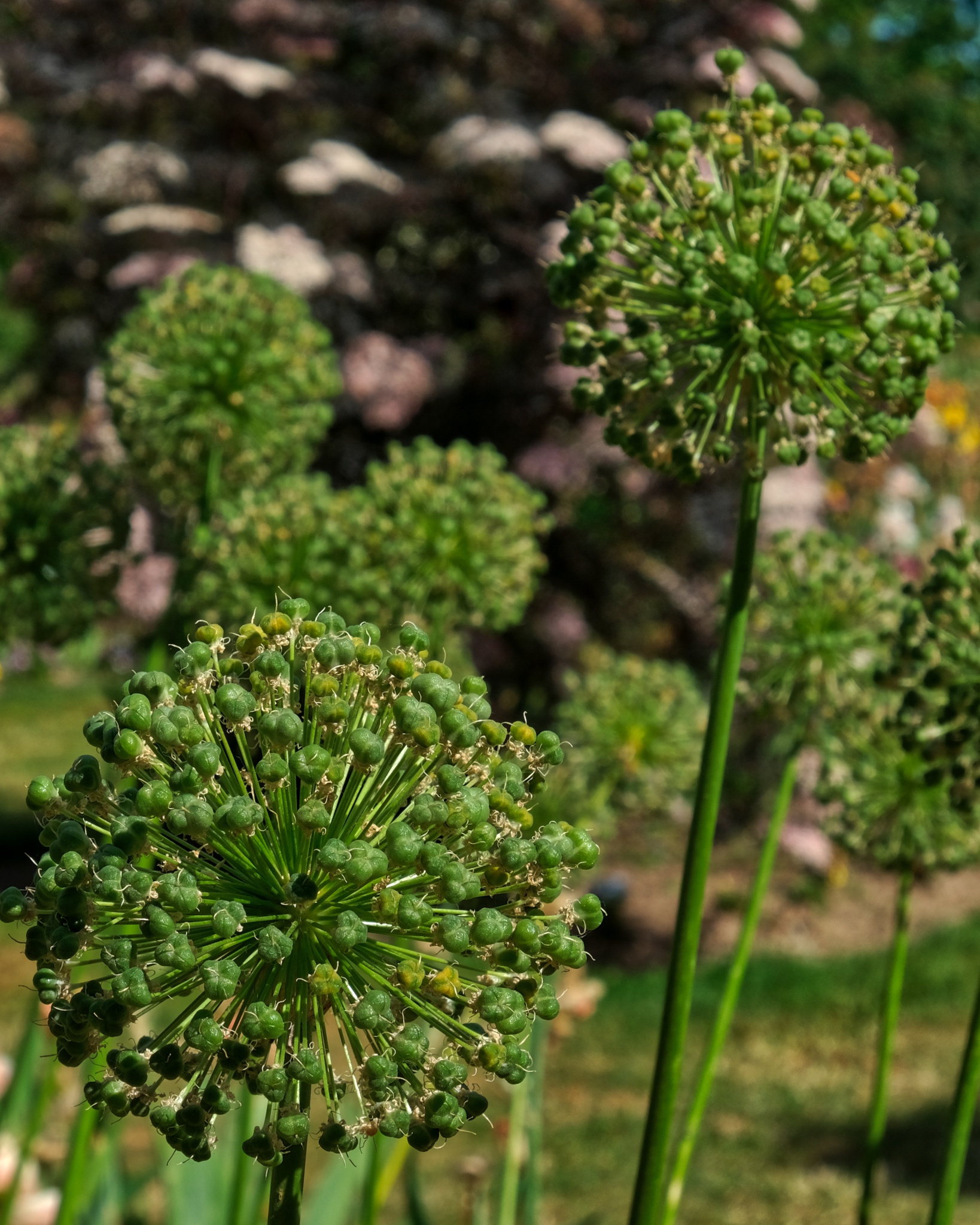 Ready to explode . . .
Ready to explode . . .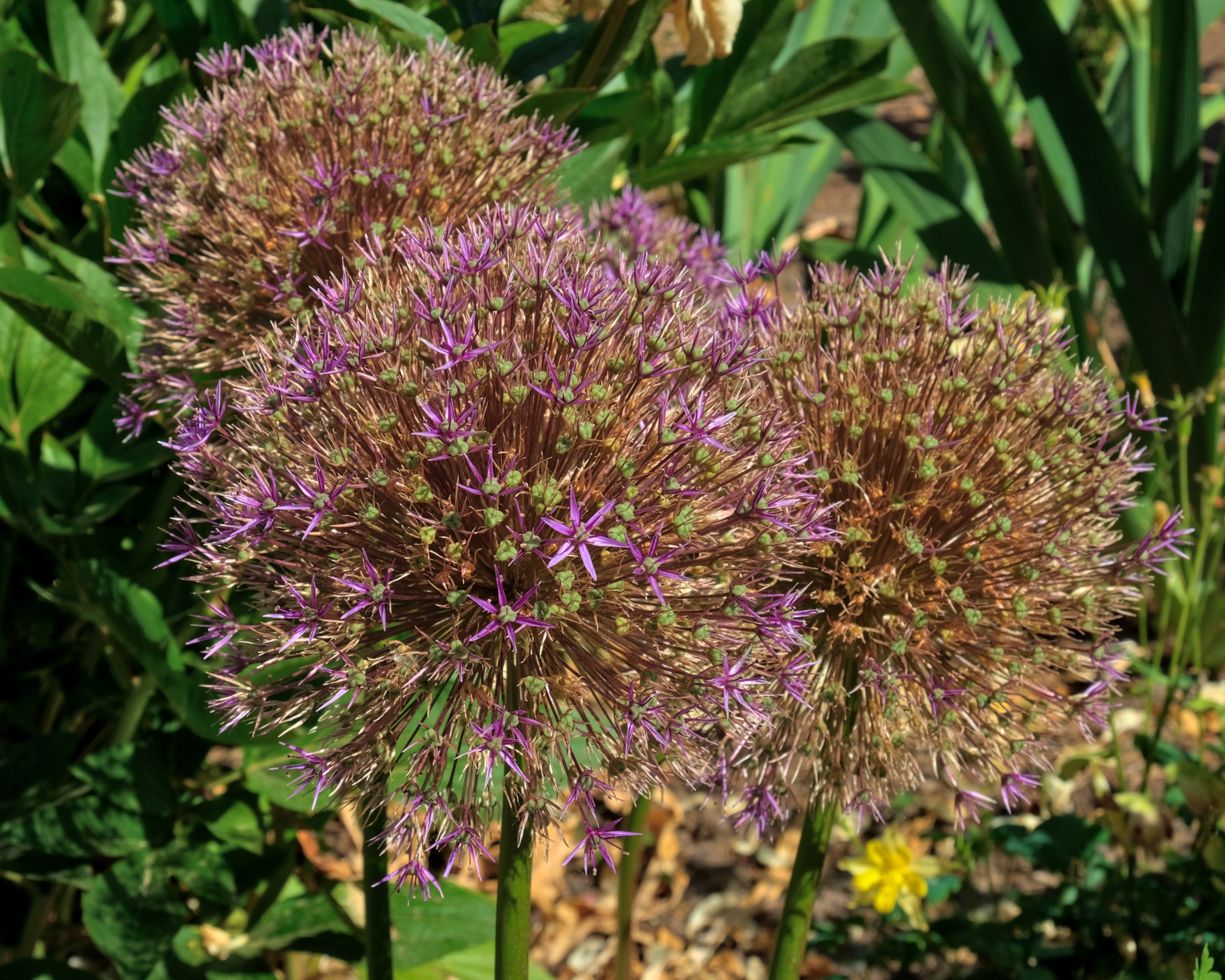 The beginnings of one of those purple puff balls . . .
The beginnings of one of those purple puff balls . . .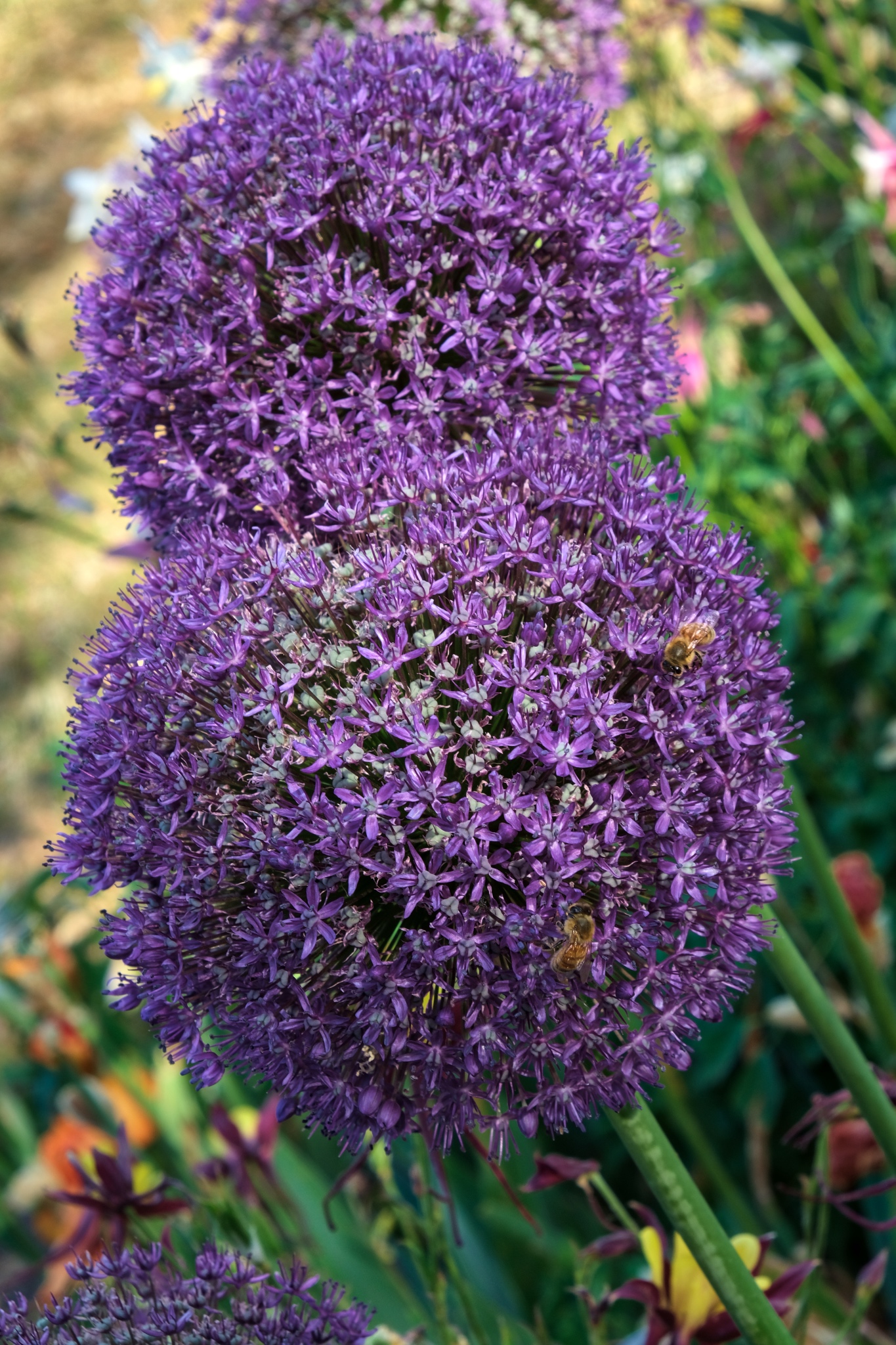 There were many happy bees in the garden!
There were many happy bees in the garden!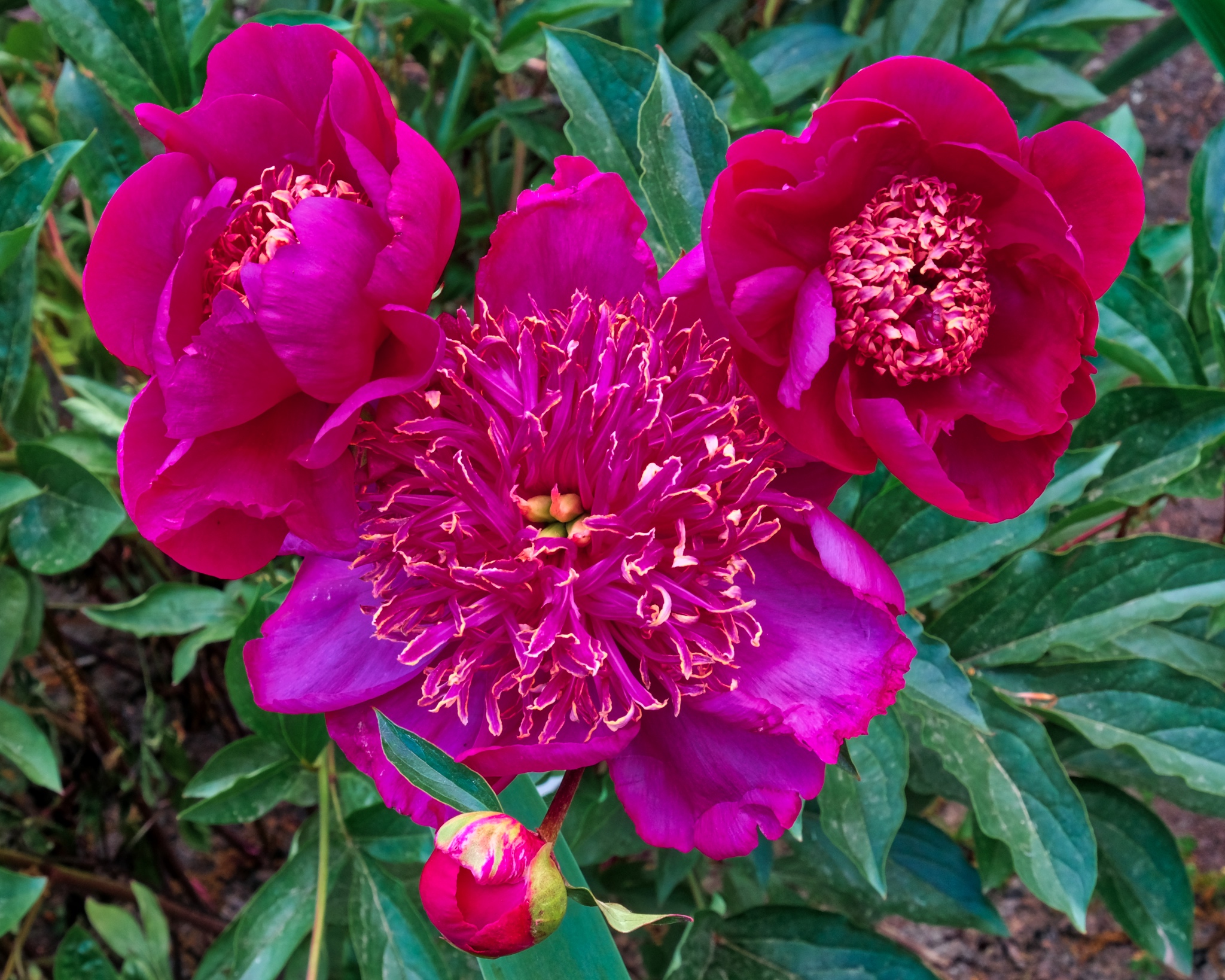 There were some red flowers too . . . some very, very red!
There were some red flowers too . . . some very, very red!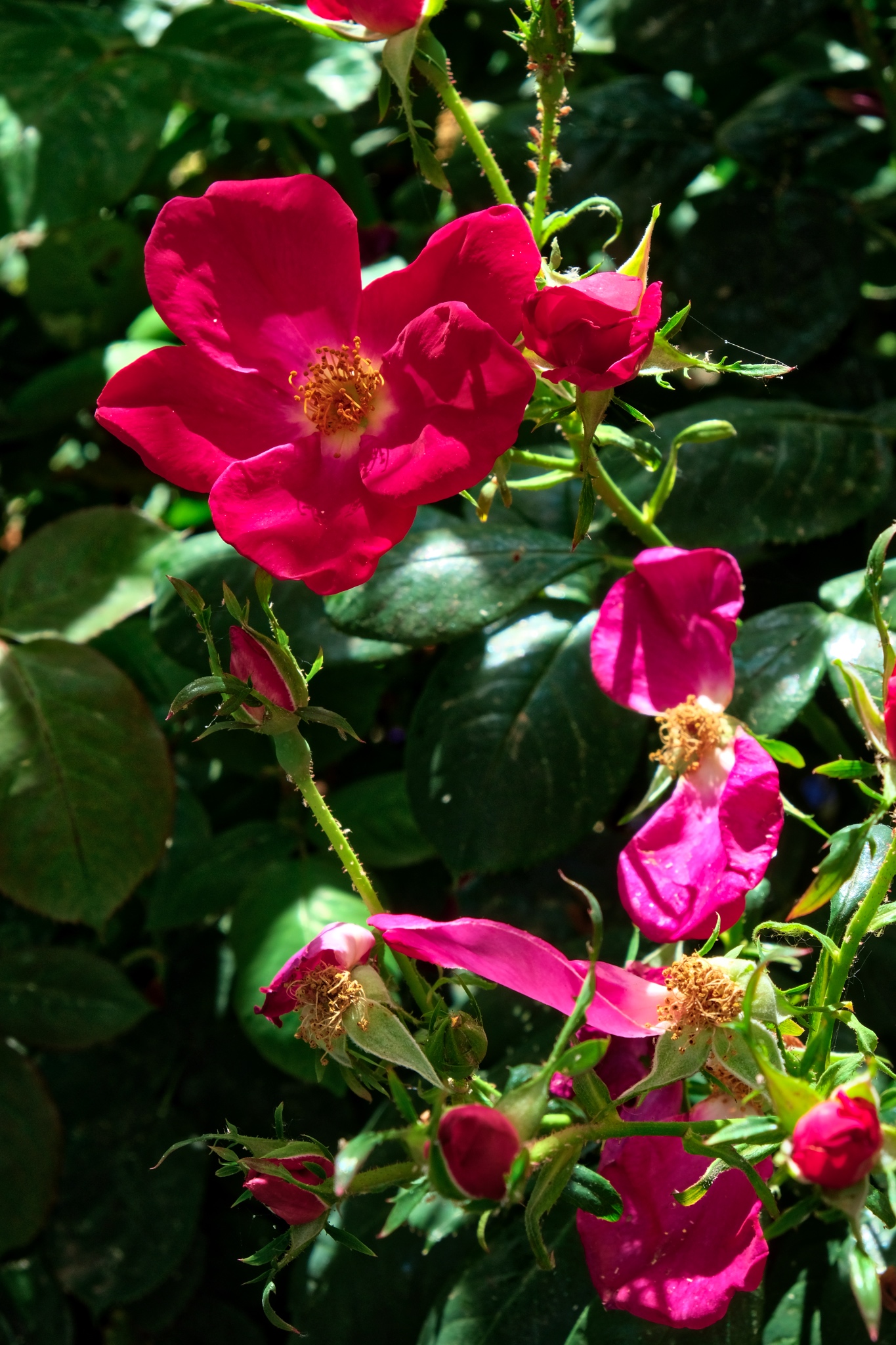 Reds everywhere.
Reds everywhere. Bushes full of red flowers.
Bushes full of red flowers.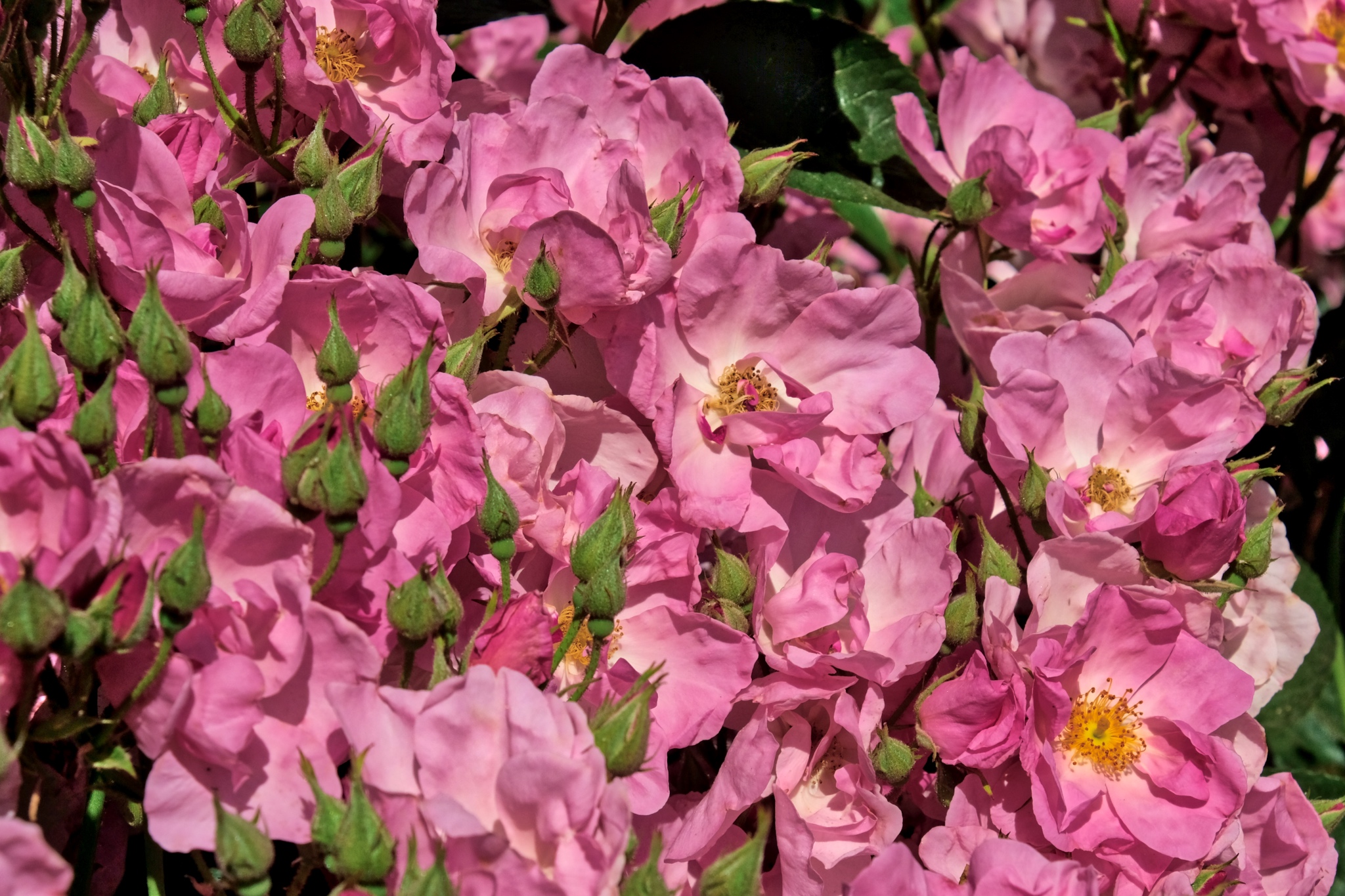 This bush was loaded with pink flowers . . .
This bush was loaded with pink flowers . . .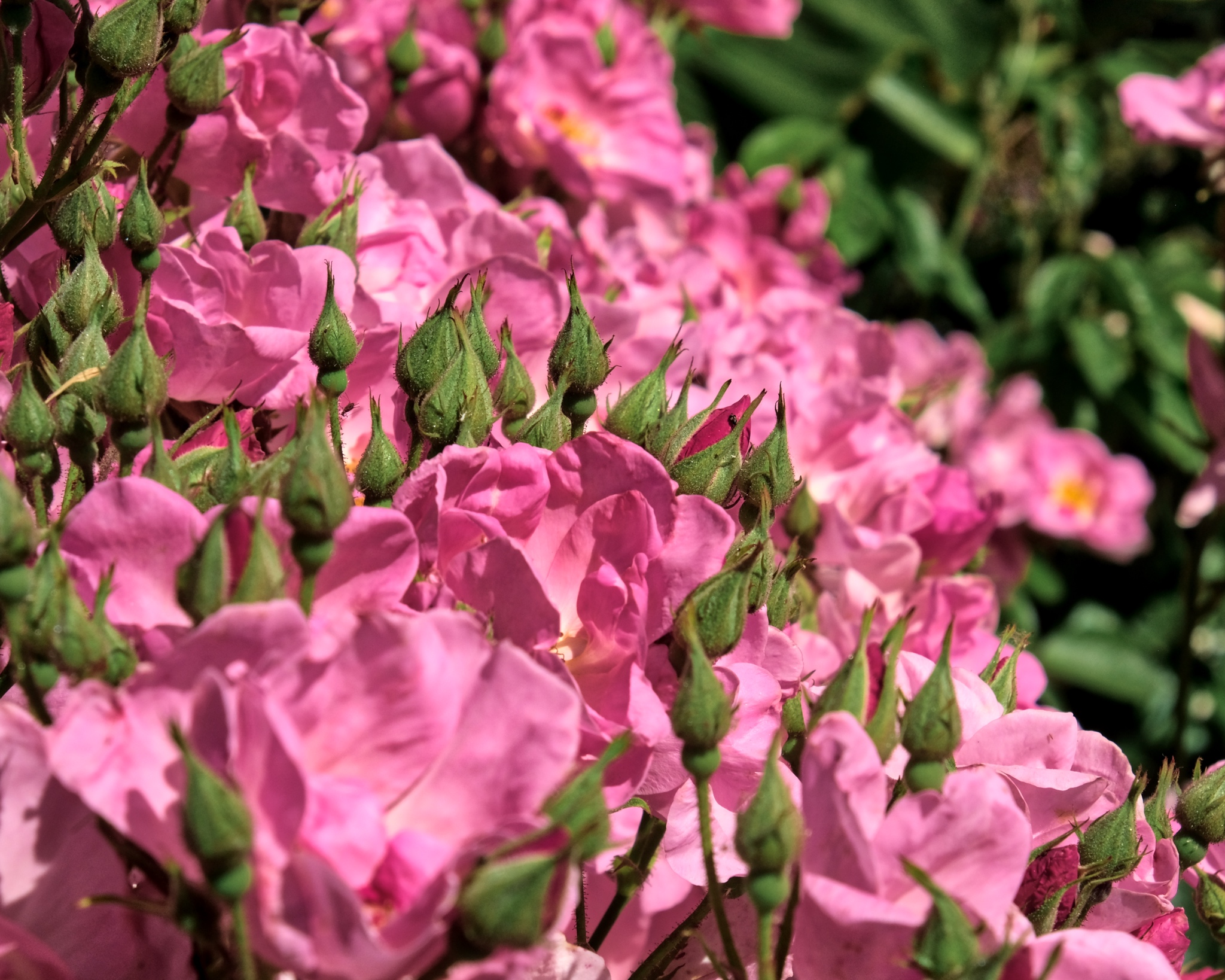 Loaded with flowers . . . and loaded with buds promising continuous flowering into the future.
Loaded with flowers . . . and loaded with buds promising continuous flowering into the future.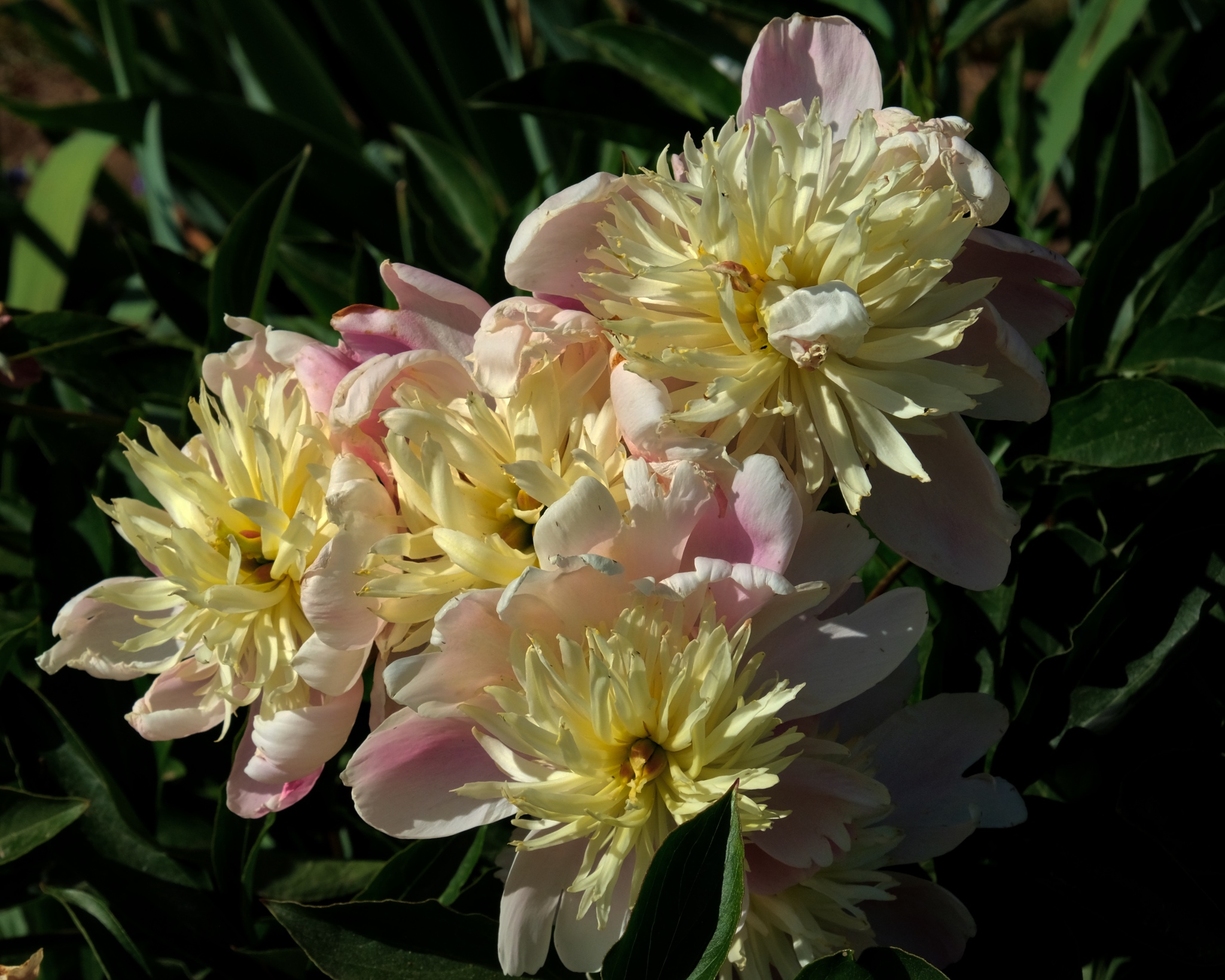 Lots of yellow flowers around too!
Lots of yellow flowers around too!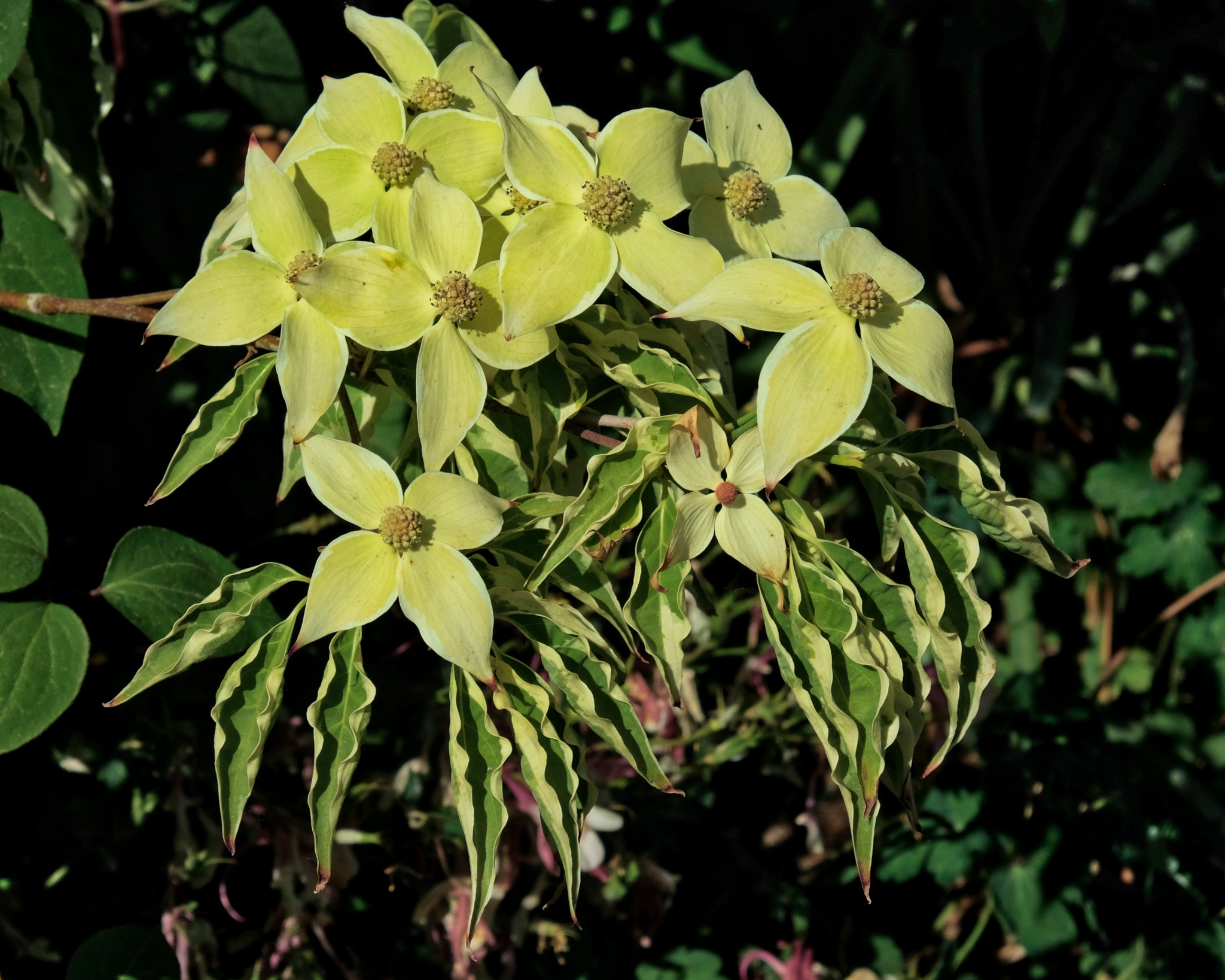 Yellow dogwood.
Yellow dogwood.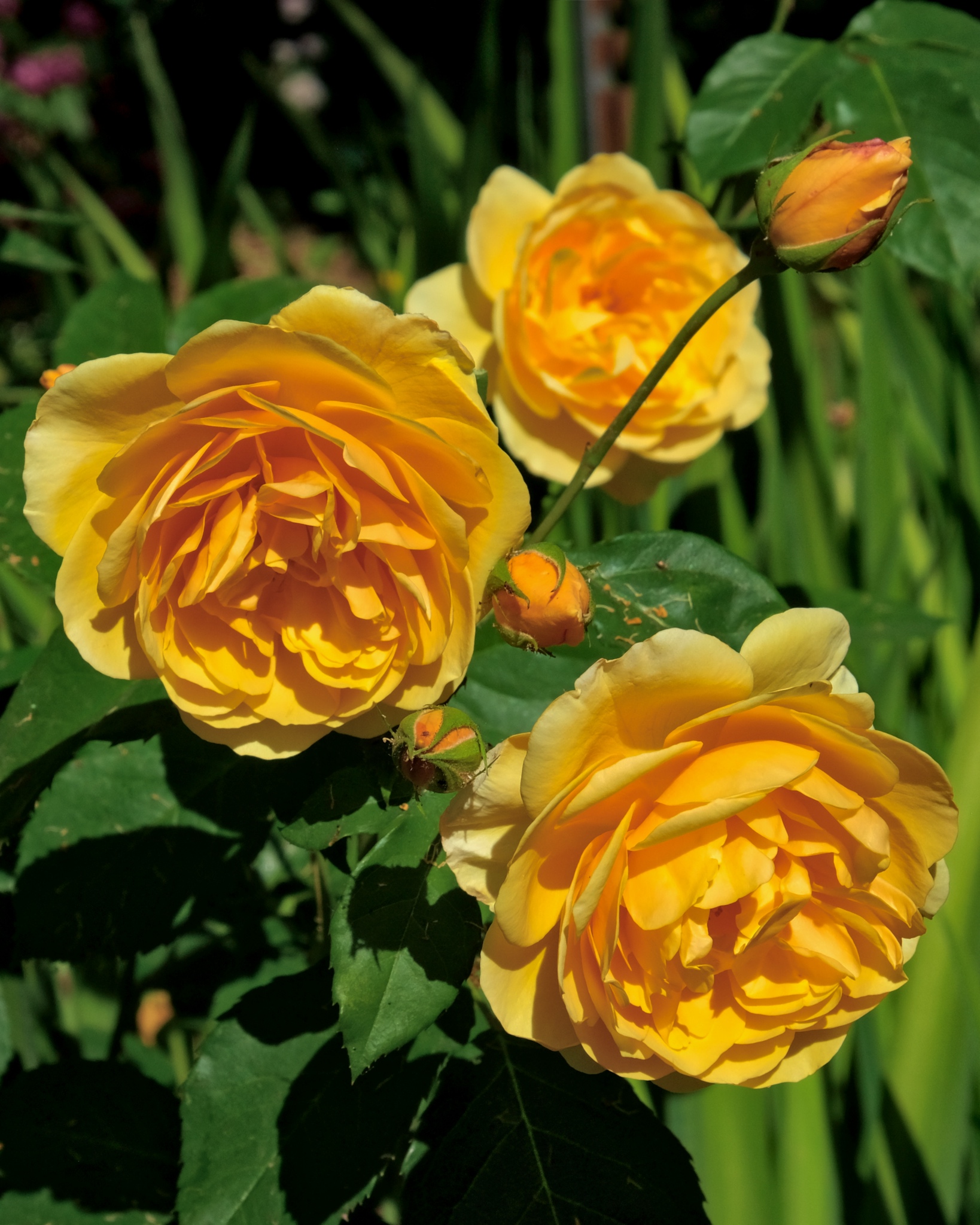 Yellow/Orange roses smelled wonderfully.
Yellow/Orange roses smelled wonderfully.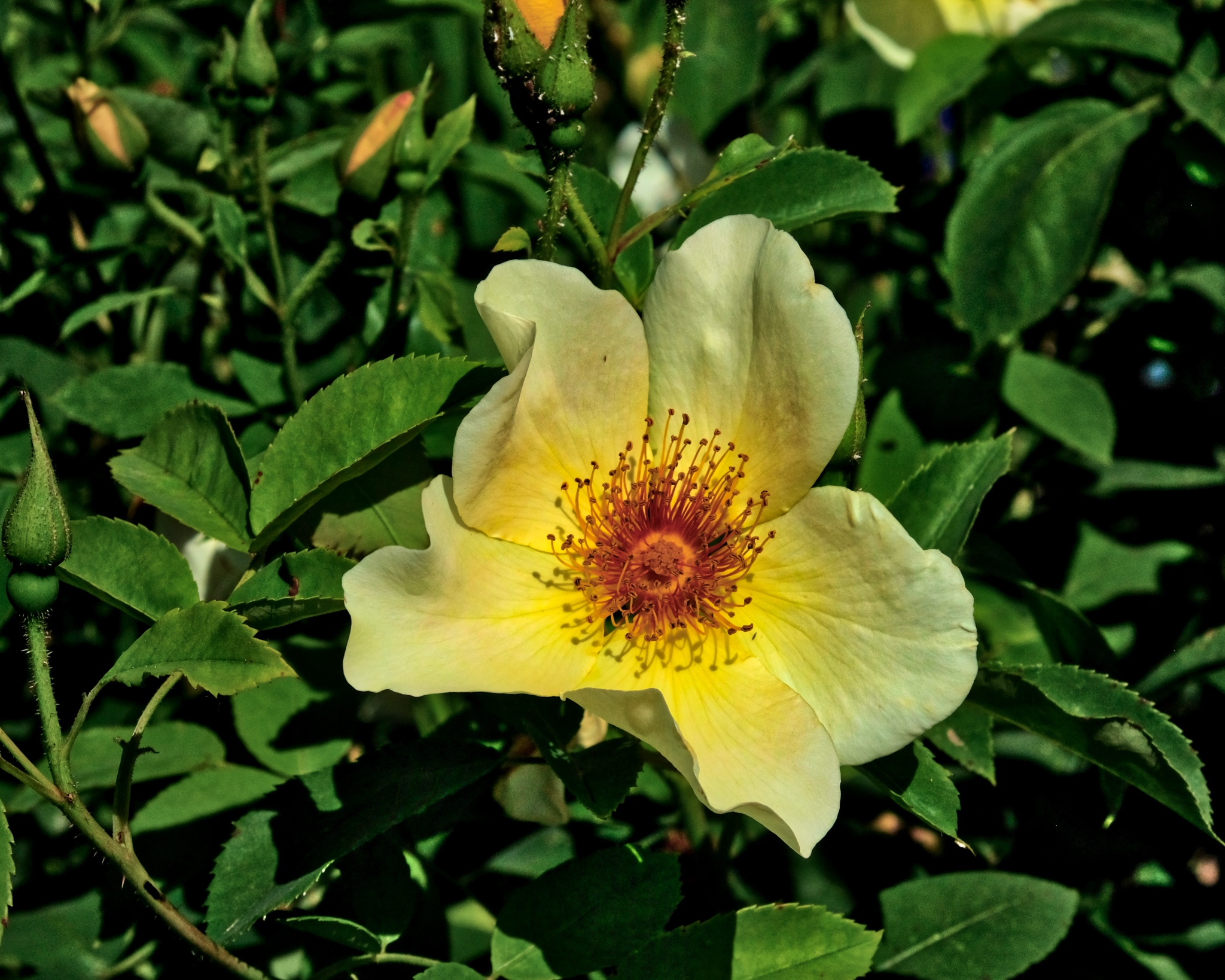 A fluorescent glow from within . . . otherworldly!
A fluorescent glow from within . . . otherworldly!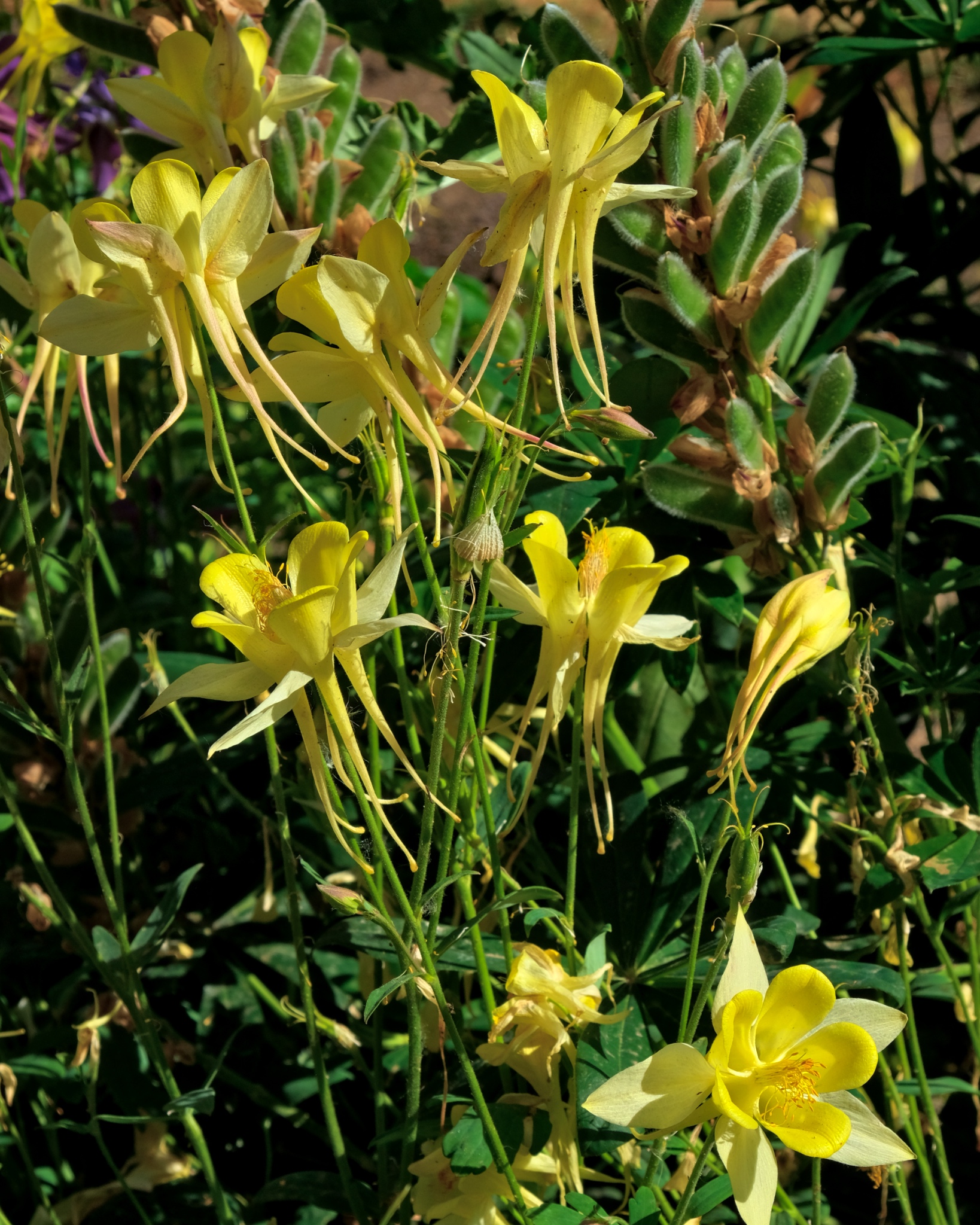 Sweet little yellow ferries!
Sweet little yellow ferries!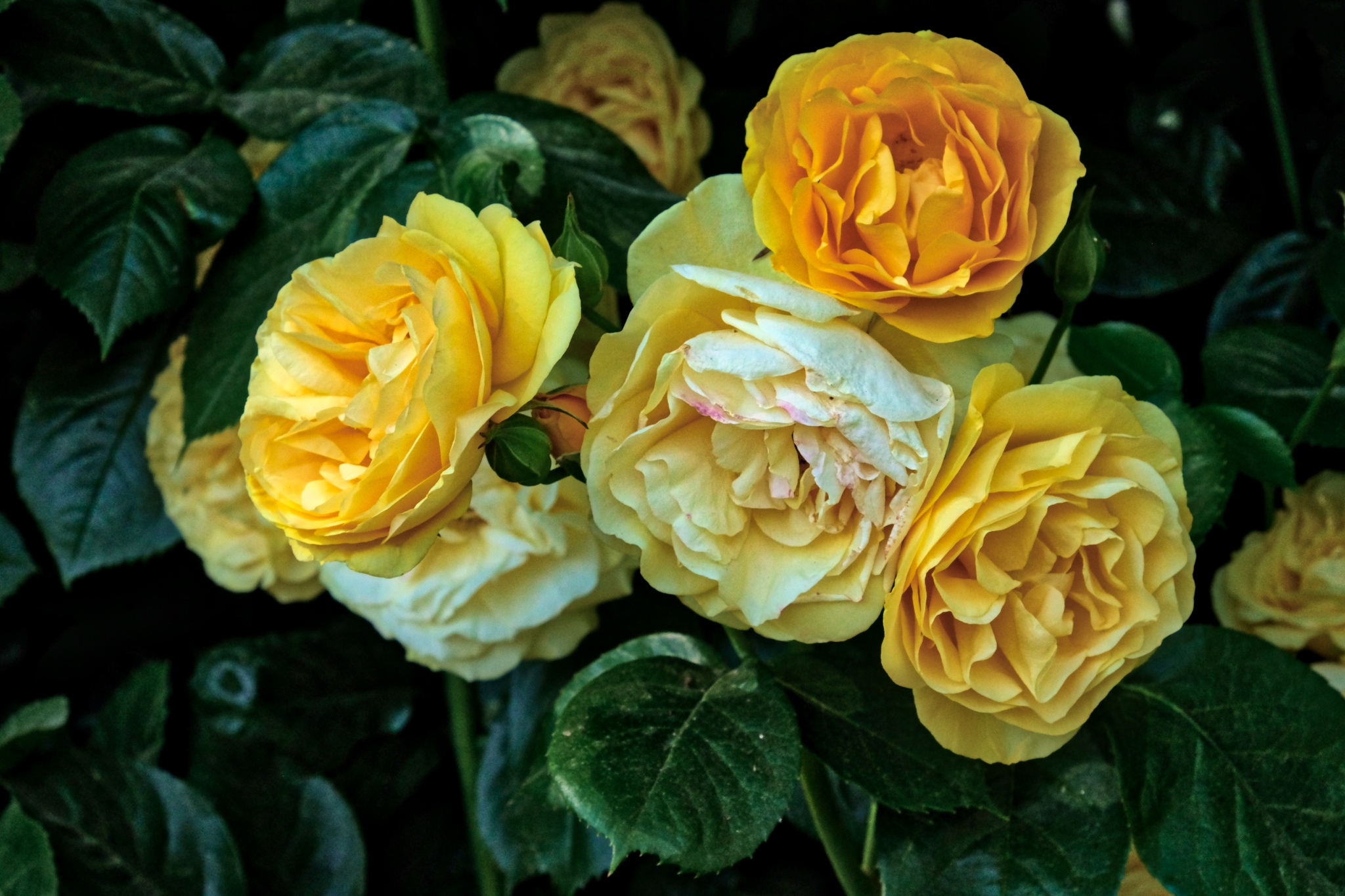 One bush, multiple shades of yellow!
One bush, multiple shades of yellow!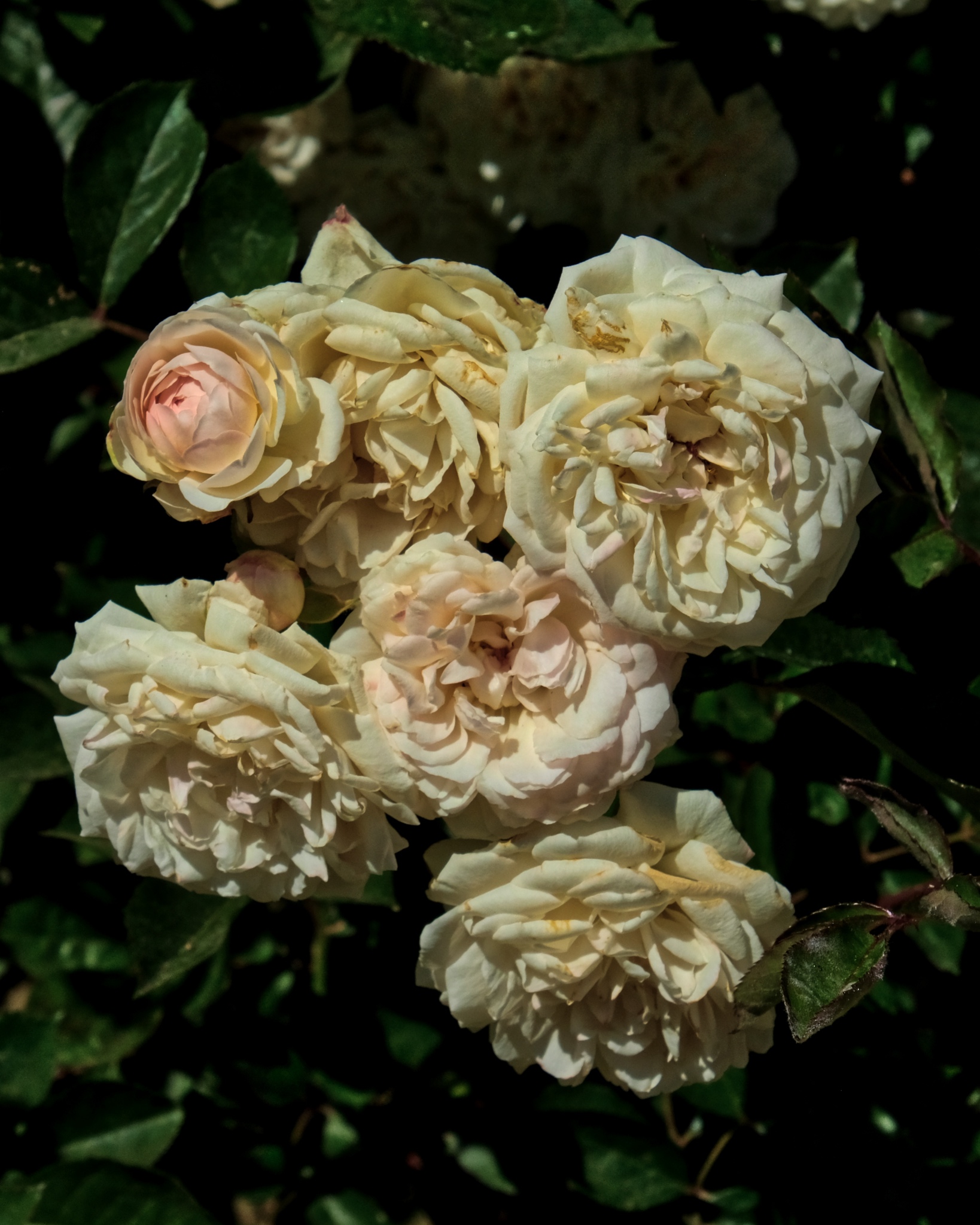 Creamy!
Creamy!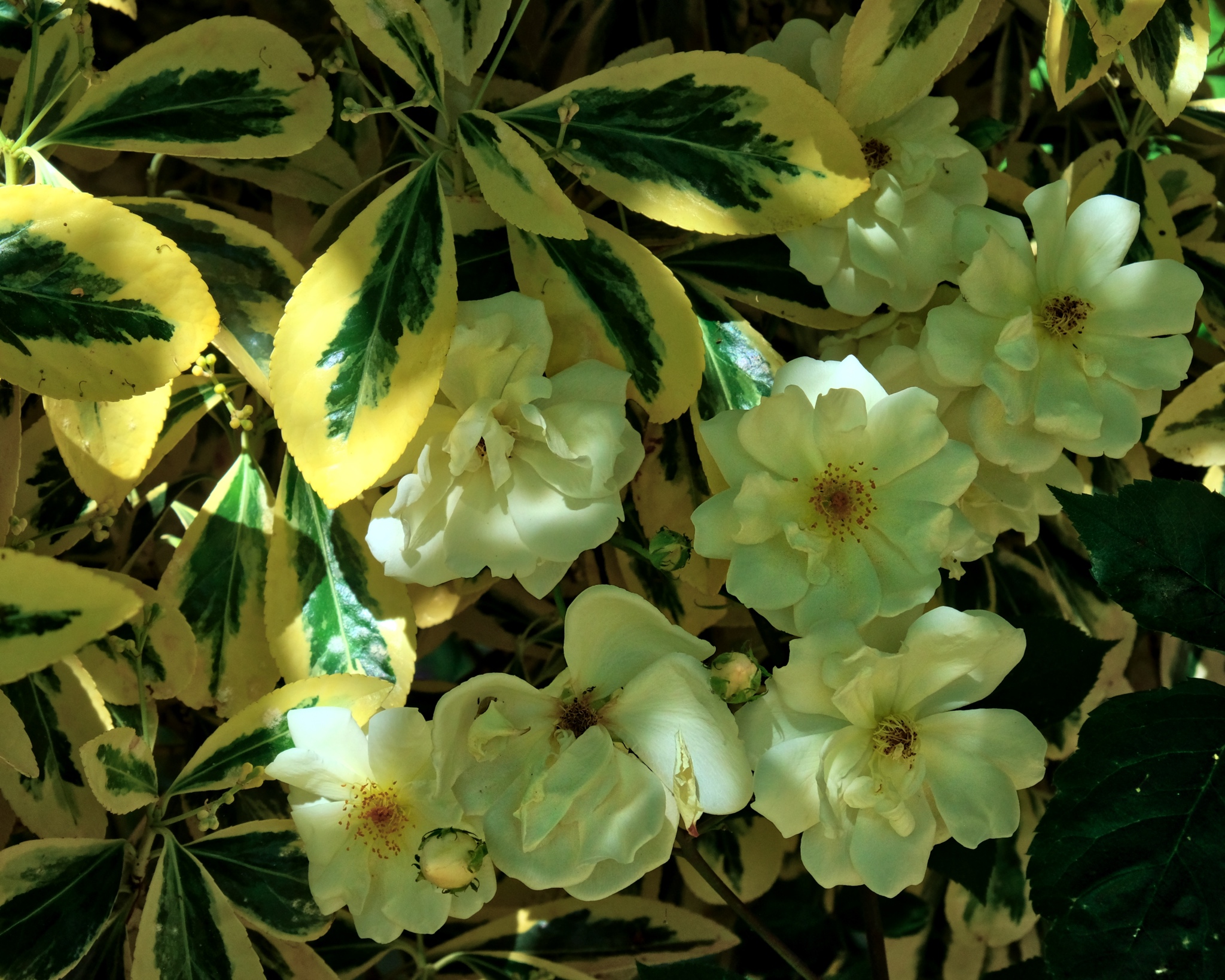 Filtered yellow light falling on a cluster of white flowers.
Filtered yellow light falling on a cluster of white flowers.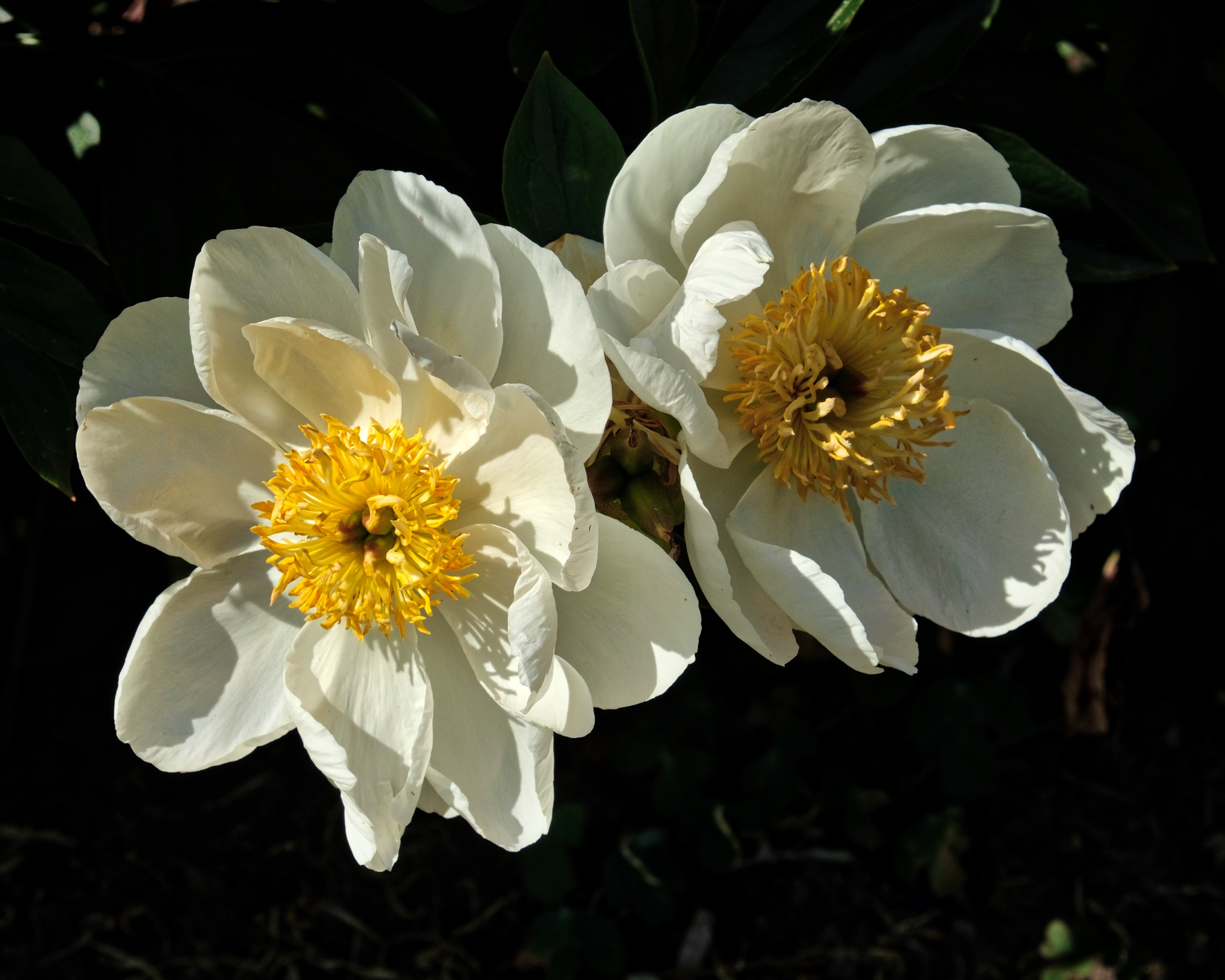 Perfect.
Perfect.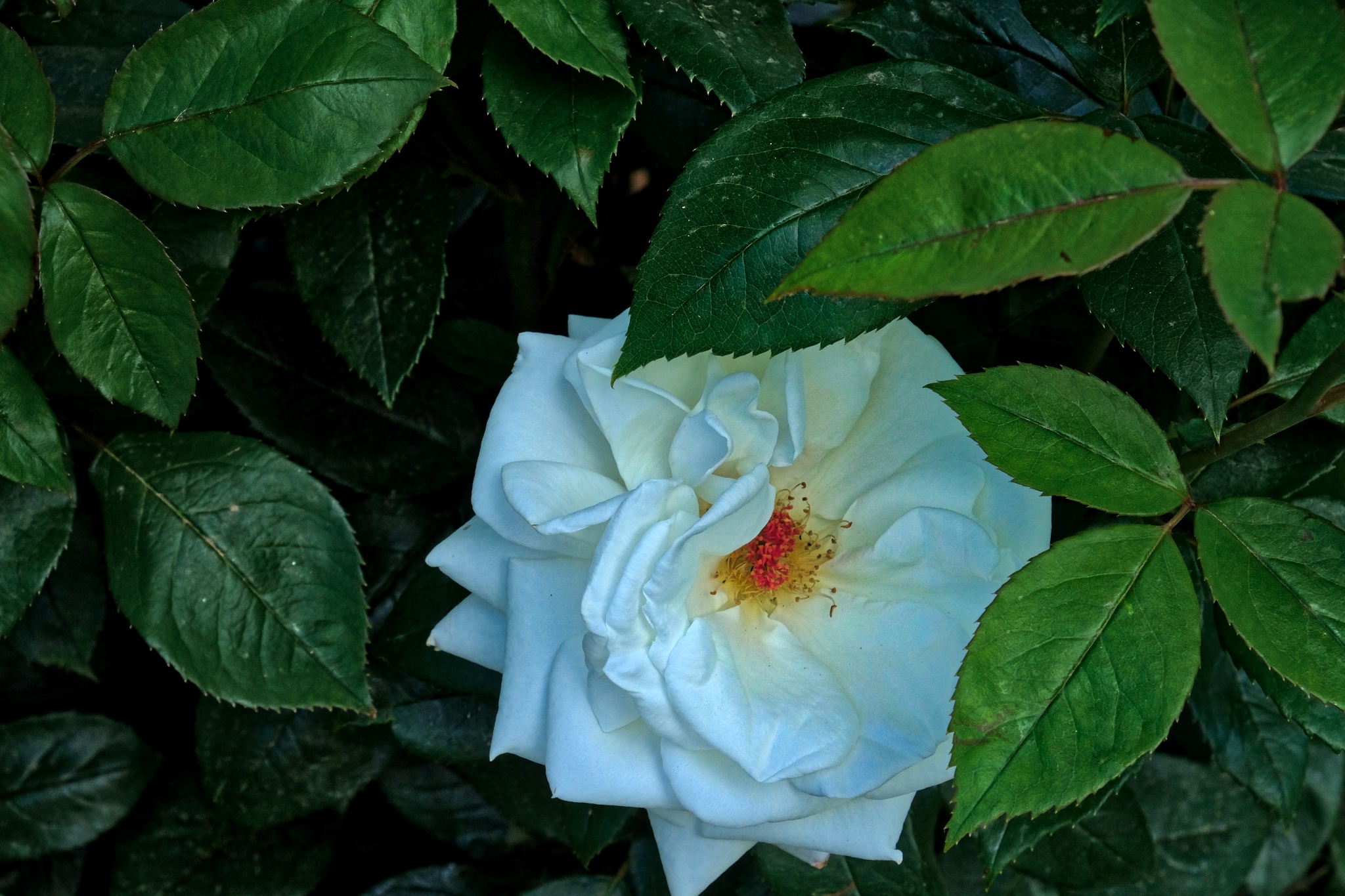 Deep inside a leafy bush . . . perfect white . . . in a perfect garden.
Deep inside a leafy bush . . . perfect white . . . in a perfect garden. They obviously know that their garden is a magnet/catnip to photographers . . . and supplied these wonderful props for families. I hated to leave . . . but a BBQ beckoned!
They obviously know that their garden is a magnet/catnip to photographers . . . and supplied these wonderful props for families. I hated to leave . . . but a BBQ beckoned!Road Trip USA: Billy Frank Jr. Nisqually National Wildlife Refuge
 Thursday, July 5, 2018 at 2:21AM
Thursday, July 5, 2018 at 2:21AM 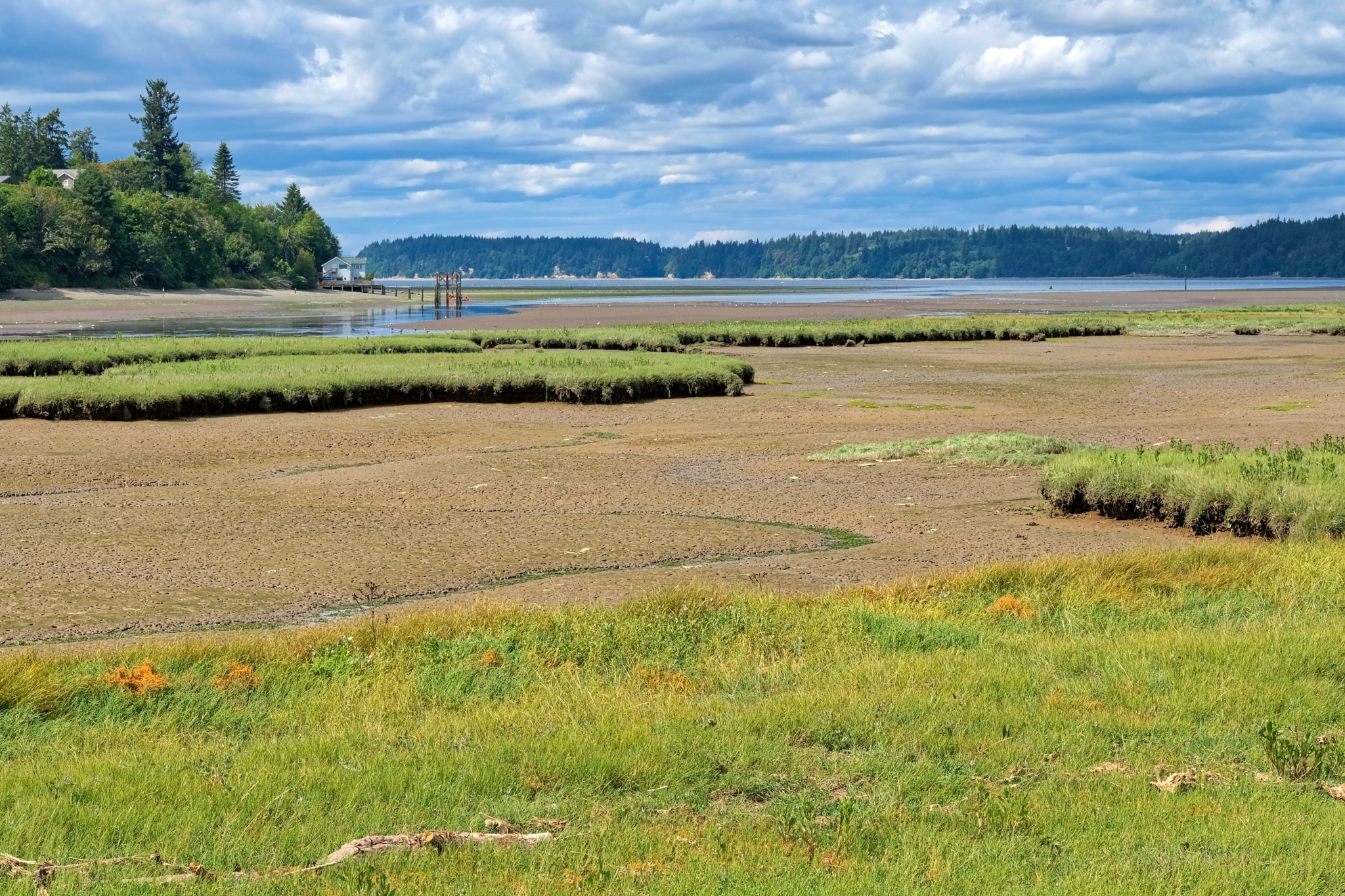 I spent a fine afternoon in the forest, fields, mud flats, and estuary of the Billy Frank Jr. Nisqually National Wildlife Reserve, near Olympia, Washington.
I spent a fine afternoon in the forest, fields, mud flats, and estuary of the Billy Frank Jr. Nisqually National Wildlife Reserve, near Olympia, Washington.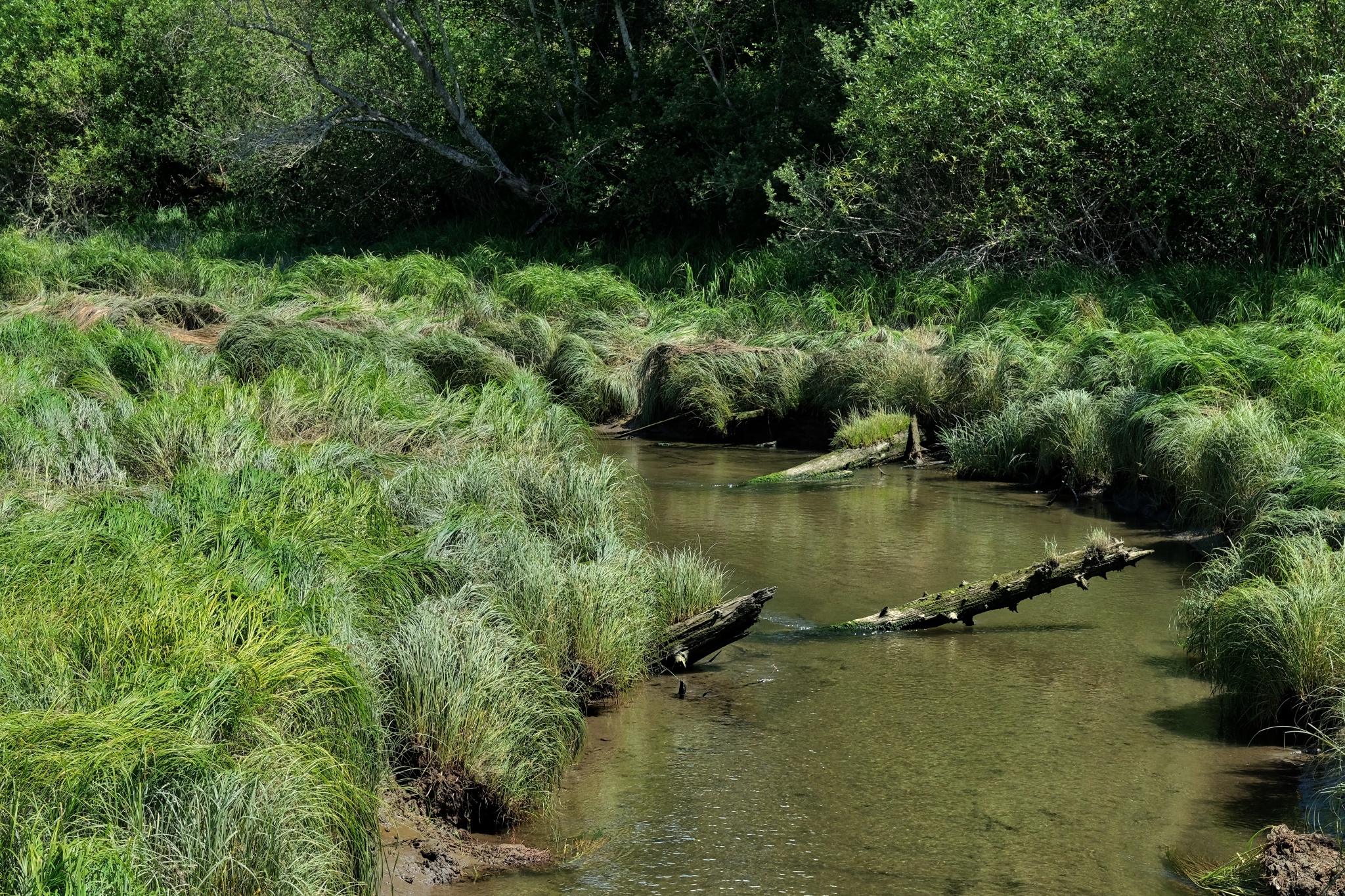 I have wanted to go to the Nisqually Wildlife Reserve since I arrived in Washington a few months ago . . . and today was my chance: perfect weather. I passed Woodland Creek, an estuarial creek, several times before and stopped this time . . . it was on the way.
I have wanted to go to the Nisqually Wildlife Reserve since I arrived in Washington a few months ago . . . and today was my chance: perfect weather. I passed Woodland Creek, an estuarial creek, several times before and stopped this time . . . it was on the way. The wetlands grasses were in full mid-summer lushness.
The wetlands grasses were in full mid-summer lushness.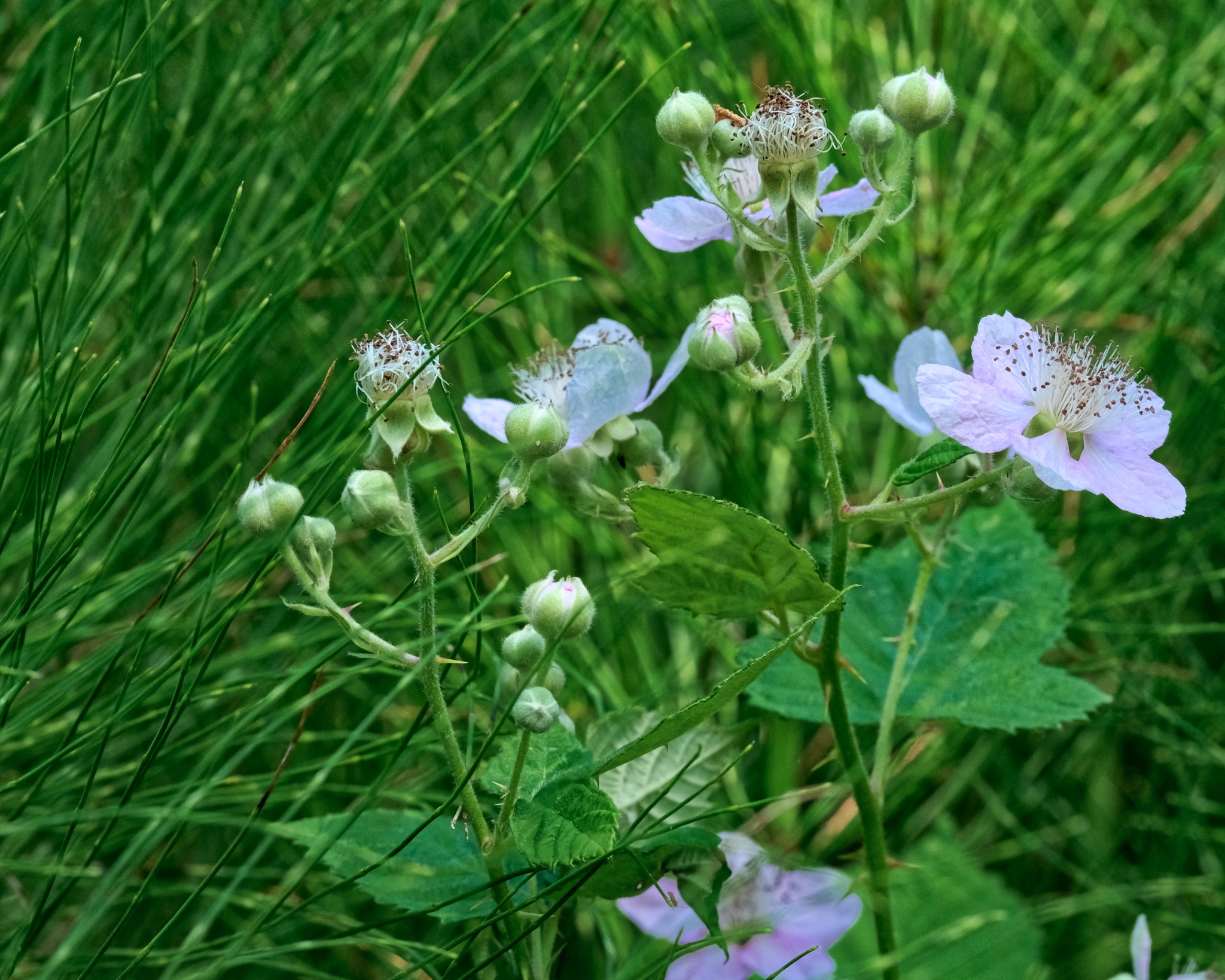 The blackberry vines grew among the horsetail ferns everywhere.
The blackberry vines grew among the horsetail ferns everywhere. Someone hung a large birdhouse along the path.
Someone hung a large birdhouse along the path.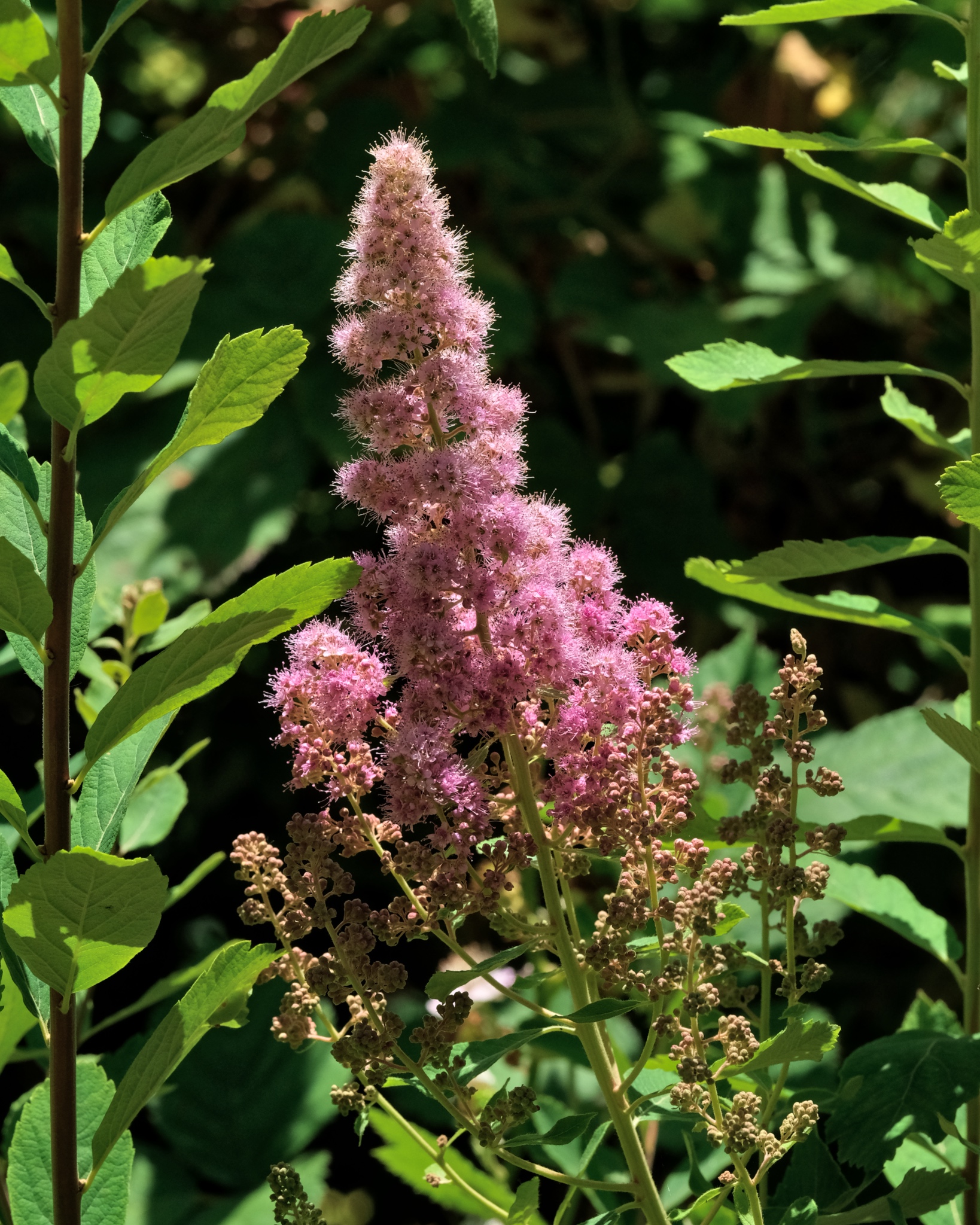 Beautiful summer wildflowers . . . and then a moving distraction along the creek . . .
Beautiful summer wildflowers . . . and then a moving distraction along the creek . . .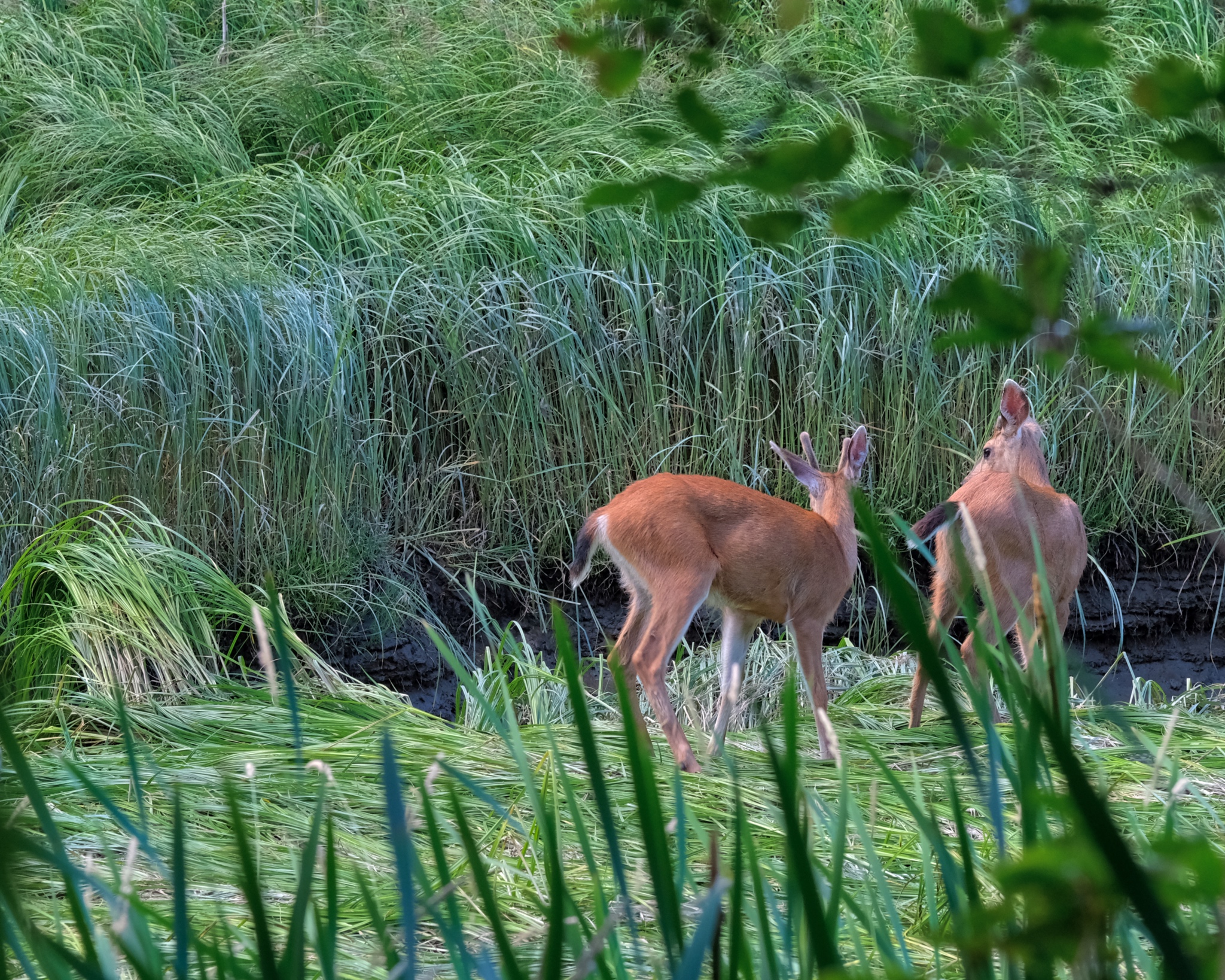 A wonderful surprise . . . . I sat very quietly, not 20 yards away.
A wonderful surprise . . . . I sat very quietly, not 20 yards away. I watched, and photographed, for over a half hour . . .
I watched, and photographed, for over a half hour . . . 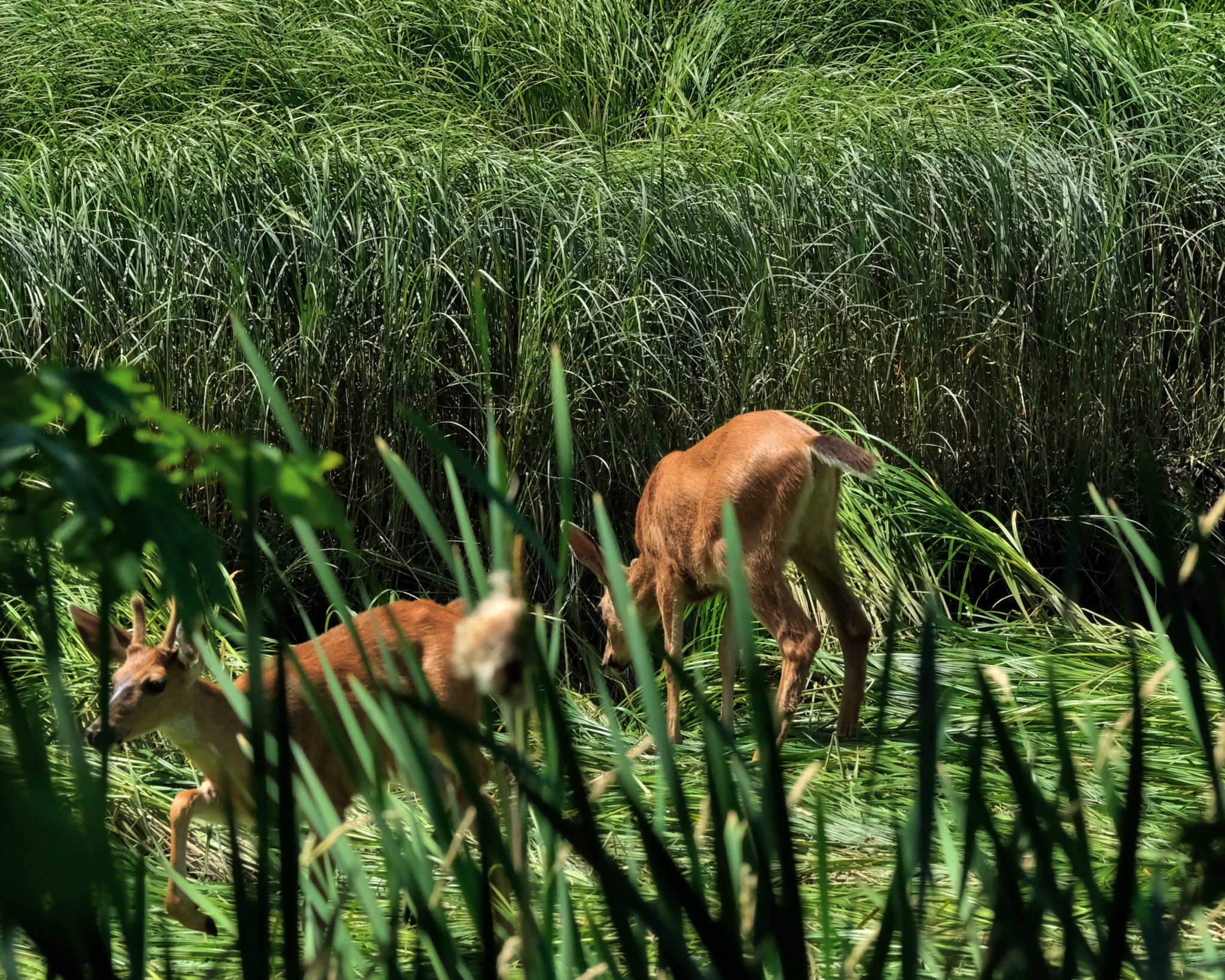 They finally moved on along, walking in the Woodland Creek streambed. I followed, but lost sight of them in the dense forest.
They finally moved on along, walking in the Woodland Creek streambed. I followed, but lost sight of them in the dense forest.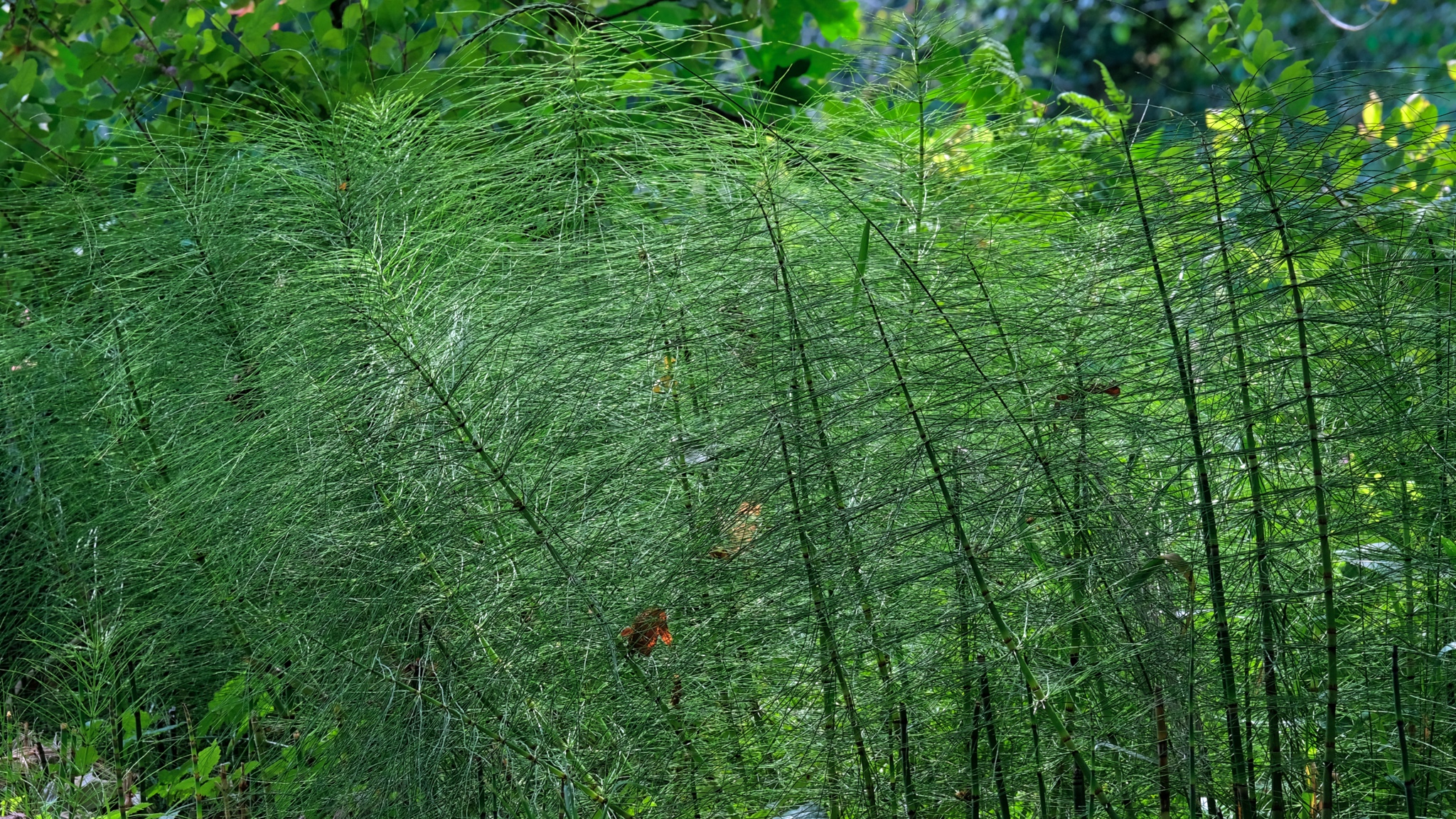 I wandered back to my camper along a horsetail fern-lined trail, and drove out to the Nisqually estuary.
I wandered back to my camper along a horsetail fern-lined trail, and drove out to the Nisqually estuary.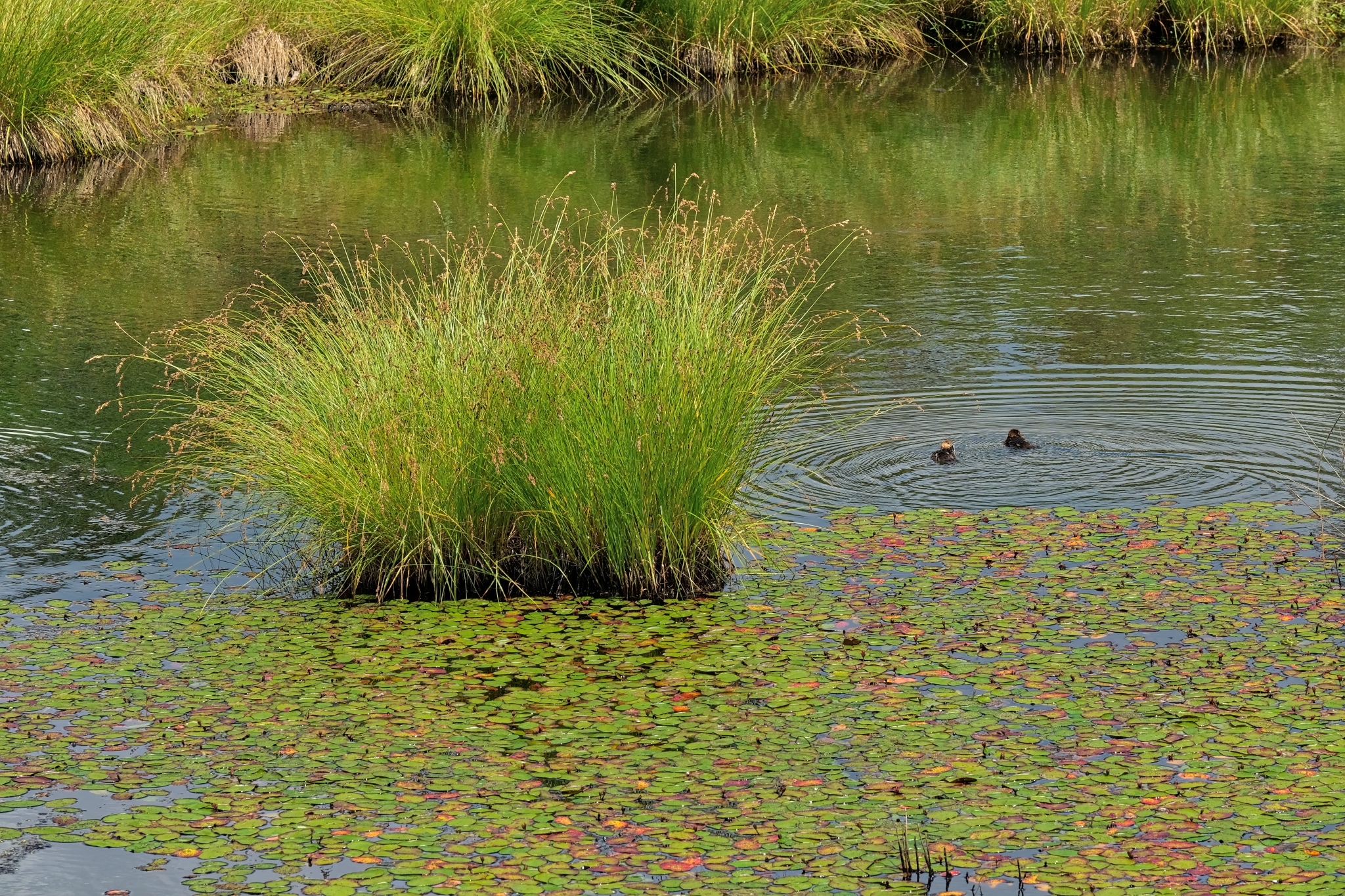 The Nisqually National Wildlife Reserve is comprised of four distinct natural ecological settings: freshwater ponds, wet forests, former farm fields, and estuarial mud flats (I visited during extreme low tide). All areas were fantastic! Here, diving ducks in a freshwater pond.
The Nisqually National Wildlife Reserve is comprised of four distinct natural ecological settings: freshwater ponds, wet forests, former farm fields, and estuarial mud flats (I visited during extreme low tide). All areas were fantastic! Here, diving ducks in a freshwater pond.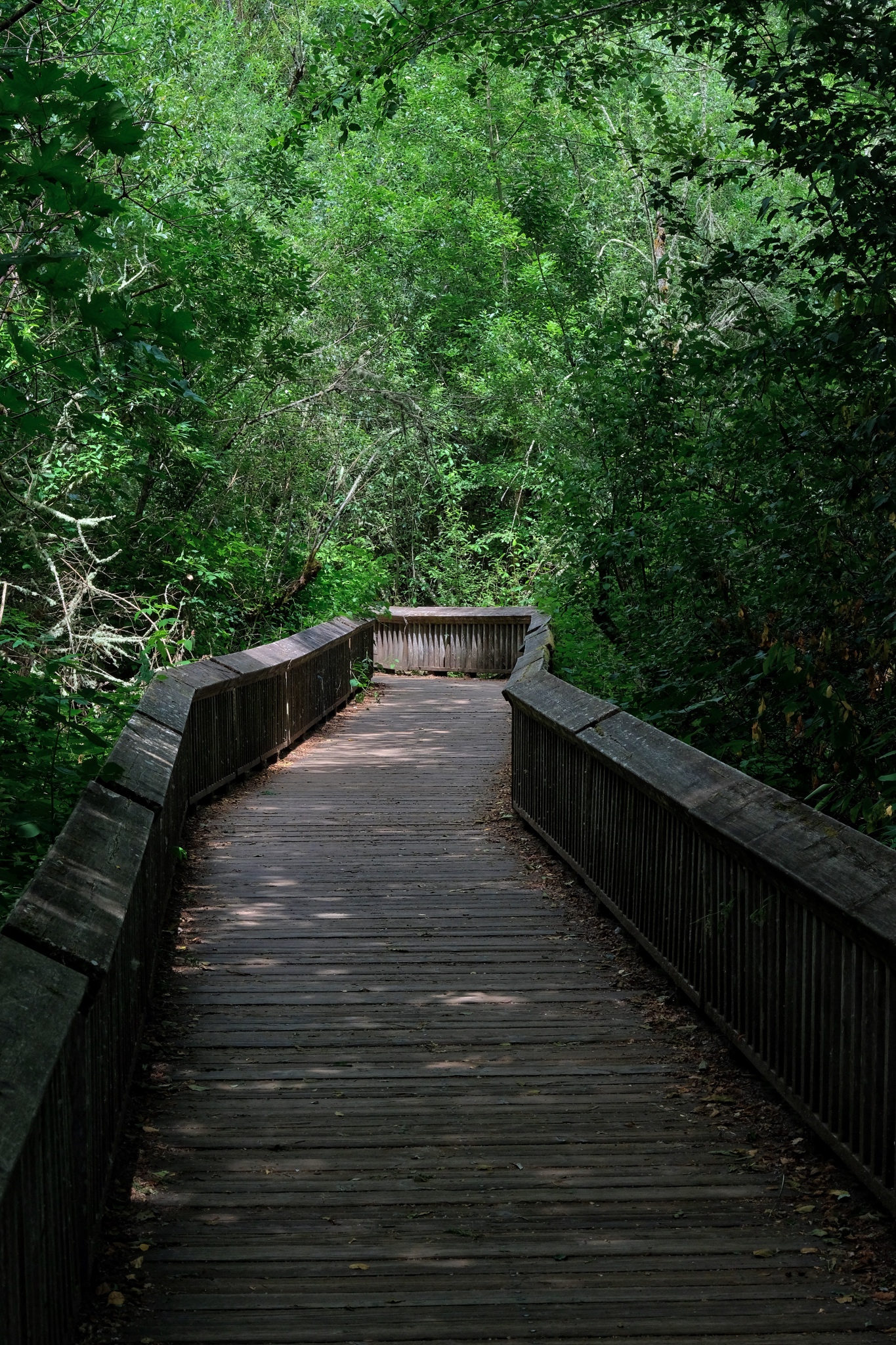 Elevated wooden walkways took visitors out into, and above the delicate ecology of the wet forest.
Elevated wooden walkways took visitors out into, and above the delicate ecology of the wet forest.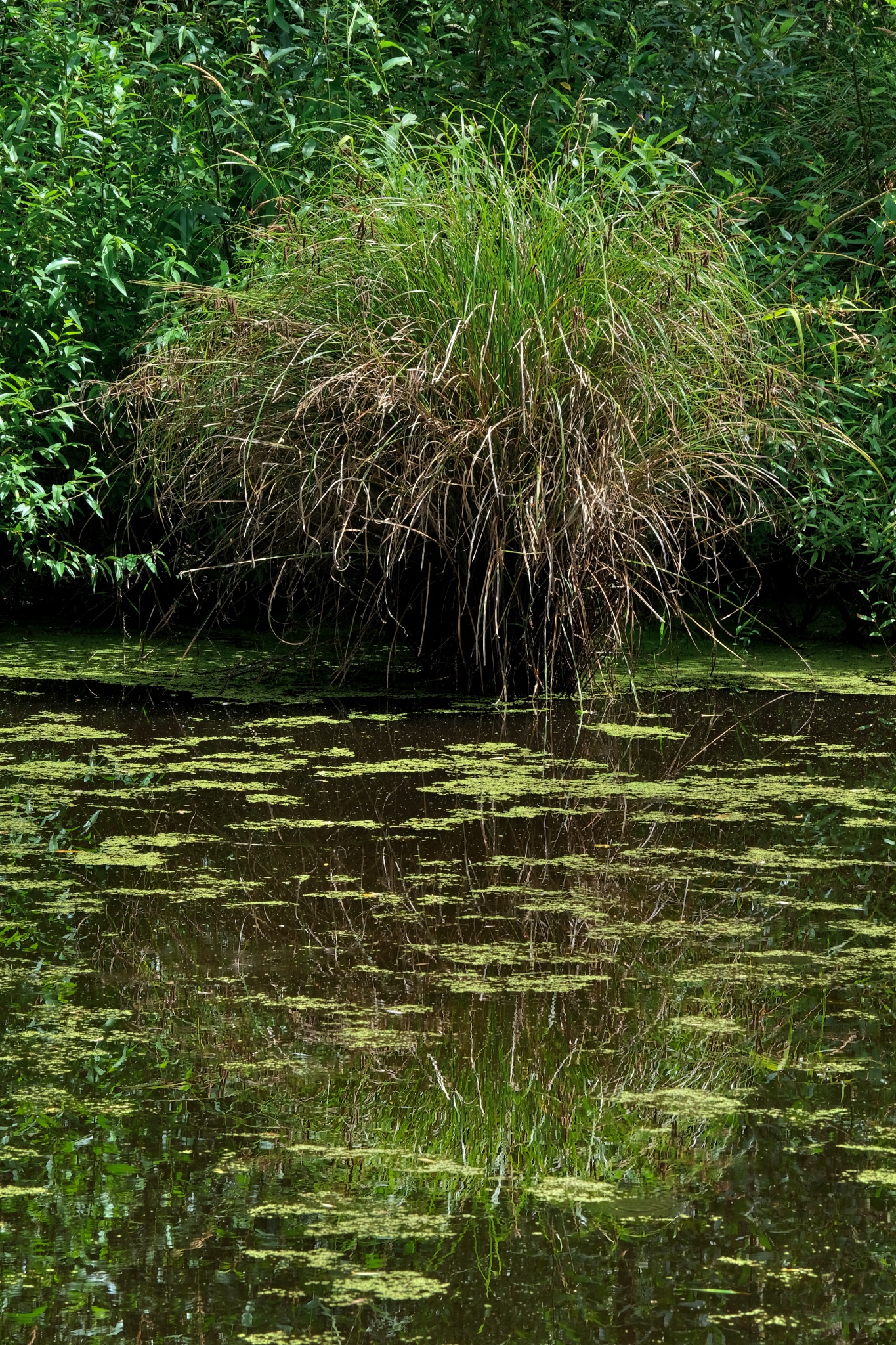 The elevated walkways afforded wonderful views of the freshwater wetlands.
The elevated walkways afforded wonderful views of the freshwater wetlands.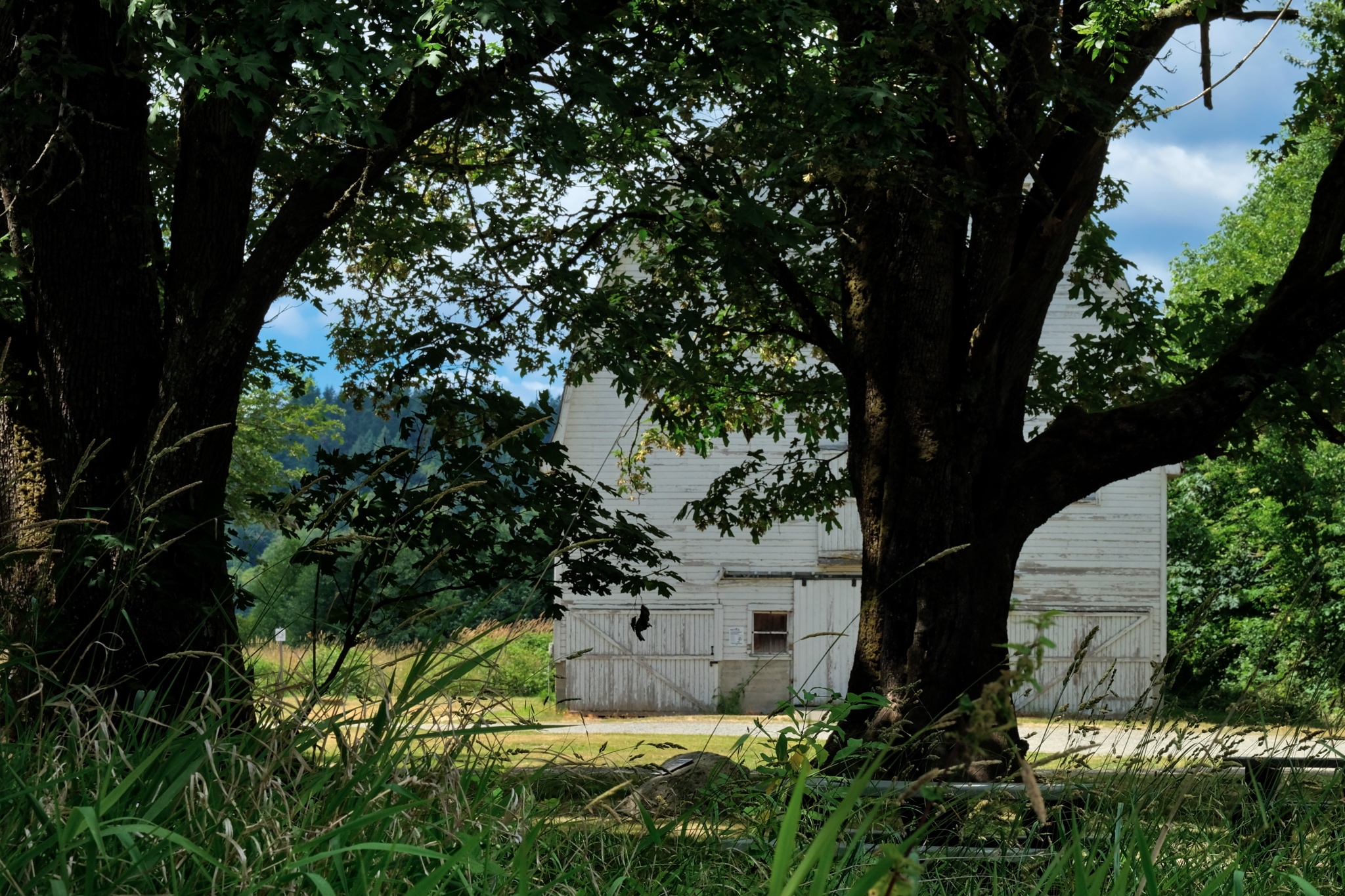 At the edge of the forest were the barns of an old settlement farm.
At the edge of the forest were the barns of an old settlement farm.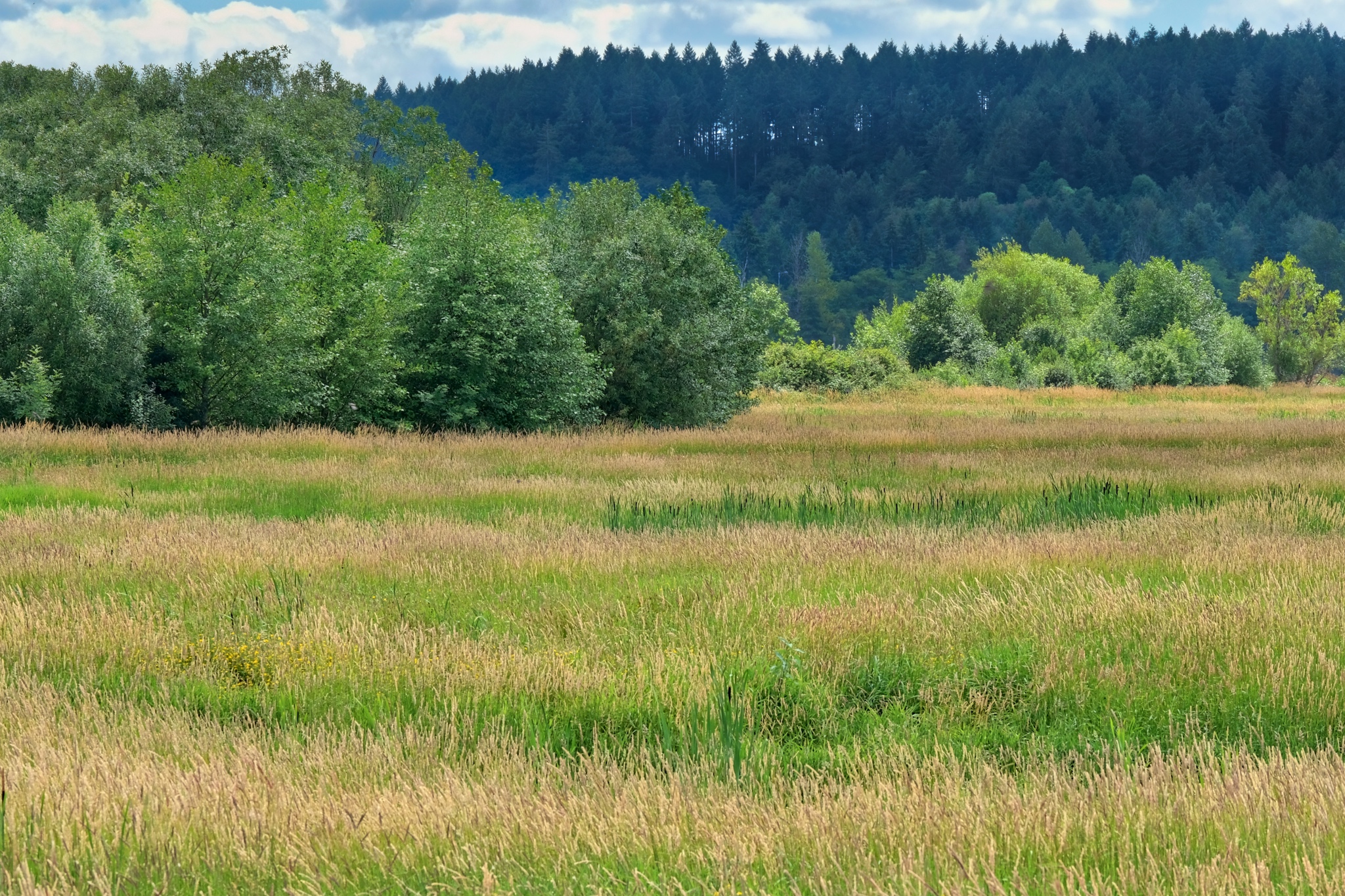 Early settlers expended a huge amount of labor and resources building a system of dykes to drain some of the Nisqually Estuary for farmland. The land now stands uncultivated . . . for the benefit of wildlife habitat.
Early settlers expended a huge amount of labor and resources building a system of dykes to drain some of the Nisqually Estuary for farmland. The land now stands uncultivated . . . for the benefit of wildlife habitat.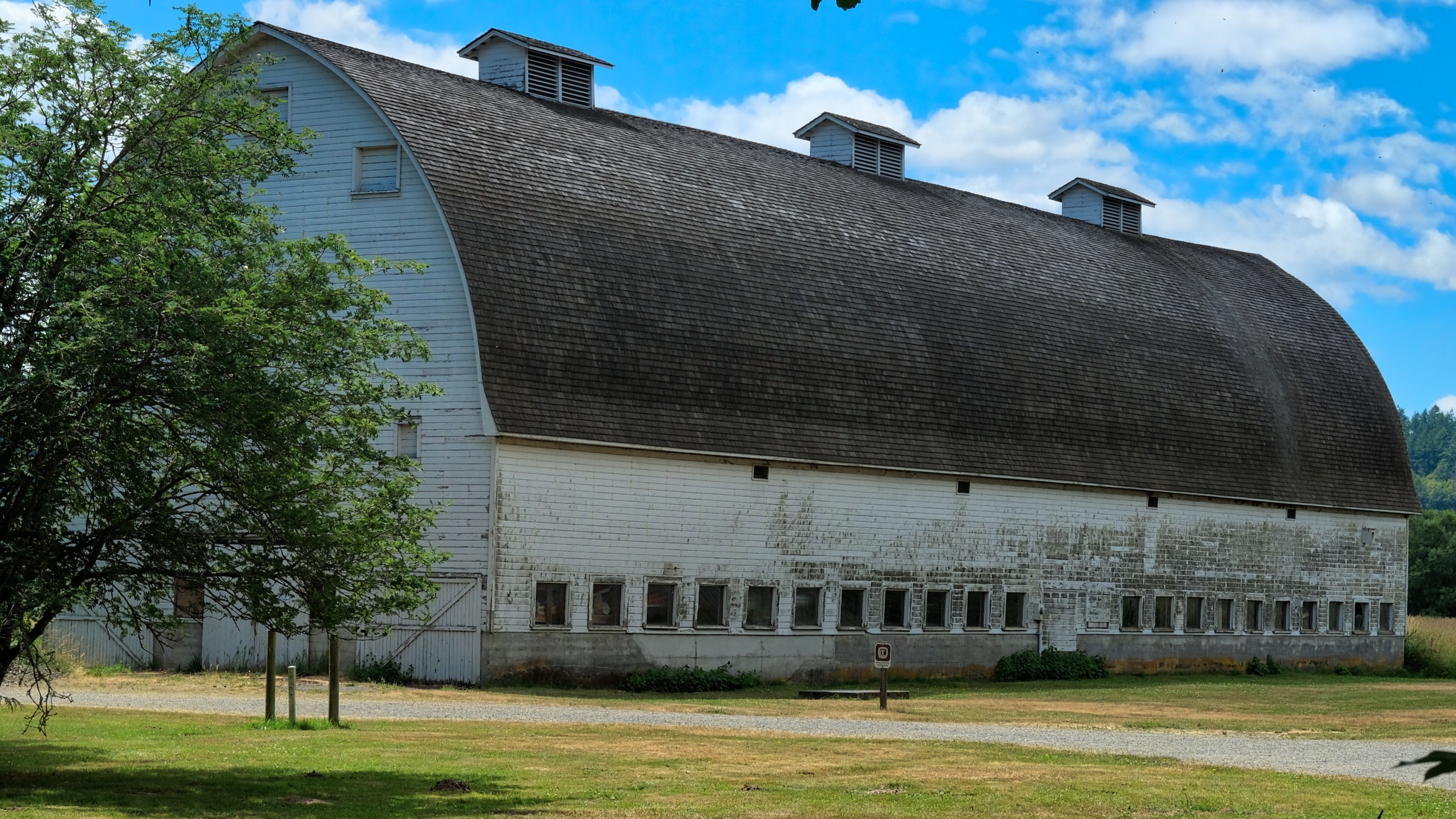 The huge barn, now a part of the National Wildlife Reserve.
The huge barn, now a part of the National Wildlife Reserve.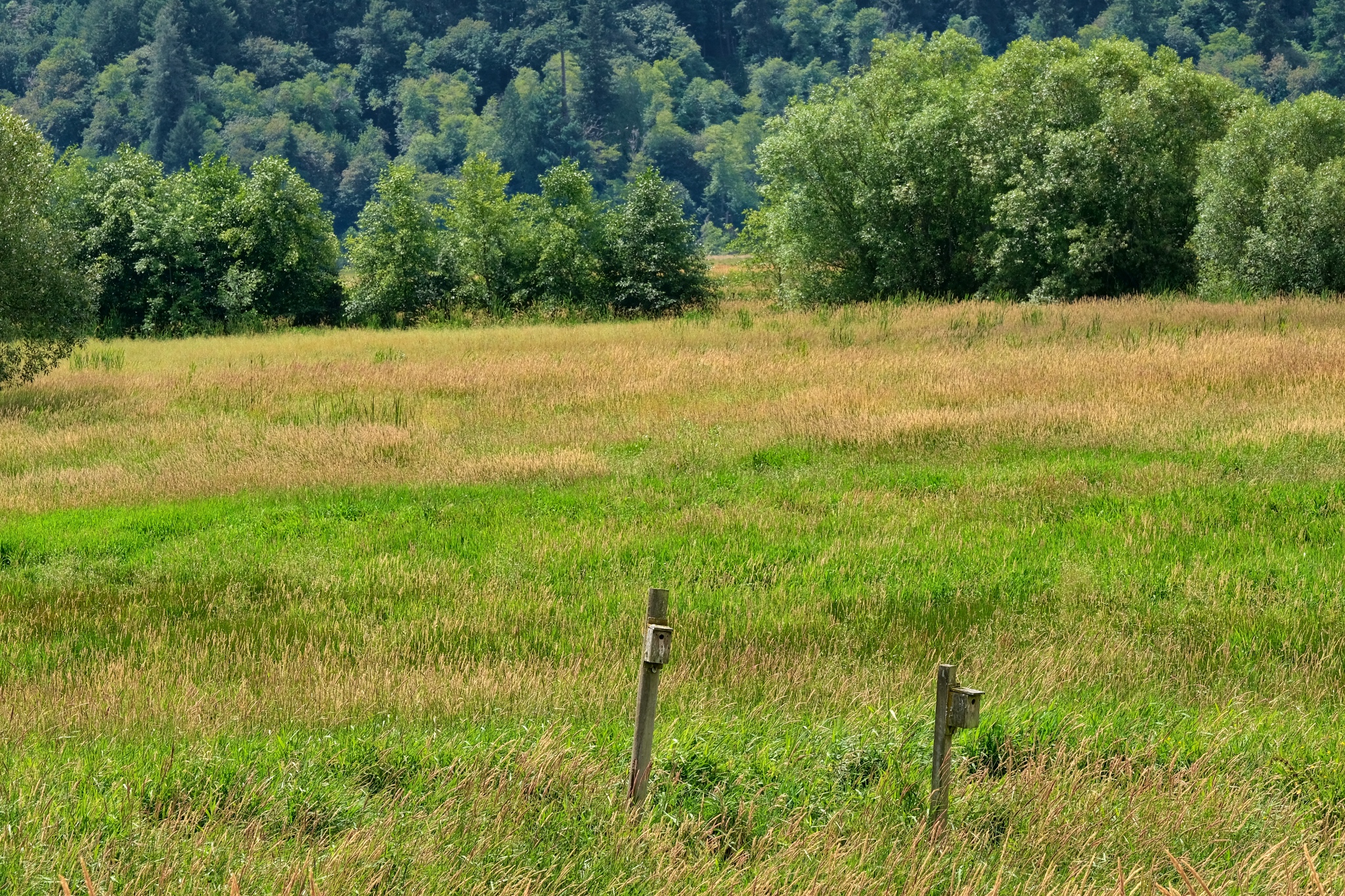 The colors of the fields and surrounding hills were breathtaking!
The colors of the fields and surrounding hills were breathtaking!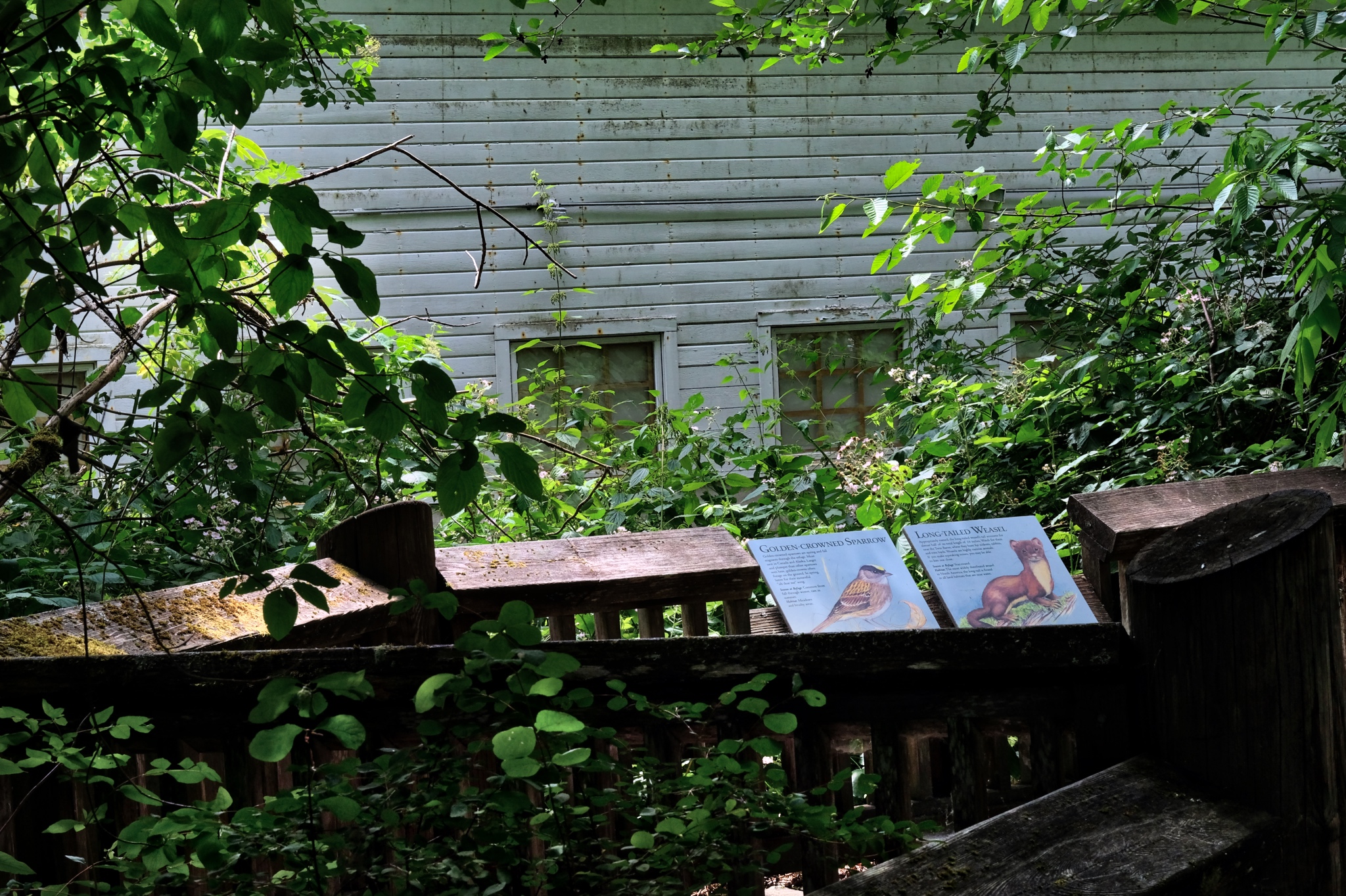 All the paths were well marked with informational signage about the indigenous flora, fauna, and local geology.
All the paths were well marked with informational signage about the indigenous flora, fauna, and local geology.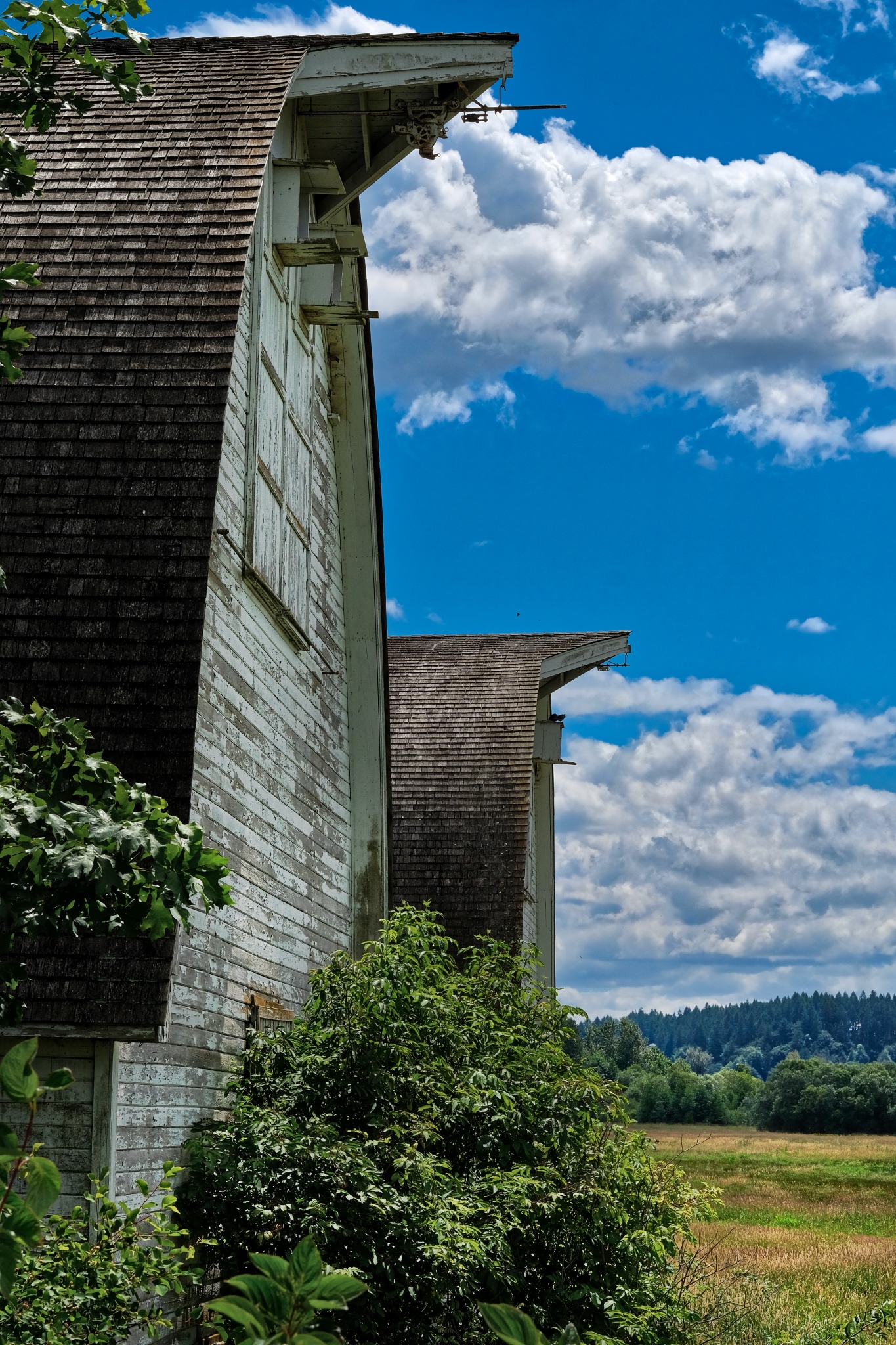 A wonderful angle from which to view the mammoth barns!
A wonderful angle from which to view the mammoth barns!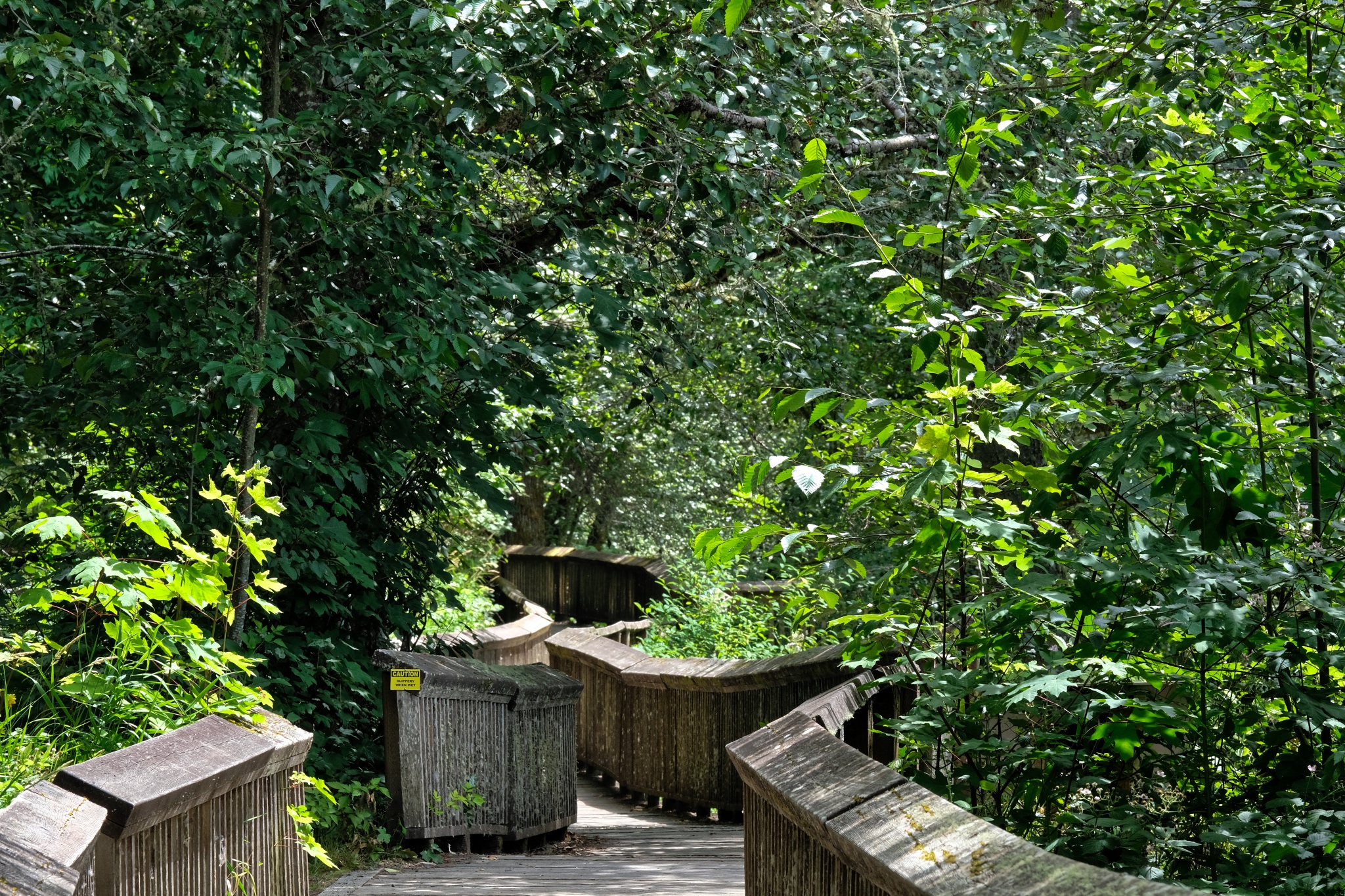 I wandered around some more on the elevated walkways, stopping here and there to take flower photos.
I wandered around some more on the elevated walkways, stopping here and there to take flower photos.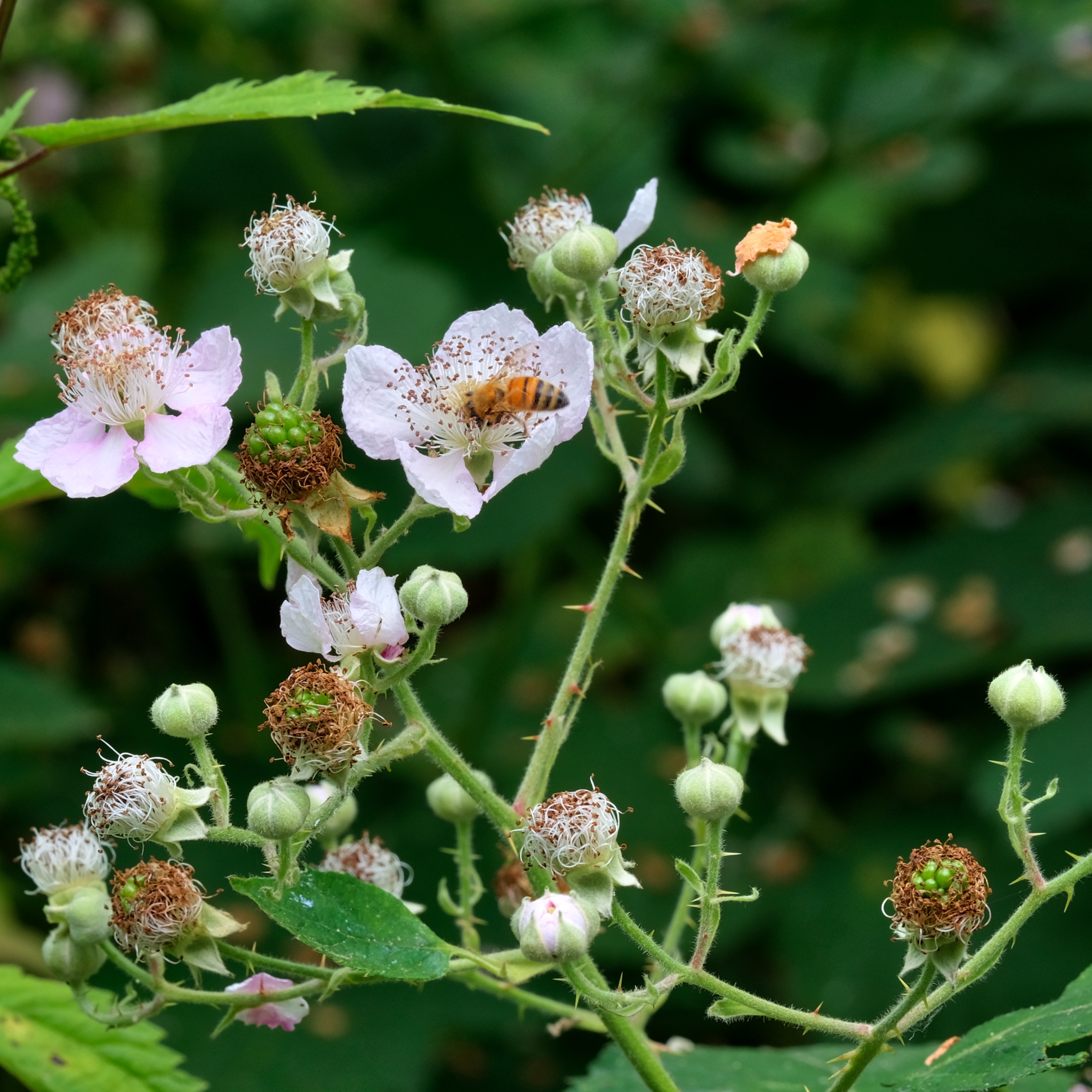 Busy bees . . . and . . .
Busy bees . . . and . . .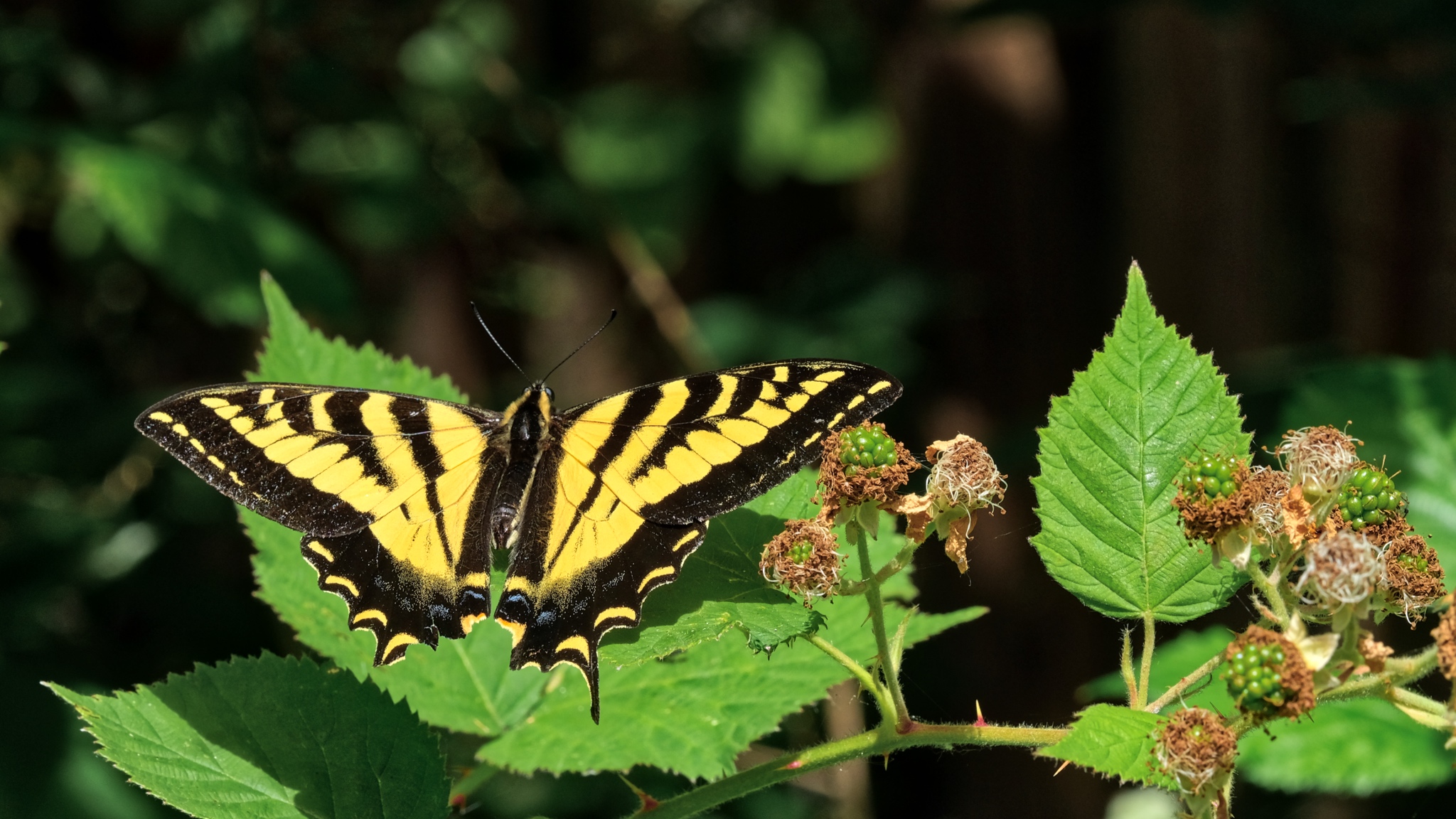 Busy butterflies too!
Busy butterflies too!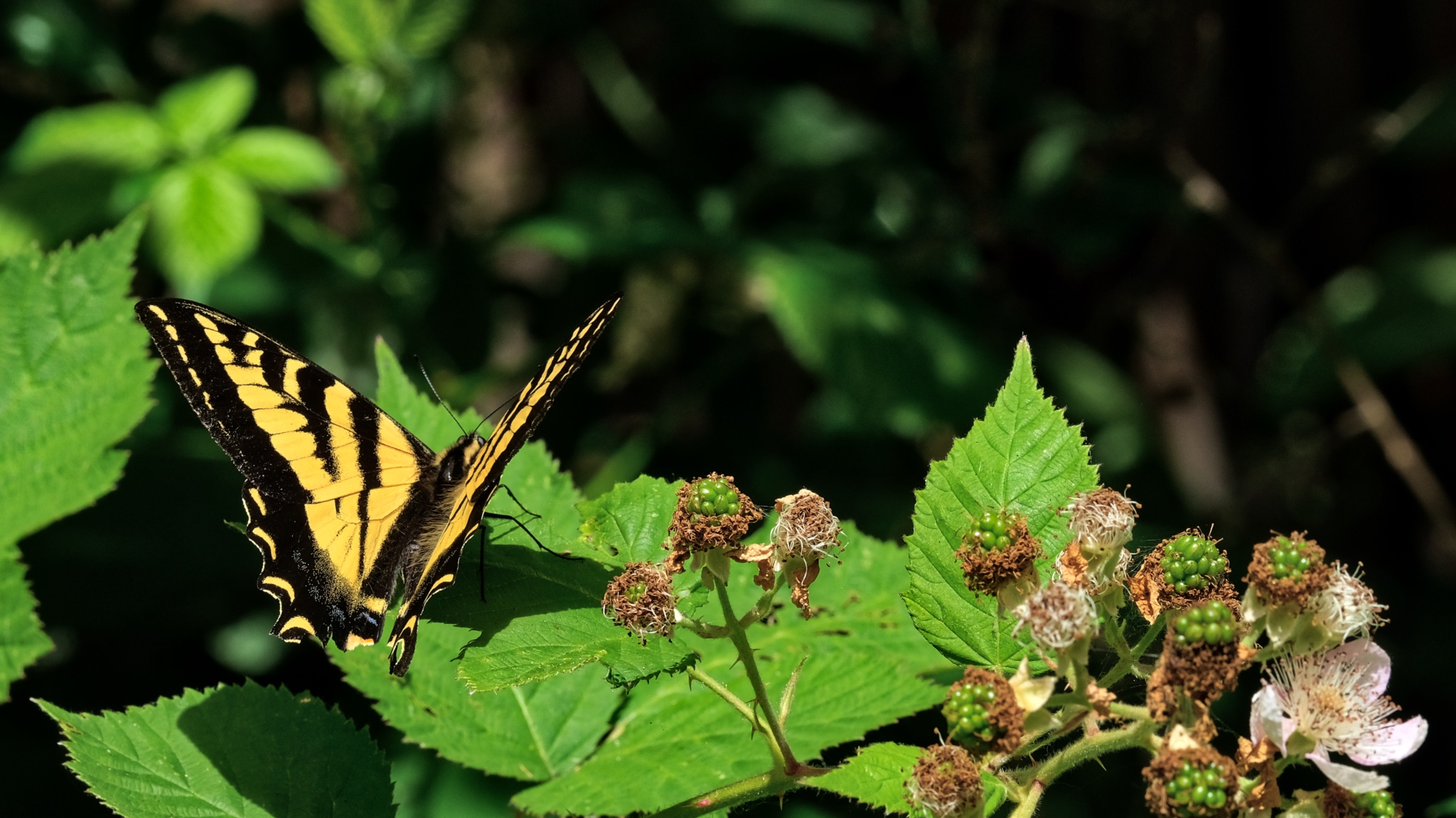 This one seemed to stay around just so I could photograph it!
This one seemed to stay around just so I could photograph it!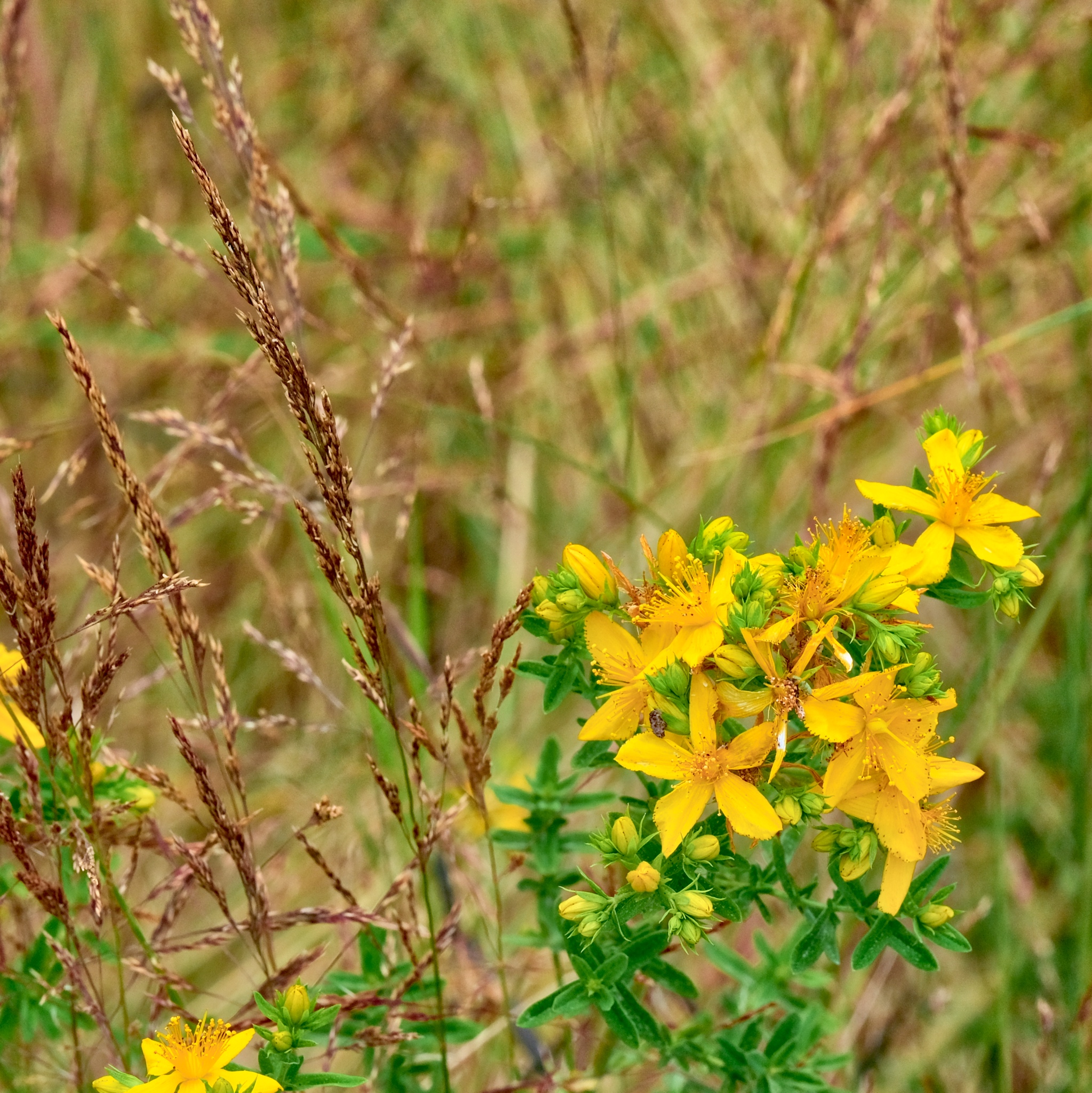 I left the cool shade of the forest for the dry gravel path through the fields and onward toward the estuary . . .
I left the cool shade of the forest for the dry gravel path through the fields and onward toward the estuary . . .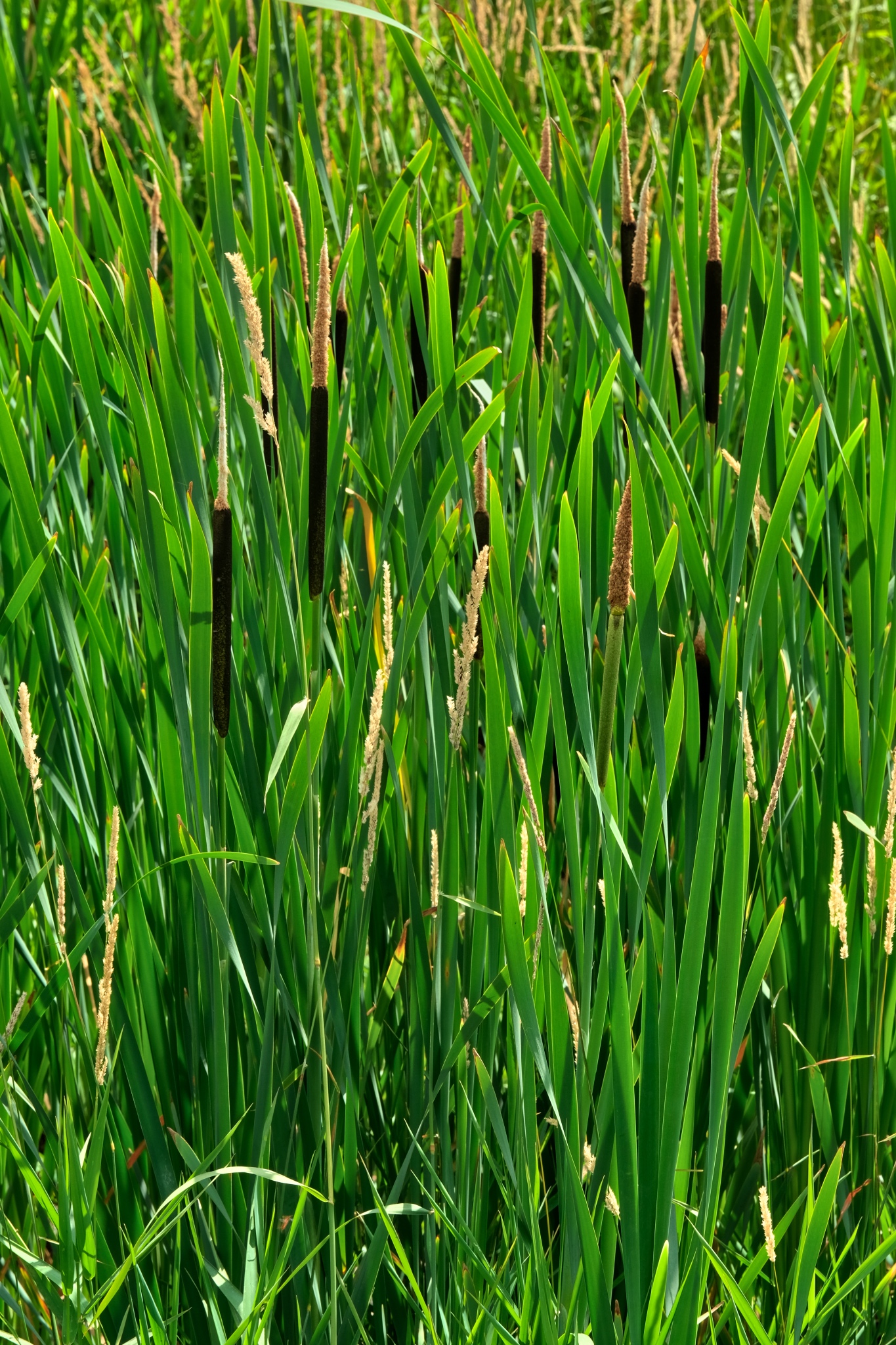 The old field drainage canals astride the dyke was full of thick bull rushes.
The old field drainage canals astride the dyke was full of thick bull rushes.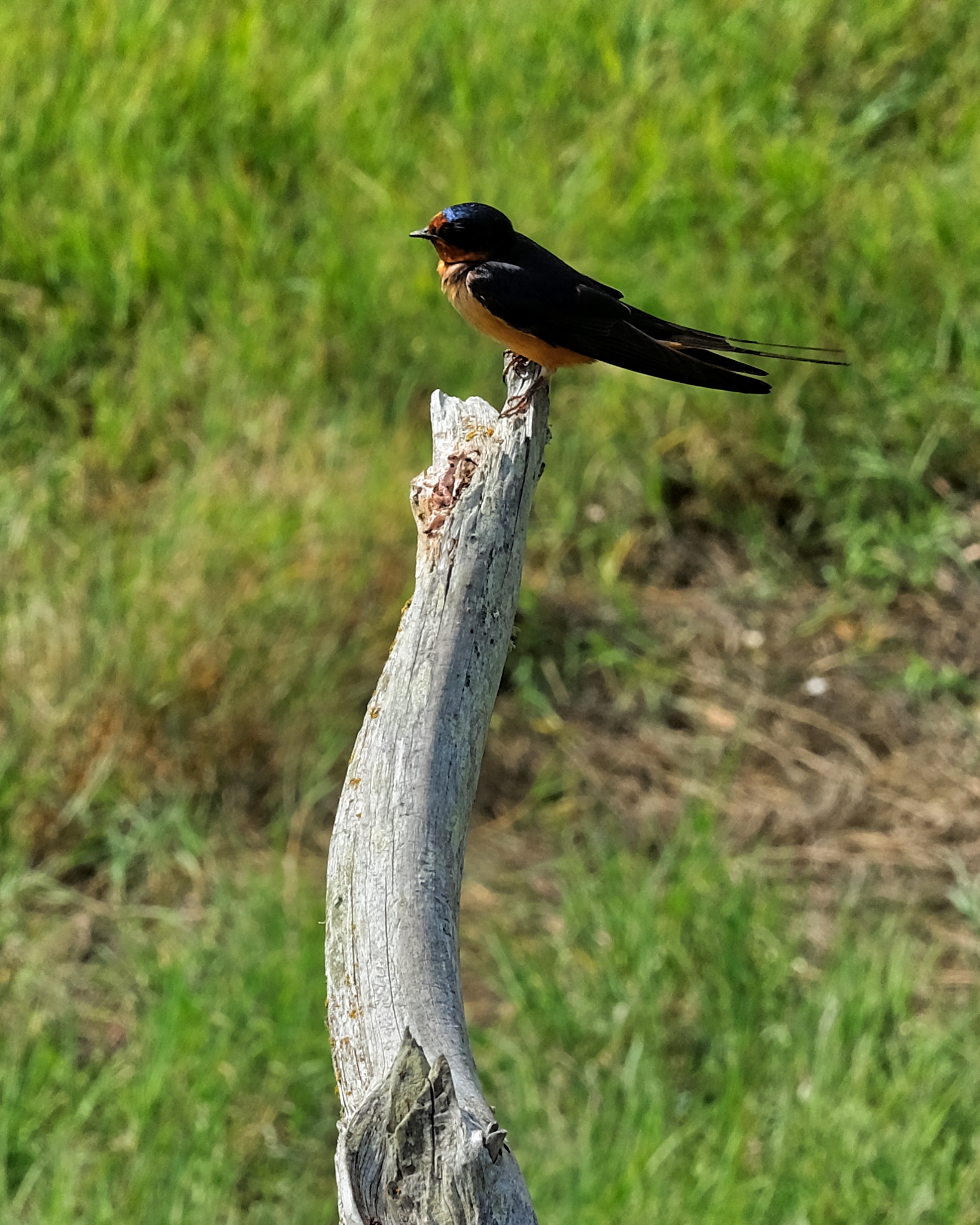 Many birds on the forest edge.
Many birds on the forest edge.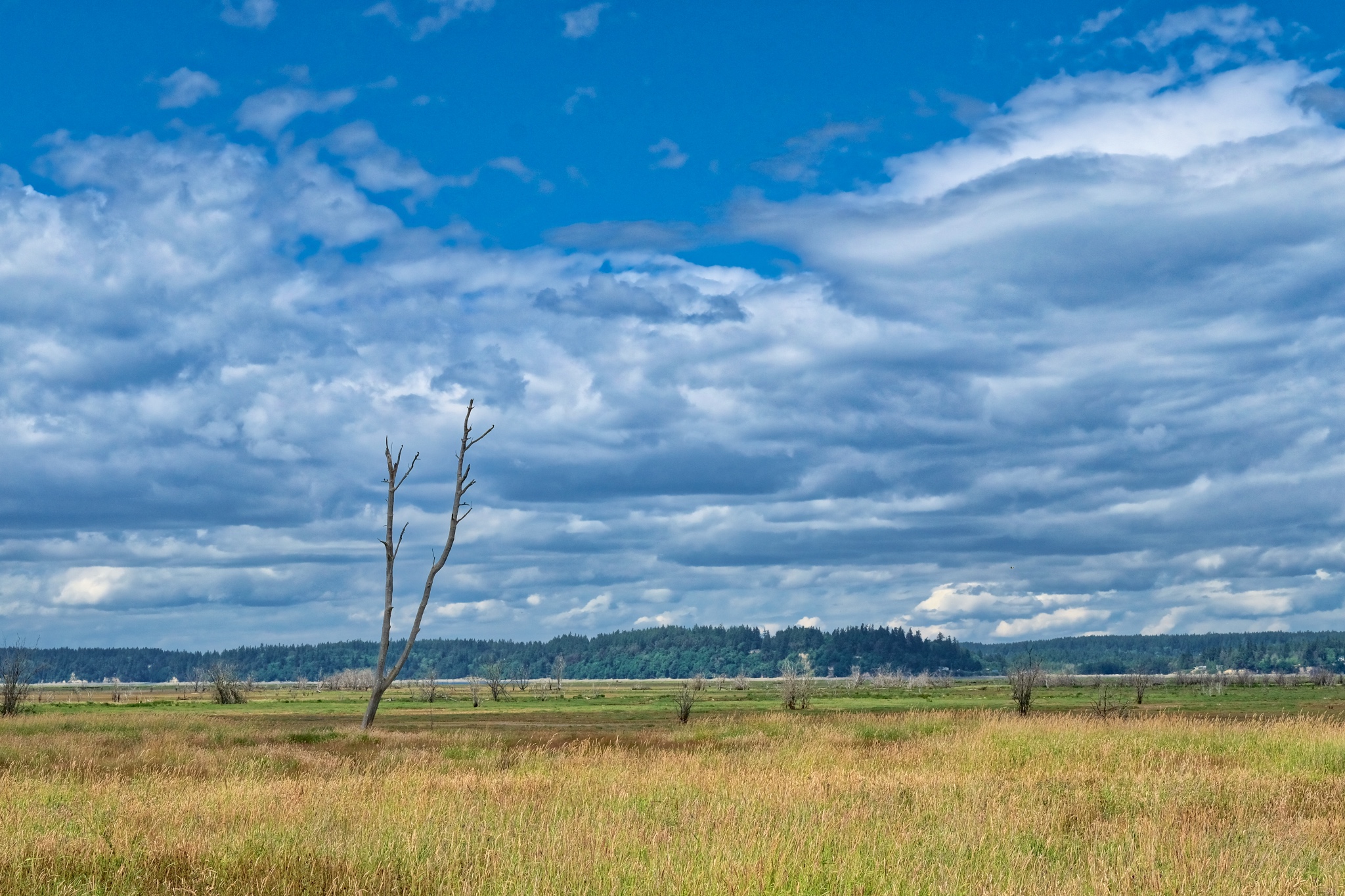 The grassy fields gradually gave way to estuarial flats.
The grassy fields gradually gave way to estuarial flats.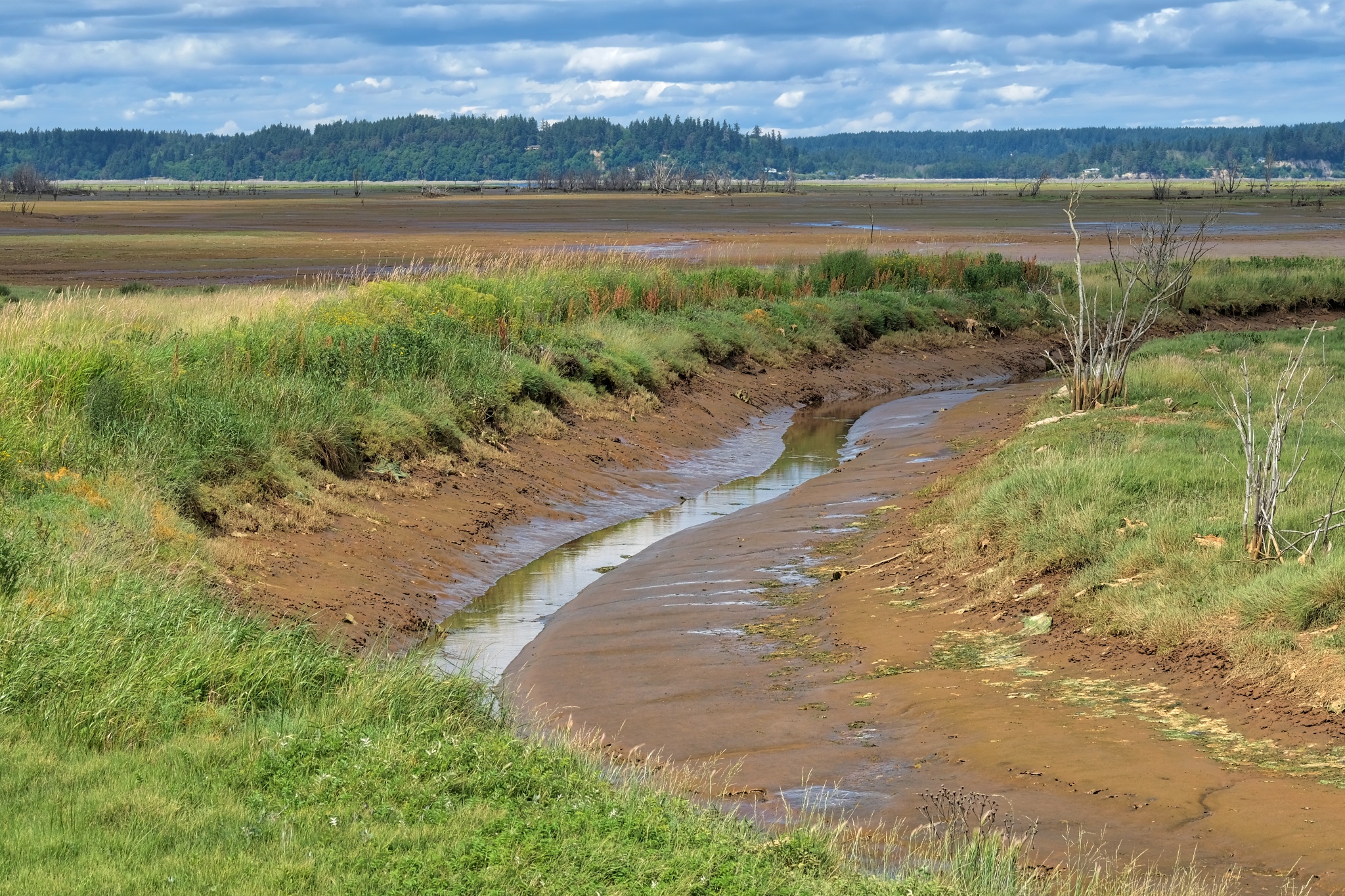 I knew the tide was going to be out when I saw these small bay arterial channels.
I knew the tide was going to be out when I saw these small bay arterial channels.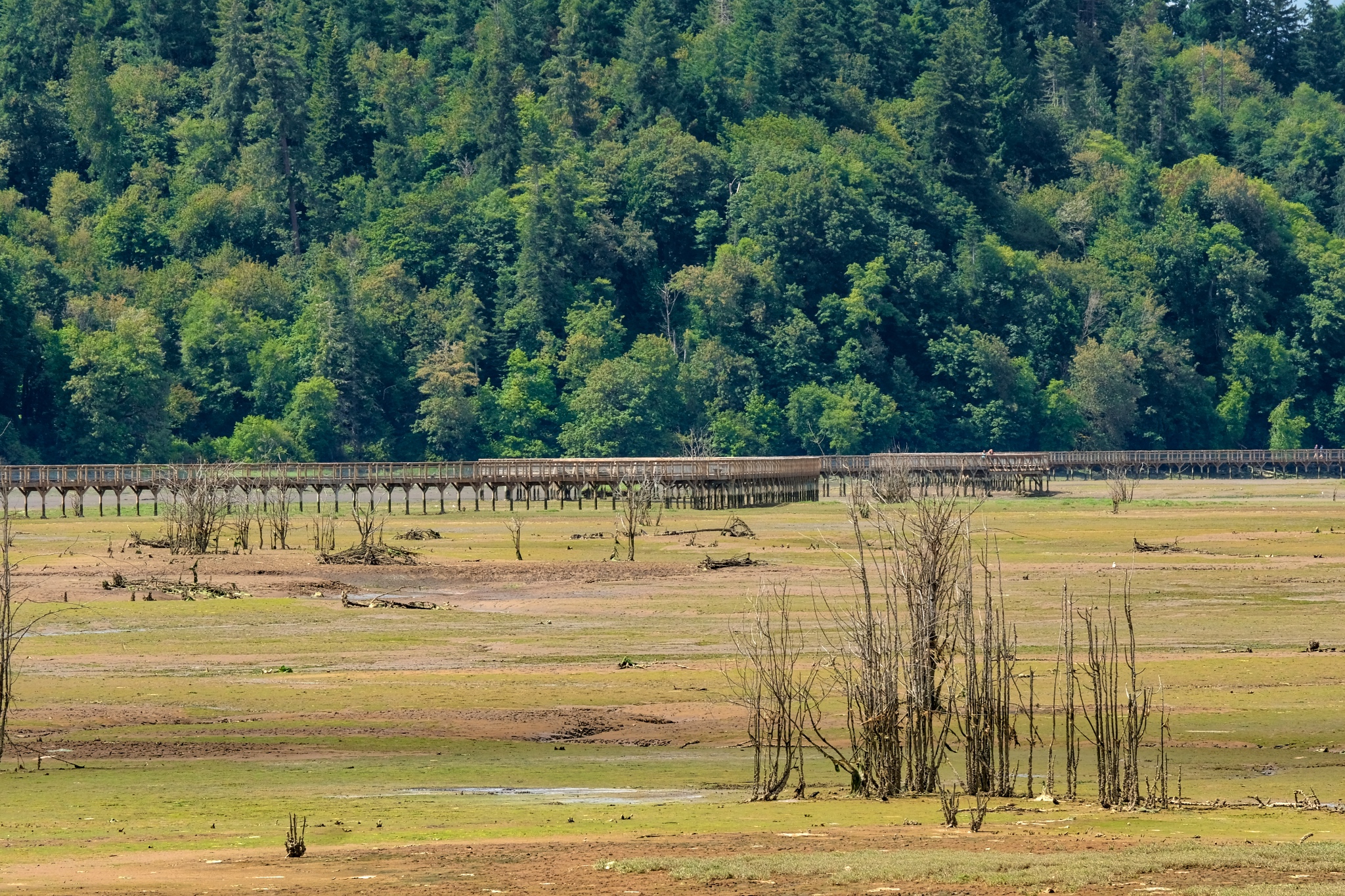 My first view across the wetlands toward the elevated observation walkway.
My first view across the wetlands toward the elevated observation walkway.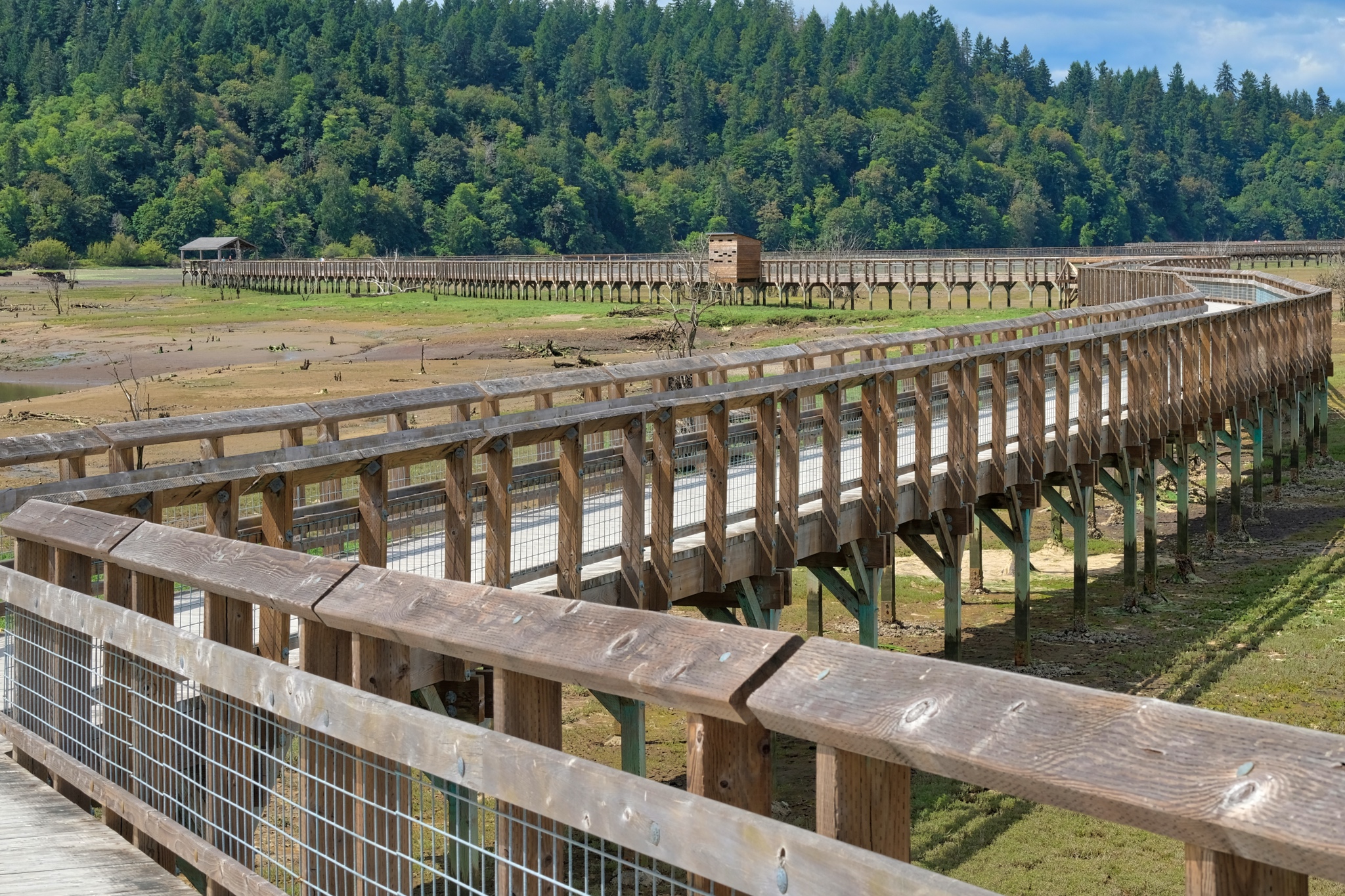 I climbed the ramp up onto the observation walkway . . . an incredible piece wooden construction in its own right.
I climbed the ramp up onto the observation walkway . . . an incredible piece wooden construction in its own right. The view back up the Nisqually River across dry sand bars.
The view back up the Nisqually River across dry sand bars.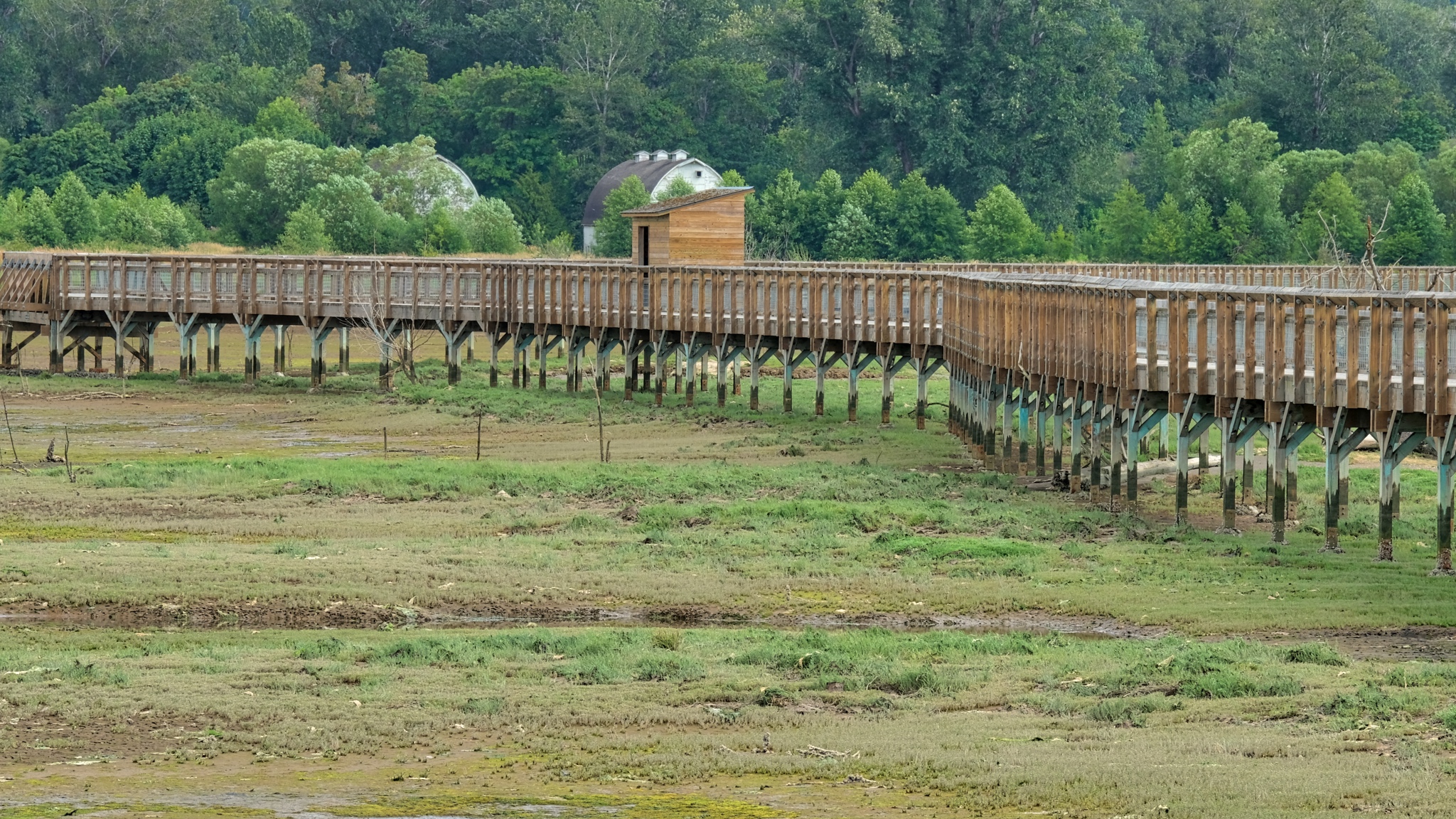 Looking back toward the tree line and the old ban from the walkway.
Looking back toward the tree line and the old ban from the walkway.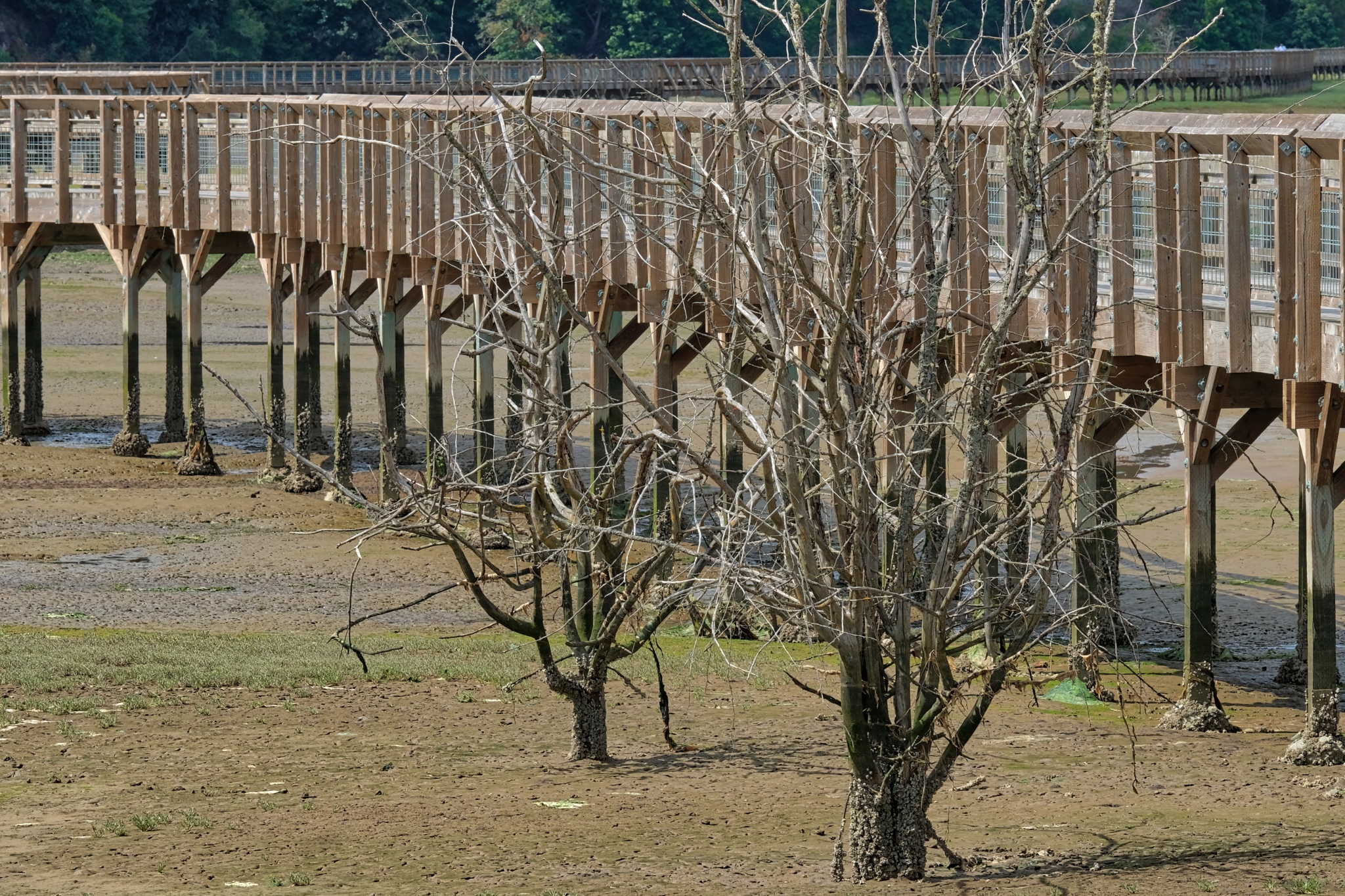 The sights from the walkway were both strange and captivating. You cannot visit these low tide estuarial landscapes any other way.
The sights from the walkway were both strange and captivating. You cannot visit these low tide estuarial landscapes any other way.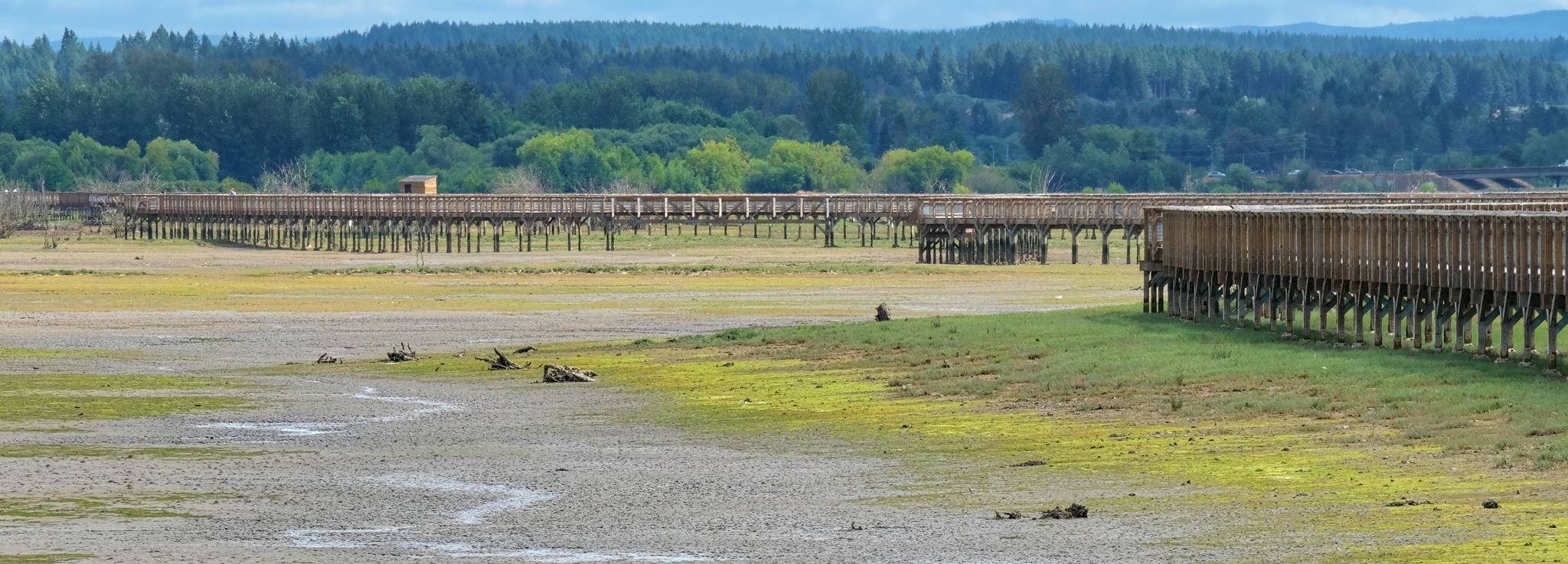 A mega-walkway!
A mega-walkway!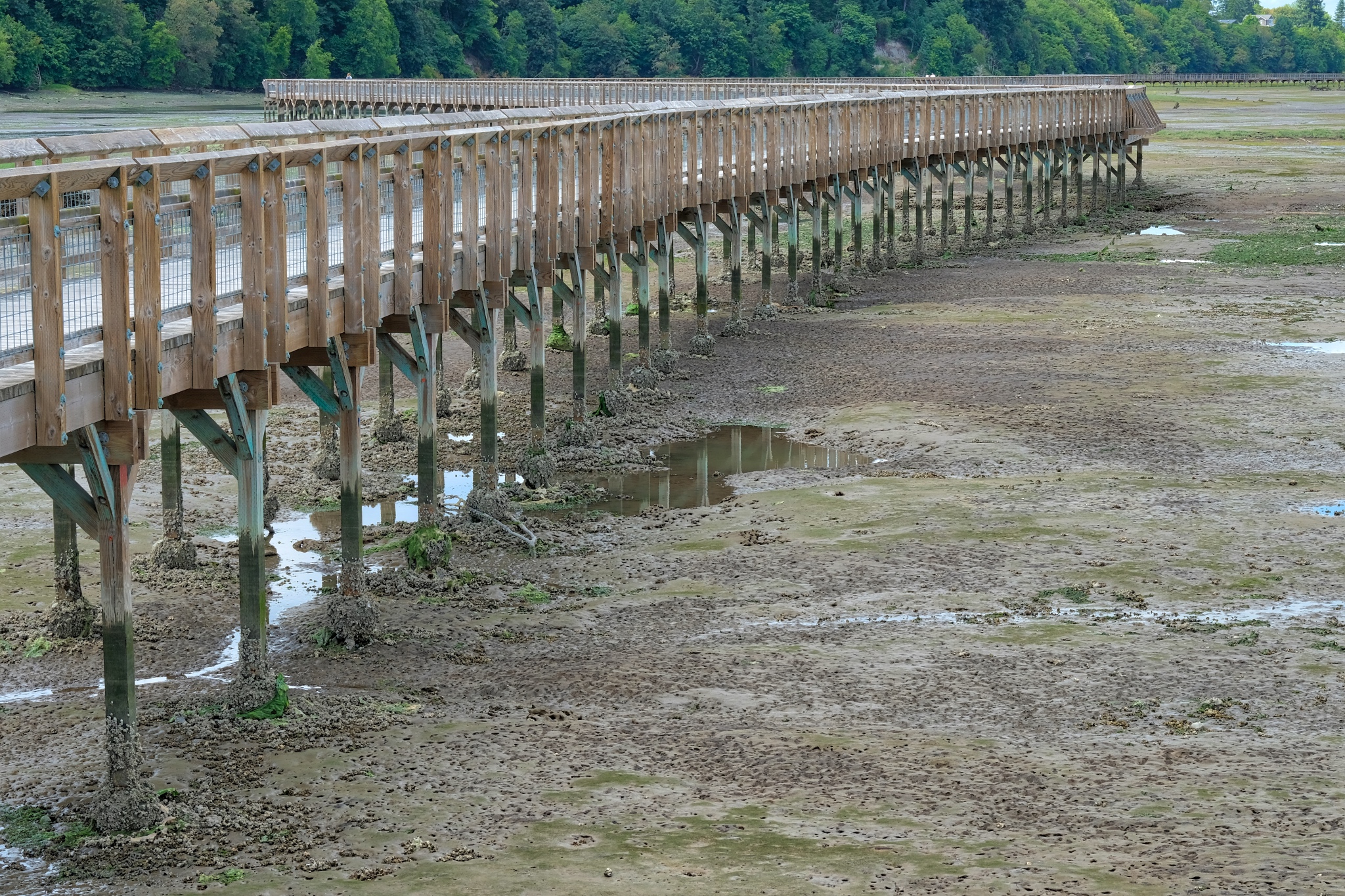 The further out I went the more it became an exposed bay floor.
The further out I went the more it became an exposed bay floor. On one side of the walkway was the Nisqually River . . . with evidence of the pilings of old commercial structures.
On one side of the walkway was the Nisqually River . . . with evidence of the pilings of old commercial structures. Some commercial project lost to time.
Some commercial project lost to time.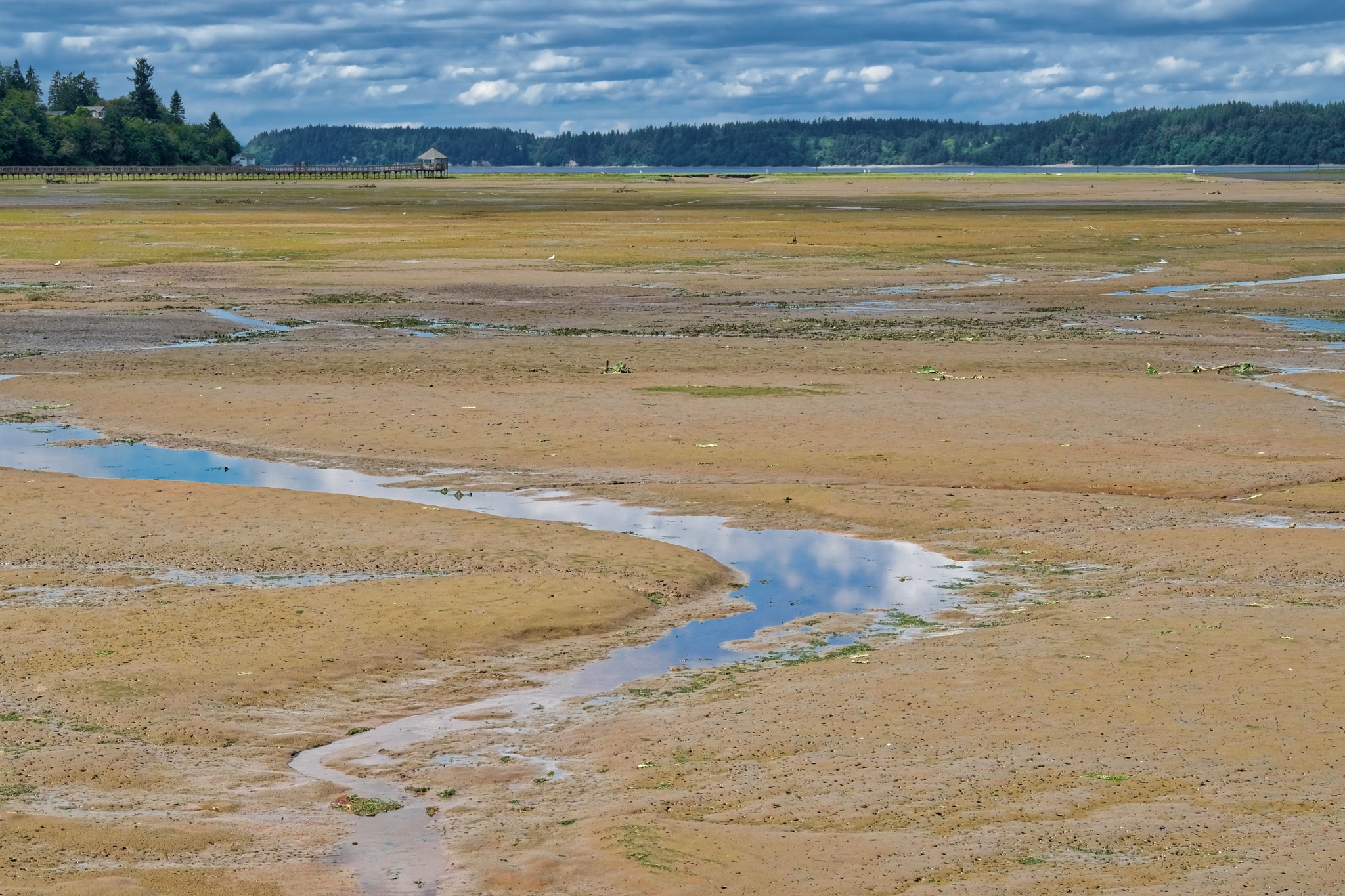 On the other side of the walkway was a vista across vast mud flats . . . loaded with very interesting objects!
On the other side of the walkway was a vista across vast mud flats . . . loaded with very interesting objects!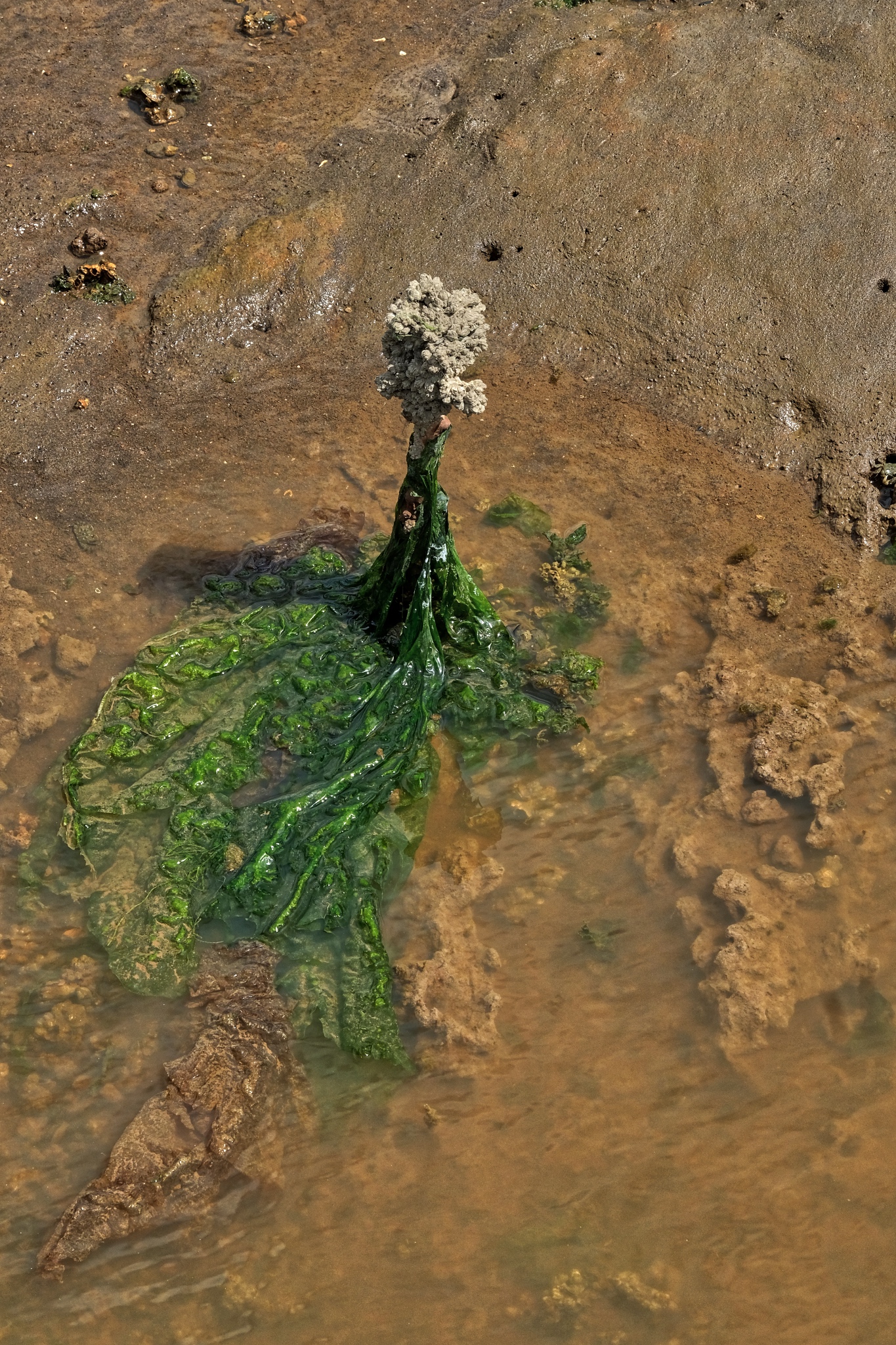 Strange things . . . . and, unfortunately all too many plastic bags!
Strange things . . . . and, unfortunately all too many plastic bags!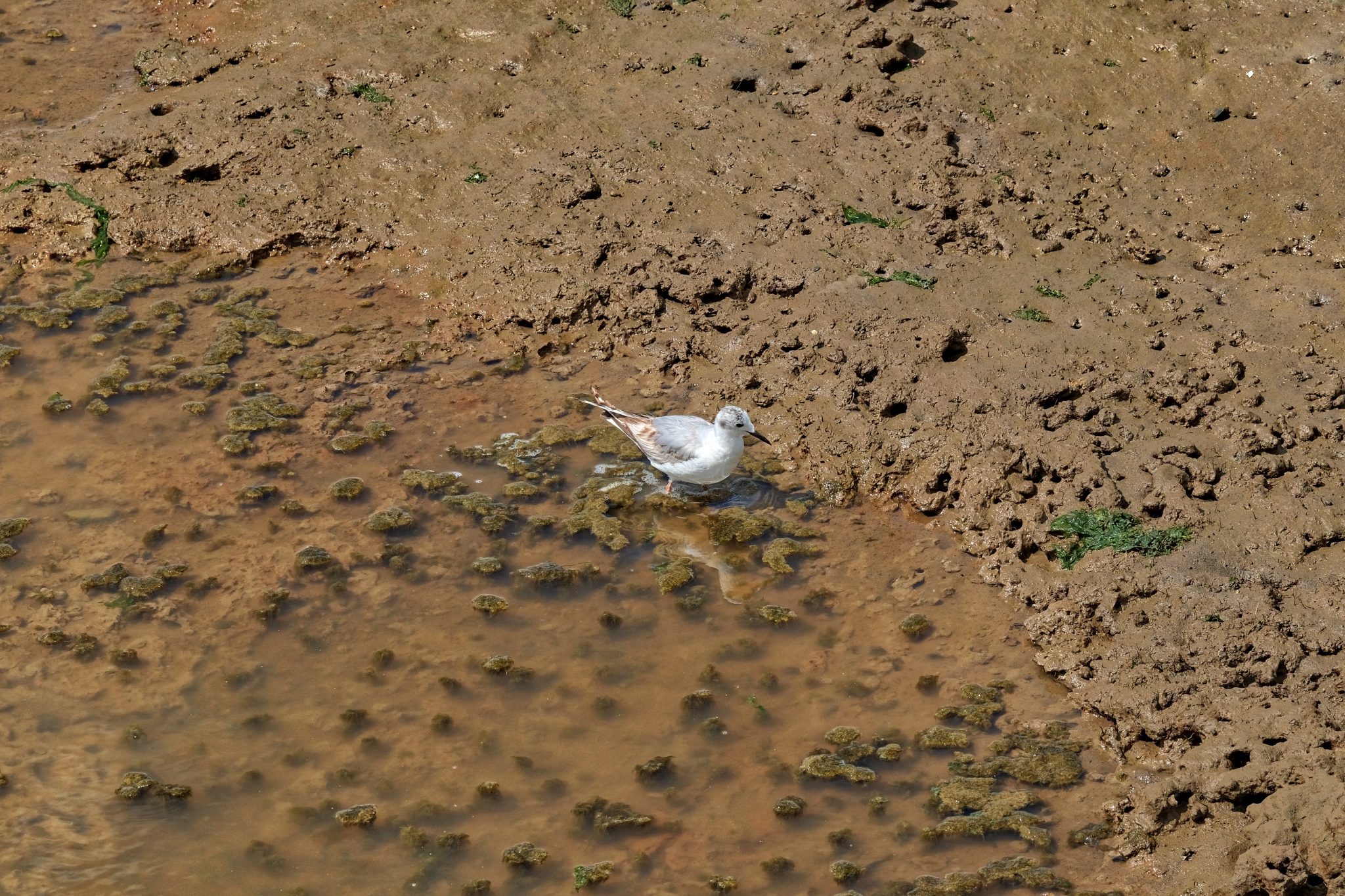 There were not as many birds as I somehow had expected . . . but there were birds.
There were not as many birds as I somehow had expected . . . but there were birds. A gull loitering in the muddy estuary . . .
A gull loitering in the muddy estuary . . . 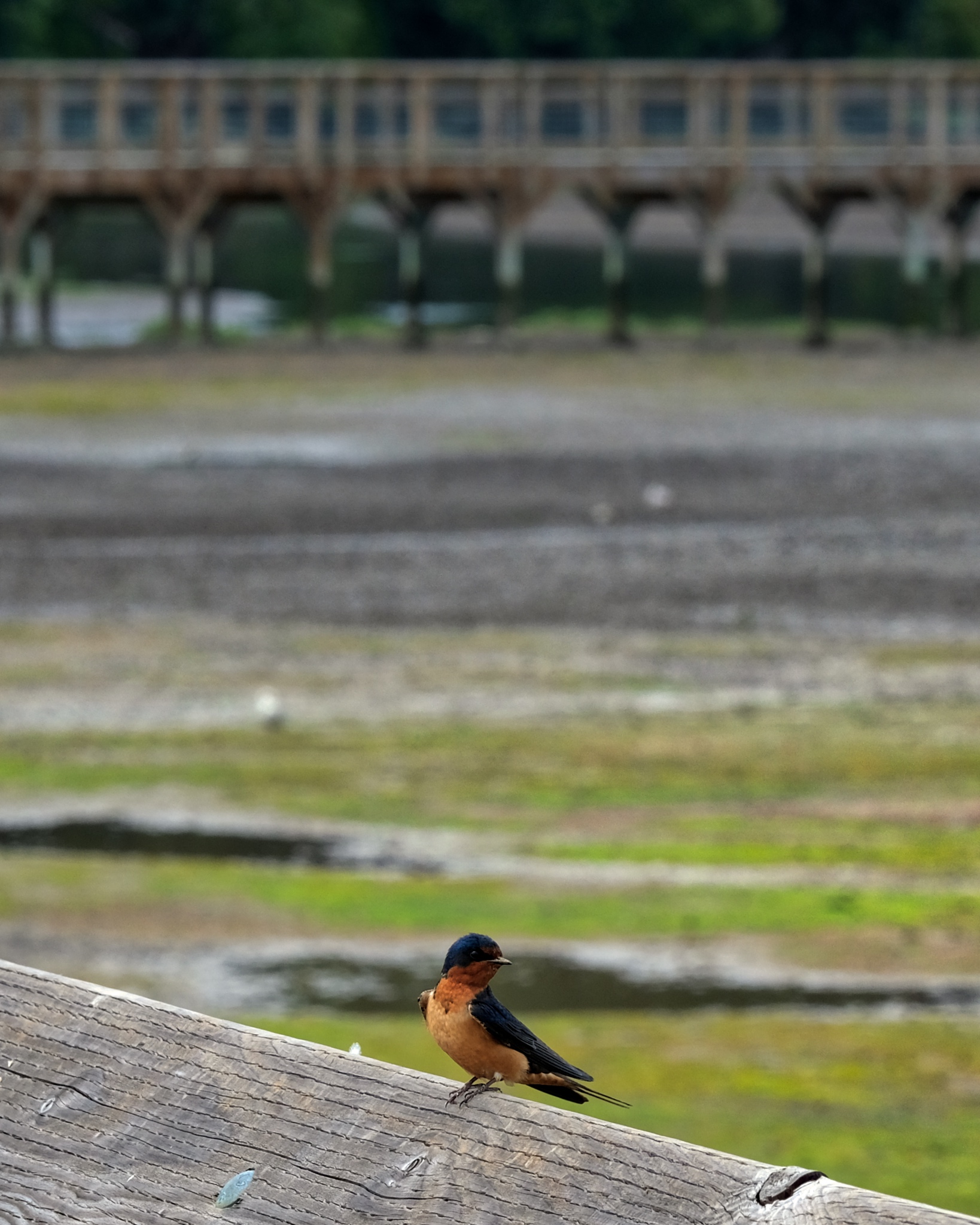 A friendly little fellow!
A friendly little fellow!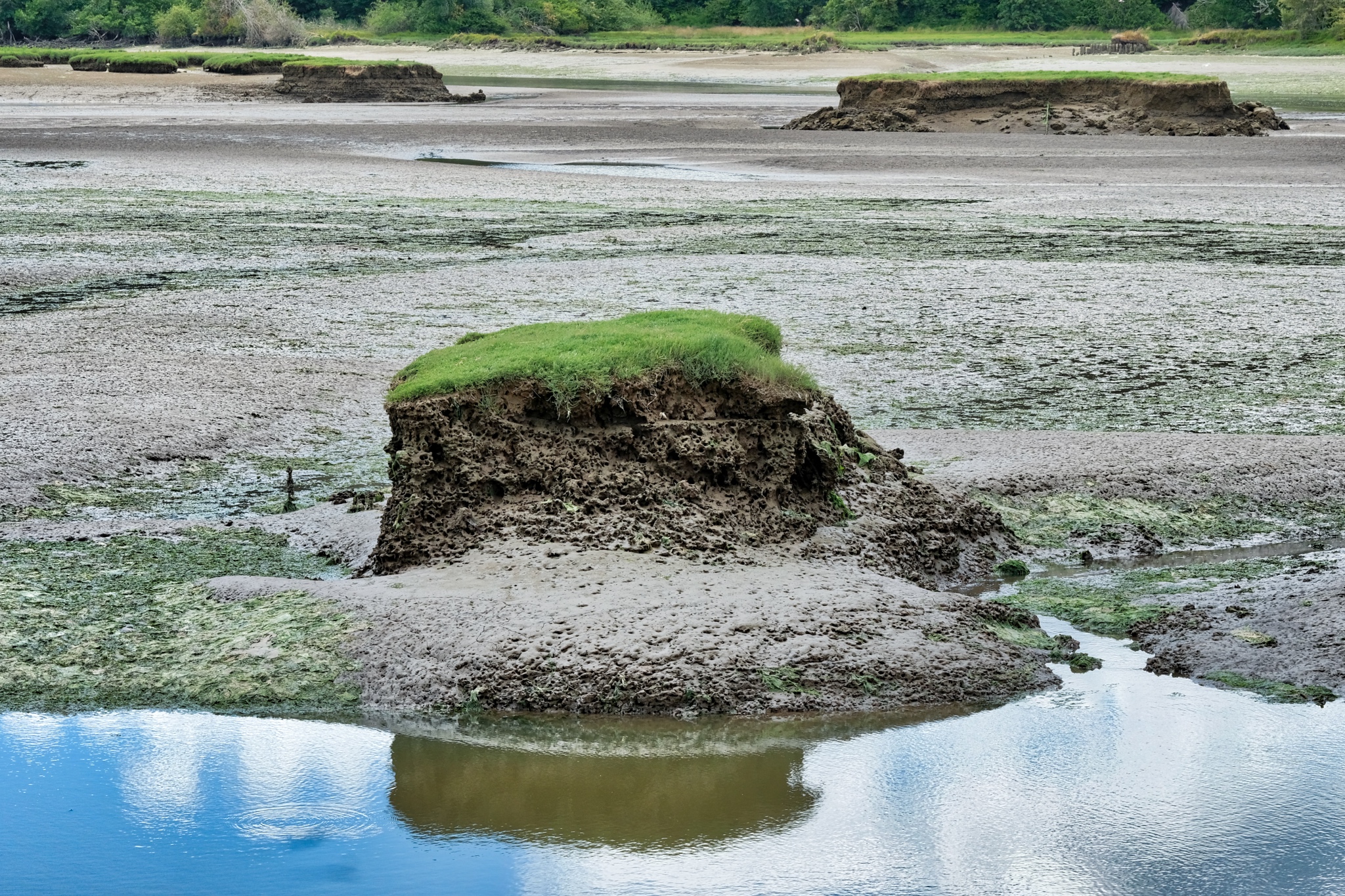 Evidence of sea level rise: the old level of the fields and 'dry' flats are eroding away with only a few small 'islands' of the old land level left. Only a few inches of sea level rise can cause this kind of erosion of wetlands.
Evidence of sea level rise: the old level of the fields and 'dry' flats are eroding away with only a few small 'islands' of the old land level left. Only a few inches of sea level rise can cause this kind of erosion of wetlands.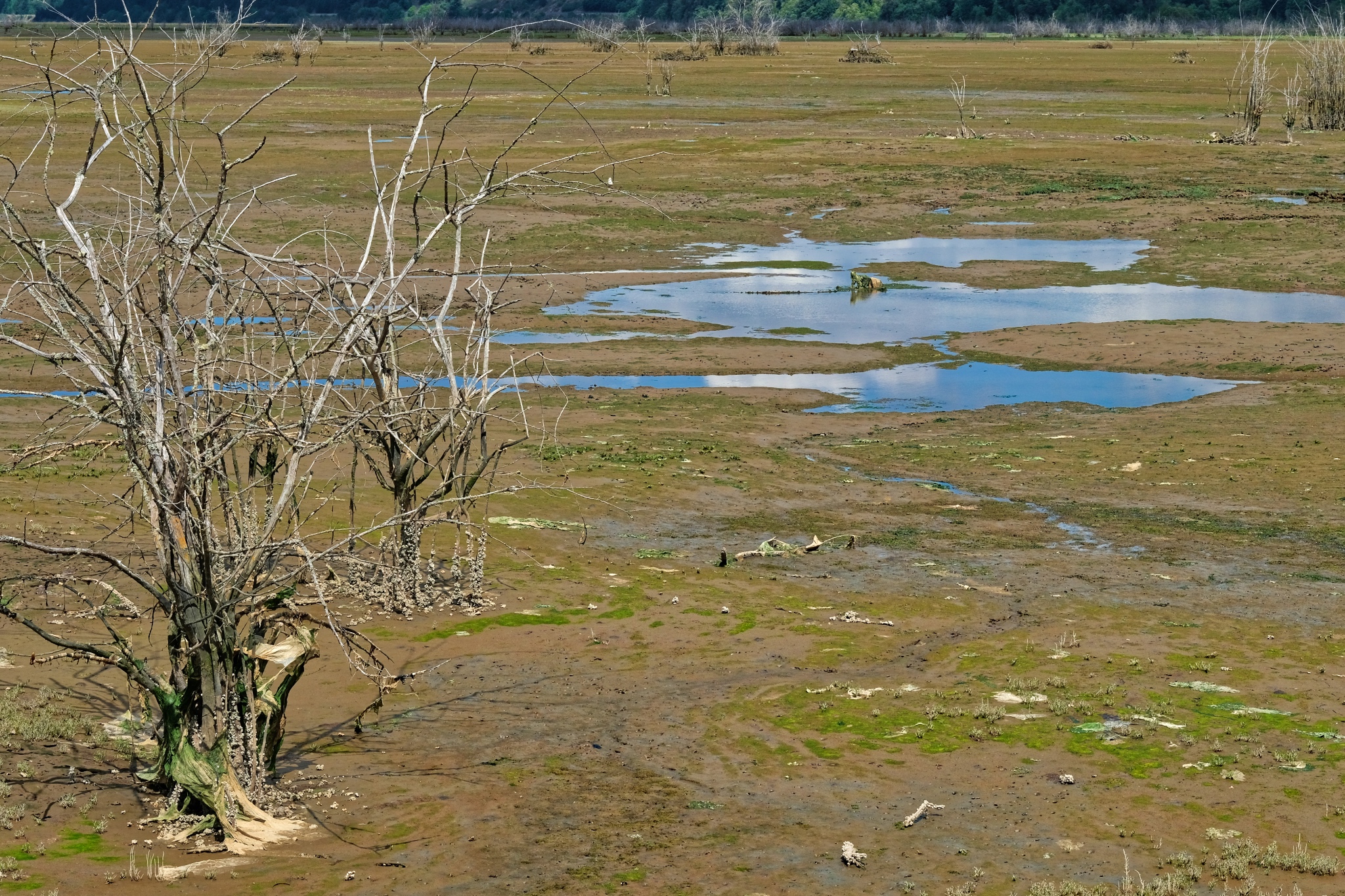 Sea water inundation into previously 'dry' areas.
Sea water inundation into previously 'dry' areas.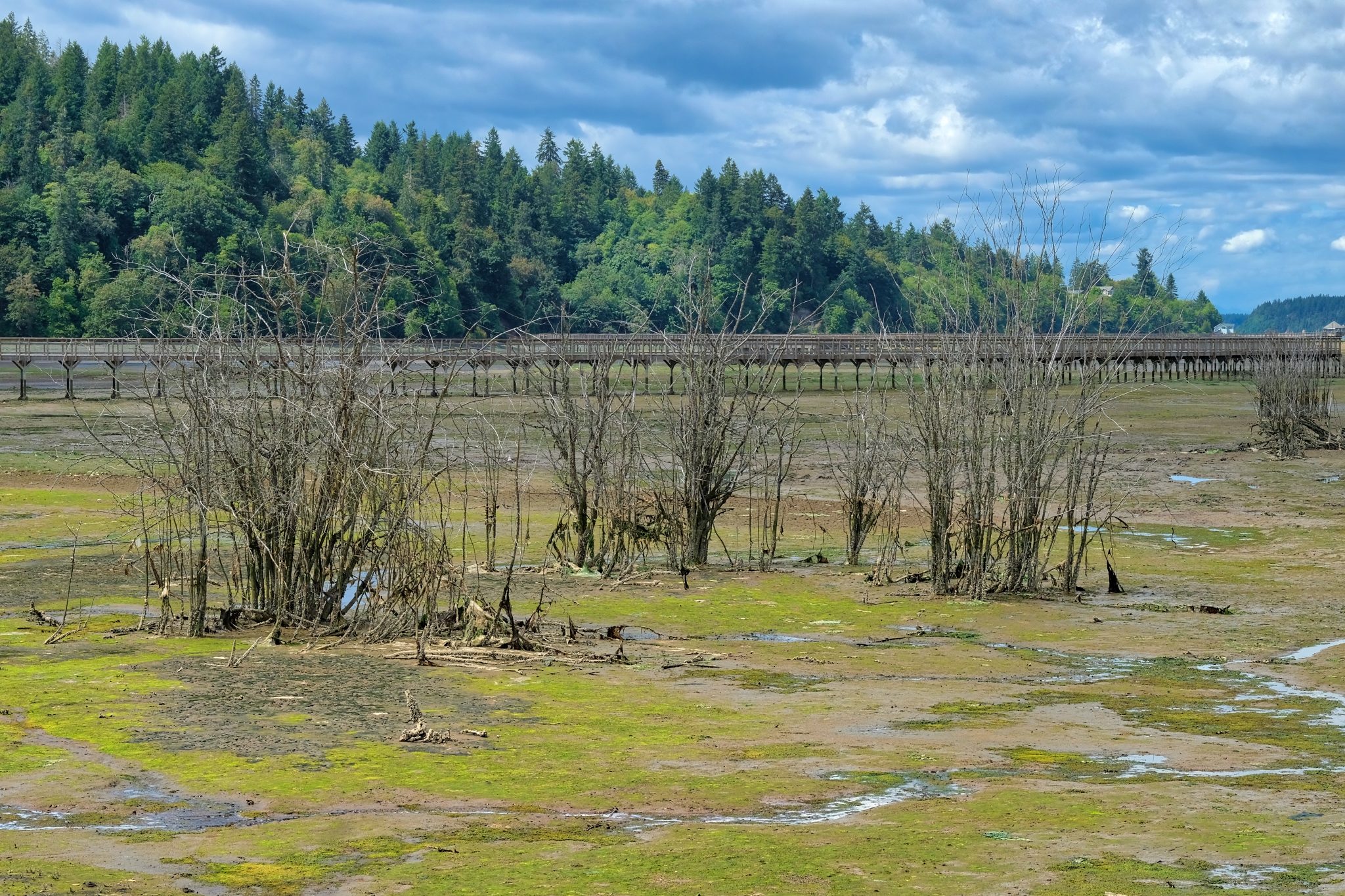 A new ecology is beginning to develop.
A new ecology is beginning to develop.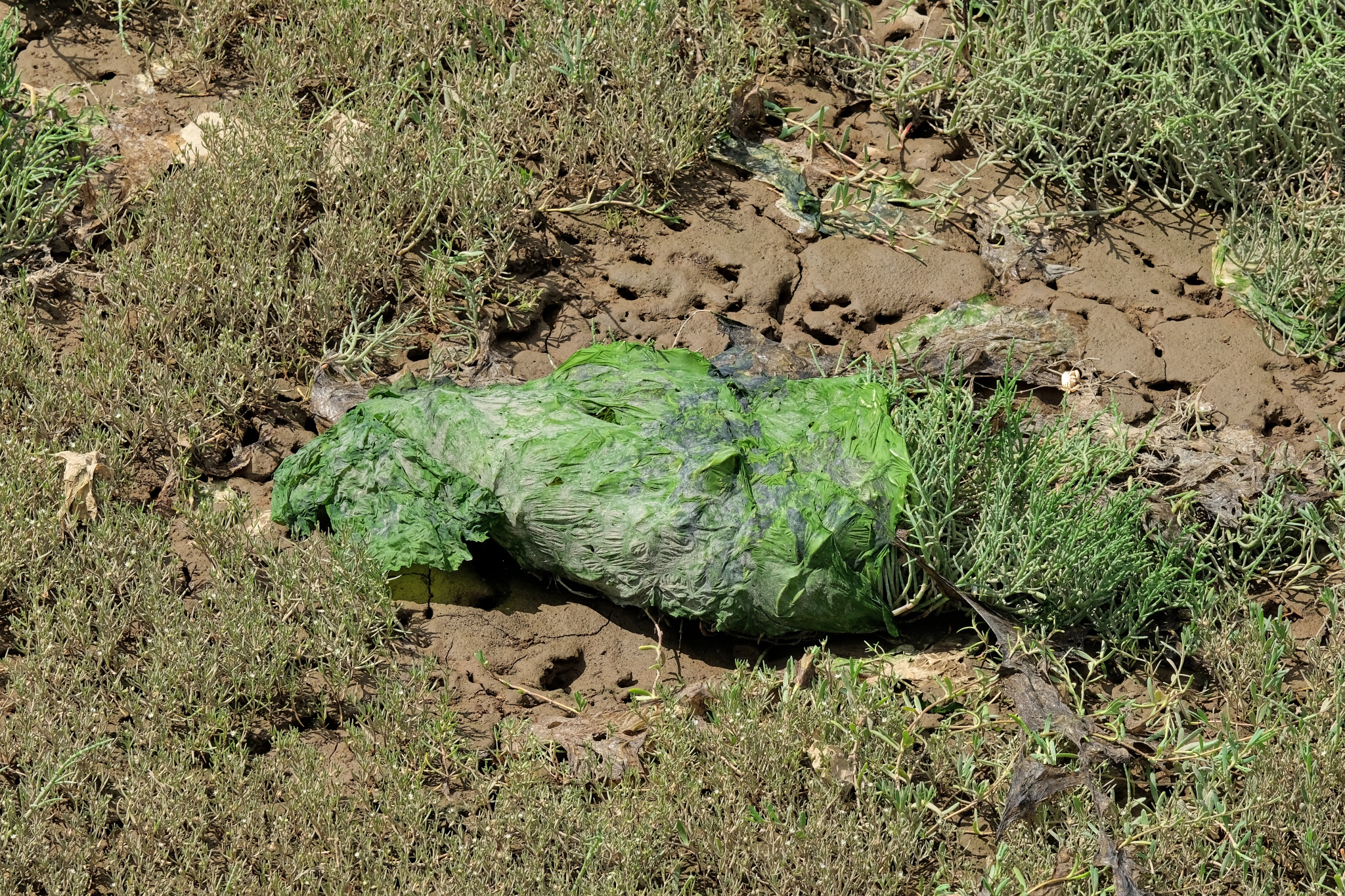 Altogether too much plastic. The Human Being!!!
Altogether too much plastic. The Human Being!!! Here and there were sand bag earthworks to direct the drainage flow under the walkway to the Nisqually River.
Here and there were sand bag earthworks to direct the drainage flow under the walkway to the Nisqually River.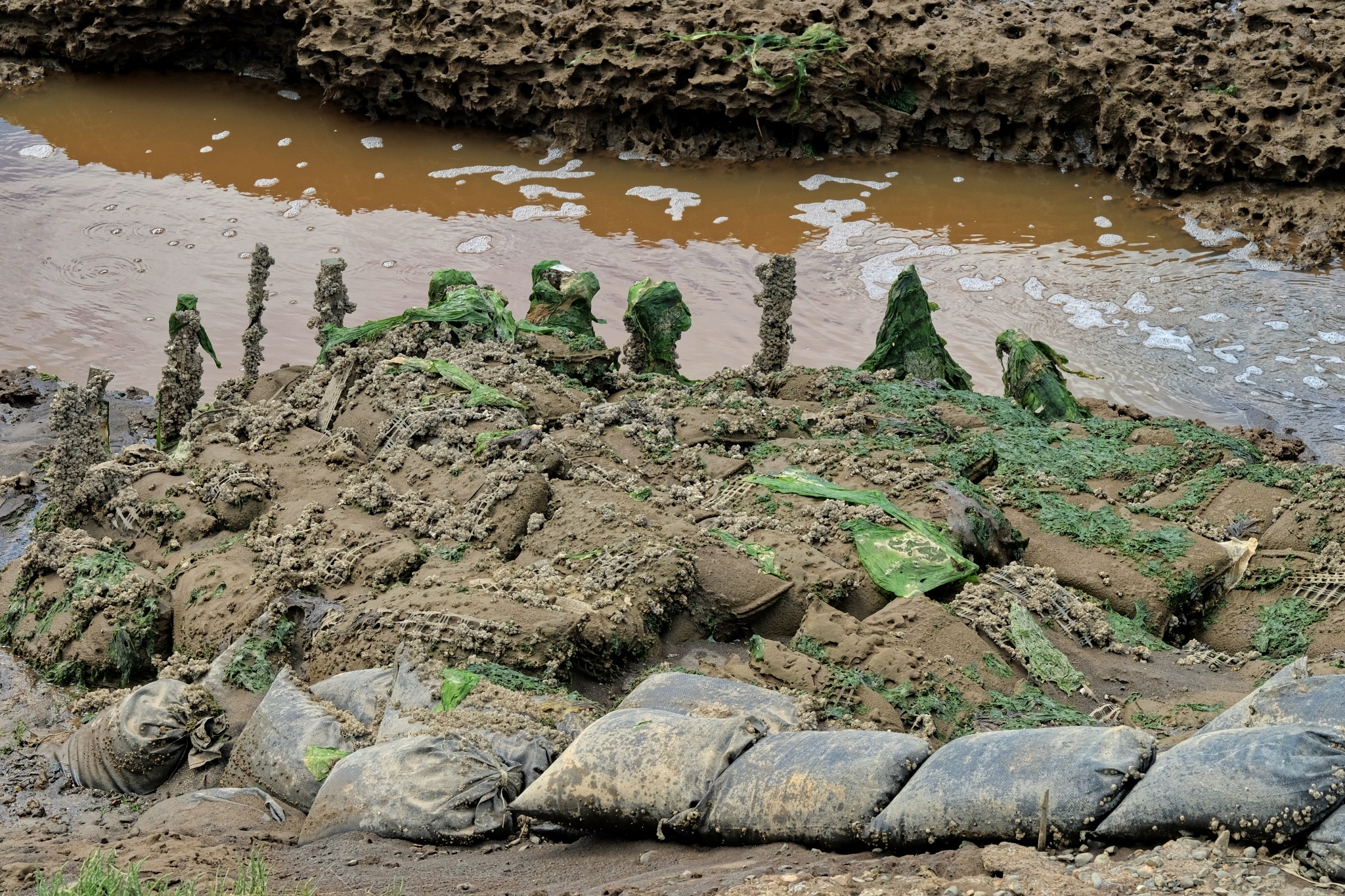 I imagine this water redirection effort to save the walkway is a never-ending chore.
I imagine this water redirection effort to save the walkway is a never-ending chore. Stumps washed down the river when it raged in winter.
Stumps washed down the river when it raged in winter.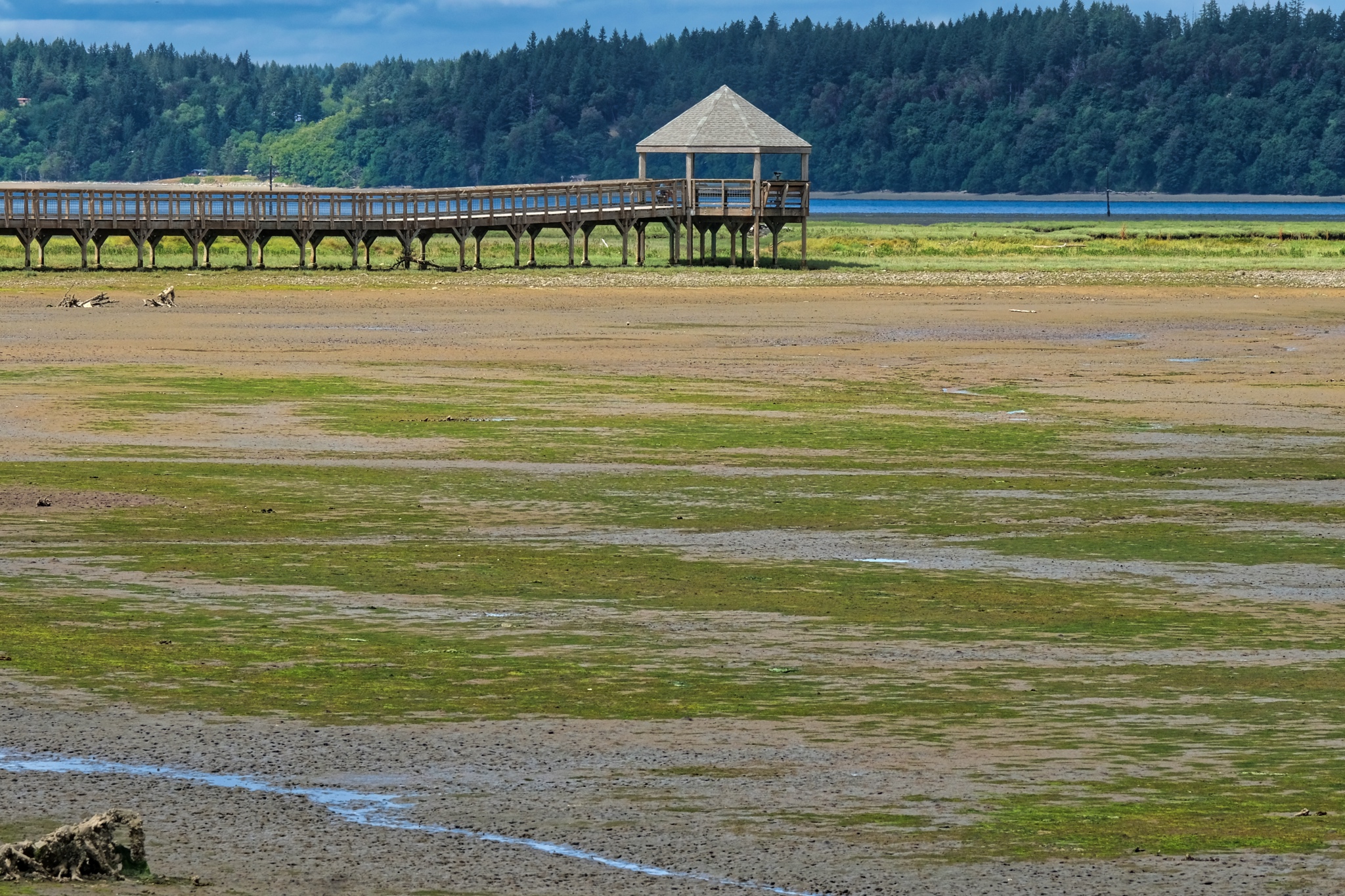 My ultimate goal, and the terminus of the walkway, was several miles from dry land!
My ultimate goal, and the terminus of the walkway, was several miles from dry land!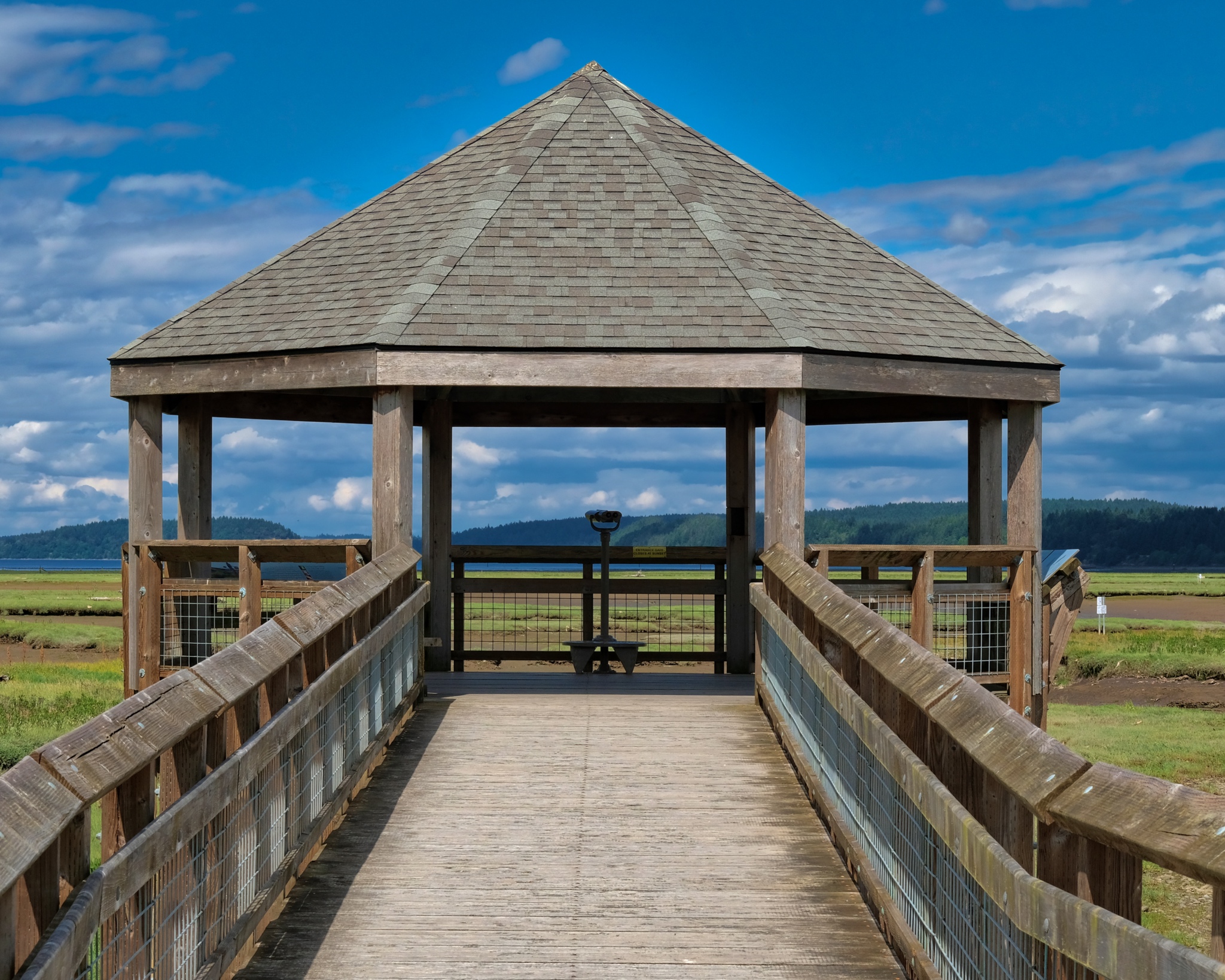 The final observation pavilion was not too far from the actual Puget Sound.
The final observation pavilion was not too far from the actual Puget Sound.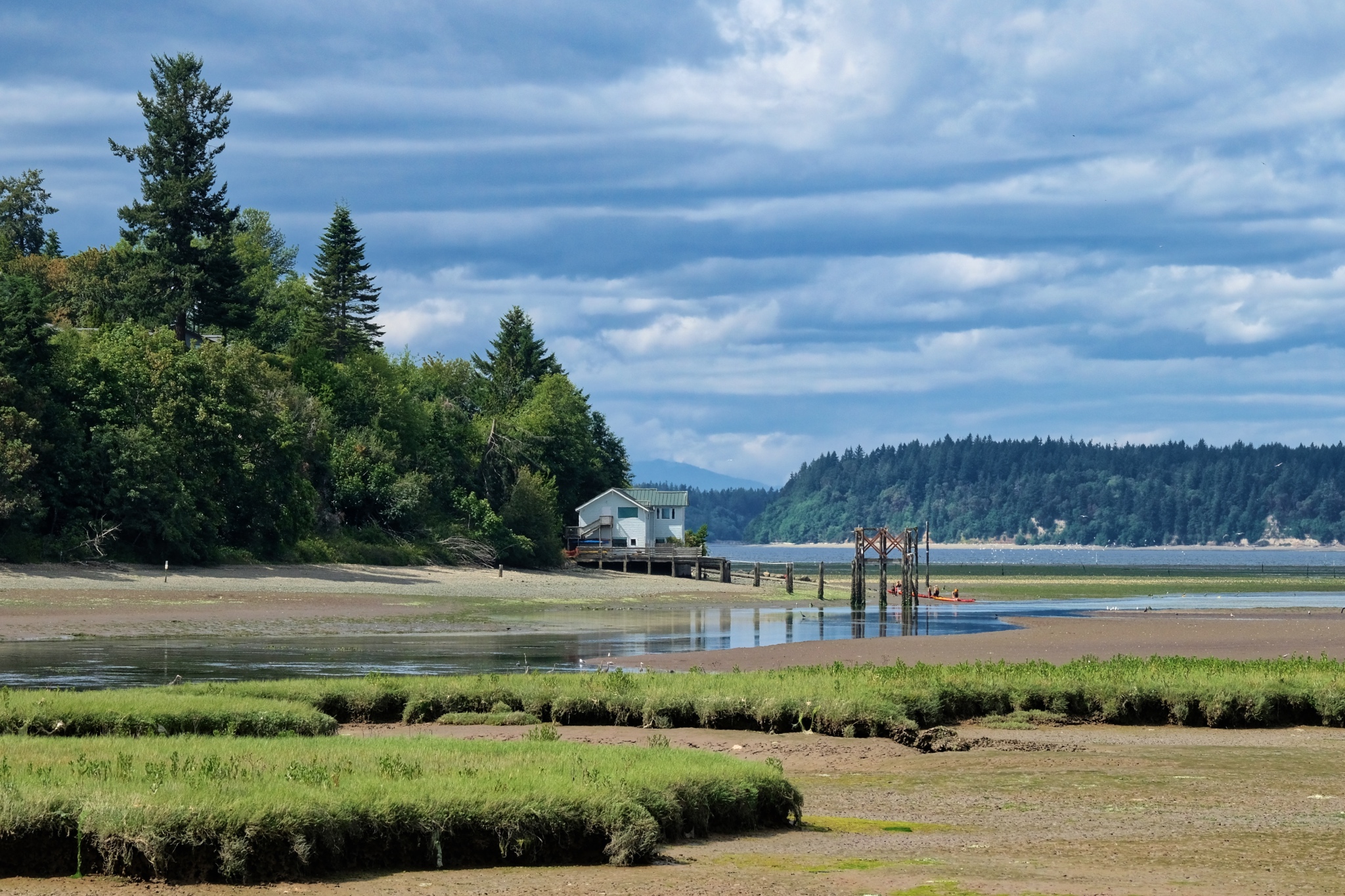
The view from the last observation pavilion.
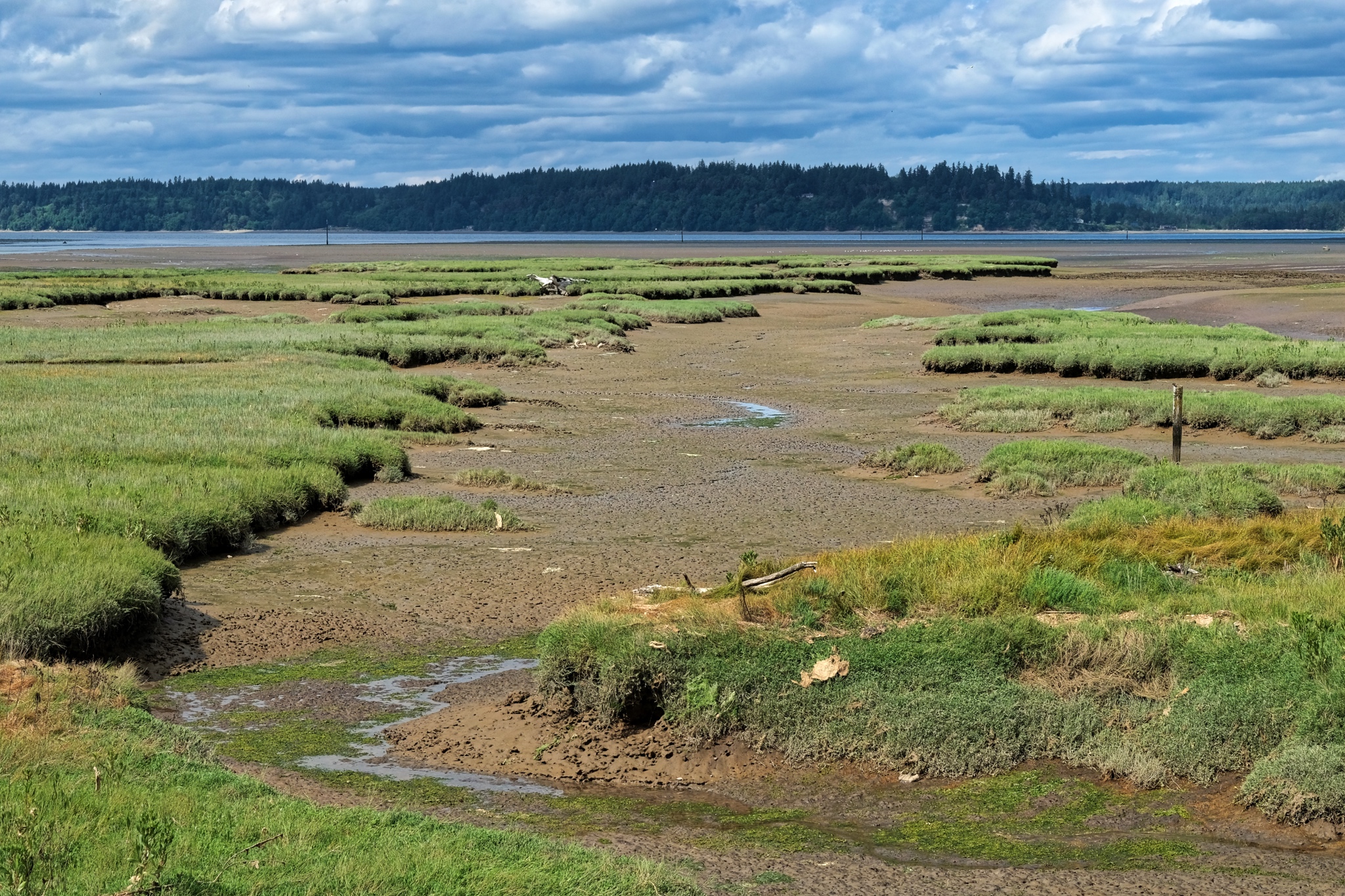 Puget Sound in the background.
Puget Sound in the background.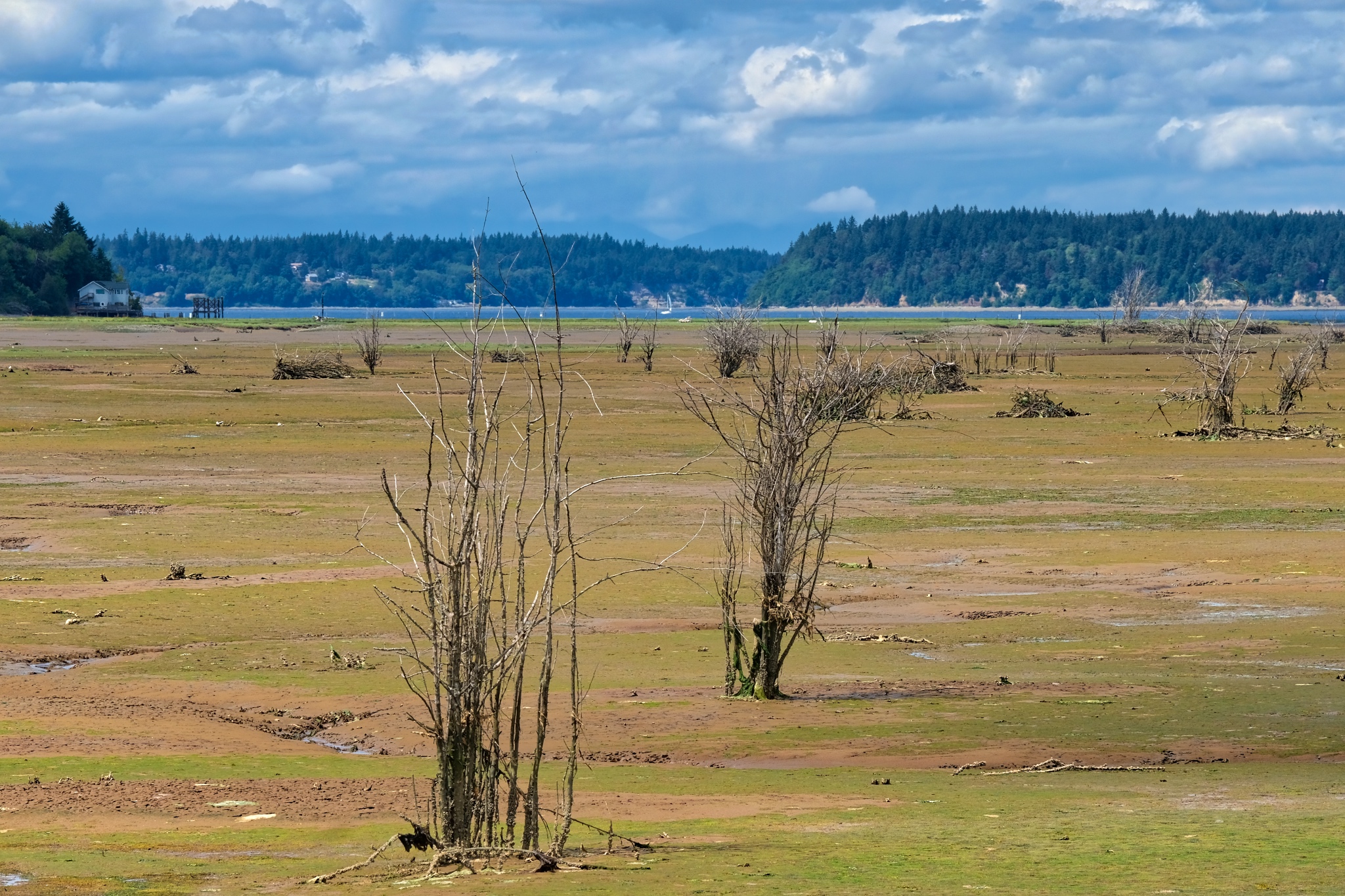 It was a beautiful day to be out in the world . . . making the most of the supramundane.
It was a beautiful day to be out in the world . . . making the most of the supramundane.